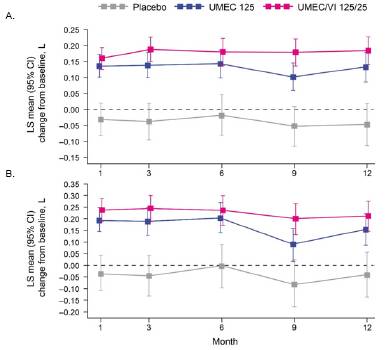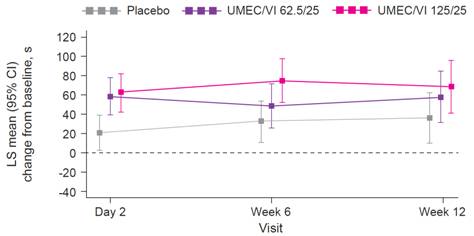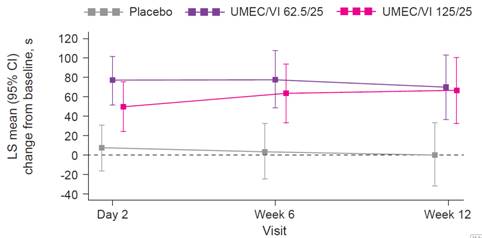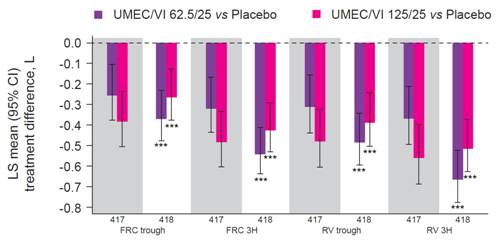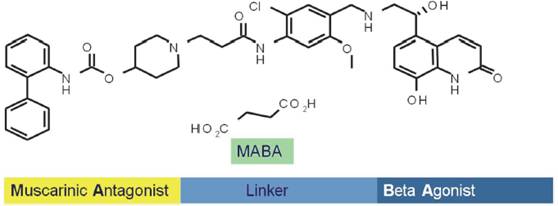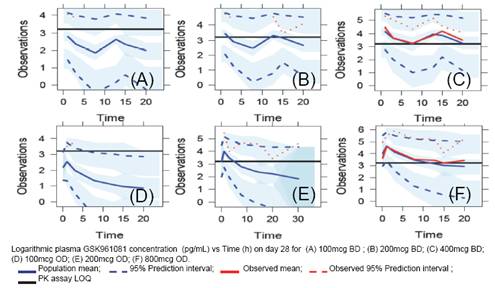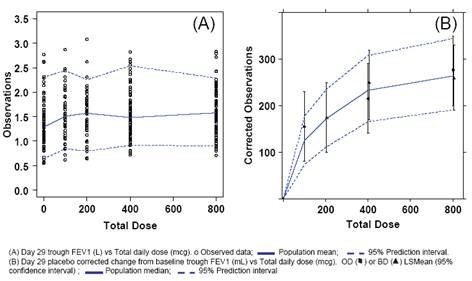@_P#K4`7Q-$>DB'_@0I=Z'^(?G6=/
MH_F01)$]O'(H^>3[*C;_`,.U)<:,LGE^0UO#M'S_`.BHVX^O/2@#3R/44M9D
M^BH]PCPF&*(8W1_9U;=SSSVH?18VNUD0QI`/O1>4"6_X%G(H`TZ*S!HJ?;/,
M\Q?L^/\`4A,=O[VBJMT[R3;X3G;$`5V_\"!R:`-2BLNWT;RY)#-^9D:I+L_NF),_G
MB@"]15+[)>Y/_$R?'8>4G^%+]FO?8Q$;W]_G)F\H7?FZ_!:PK,/*B_L\2!U`!#[F4Y.2?I7>5R
M^H1ZF&U.T^P7UT]XX:VN(;@+'$`!M_B!3:>3@'/OTH`Z:,YC4[MV0/FQC/O3
MJ9"LBP1K*P>0*`S`=3CDT^@`HHIKR)&,NZH/5CB@!U)6%-?:K::S;)+/:R0W
M,K*+6.,[TB`)\S?GV&1C'S`5'I&JZE-=6+WLD#P:I`\T4<<94P8P0">?\:G&0`"#_`(^[G_>7_P!!%6*`"BBB@`HHHH`****`
M"BBB@`HHHH`****`"J]W8VE_$(KRUAN8P=P65`P!]<&K%%`&):>'[BTU::^7
M5I76=\O$T*'Y.R!L9"CL!4FF^'TT^ZCE-Y/<1VZ-':Q2;<0*Q!(!`R>@&3V%
M:#WEM'>16;S(+B96>.,GYF"XR<>V14%GK.G7]U+:VEY'--#G>BGI@X./7GCB
M@"X_W&^E4M#_`.0!I_\`UZQ_^@BKK_<;Z52T/_D`:?\`]>L?_H(H`OT444`%
M%%%`!1110`4444`%%%%`!1110`4444`%%%%`!1110`4444`,D5F0A'V-V;&<
M5':P/;Q"-I3(!P,J!BIZ*`"BBB@`HHHH`****`"BBB@`HHHH`****`"BBB@`
MHHHH`****`"BBB@"O!_Q]W/^\O\`Z"*L57BM%AE,@EE8MU#/D&K%`!1110`4
M444`%%%%`!1110`4444`%%%%`!56_-^(1_9RV[2[N1<,P7;^`/-6J*`./2QU
MQ?%MK=7=G;-YGGJUQ'.QV1X4*N-G&/3/)+&I-"662ZTBW^QW$+Z9:R17+21%
M%W':``3PV2"W&:ZRB@"E>:>+I_,-W=PX7&V&8J/R]:K:'>6B:#IZFZAR+6,'
M,@S]T5K54.E:<3DZ?:_]^5_PH`D^W6?_`#]0_P#?P4?;K/\`Y^H?^_@J/^R=
M-_Z!]K_WY7_"D.DZ=@XT^U_[\K_A0!+]NM/^?J'_`+^"C[=9_P#/U#_W\%4=
M,T2S@TNUAN-/M?.CA17_`'2GY@!GG'-6O[)TW_H'VO\`WY7_``H`D^W6?_/U
M#_W\%'VZS_Y^H?\`OX*C_LG3?^@?:_\`?E?\*/[)TW_H'VO_`'Y7_"@"3[=9
M_P#/U#_W\%'VZS_Y^H?^_@J/^R=-_P"@?:_]^5_PH_LG3?\`H'VO_?E?\*`)
M/MUG_P`_4/\`W\%'VZS_`.?J'_OX*C_LG3?^@?:_]^5_PH_LG3?^@?:_]^5_
MPH`D^W6?_/U#_P!_!1]NL_\`GZA_[^"H_P"R=-_Z!]K_`-^5_P`*/[)TW_H'
MVO\`WY7_``H`D^W6?_/U#_W\%'VZS_Y^H?\`OX*C_LG3?^@?:_\`?E?\*/[)
MTW_H'VO_`'Y7_"@"3[=9_P#/U#_W\%'VZS_Y^H?^_@J/^R=-_P"@?:_]^5_P
MH_LG3?\`H'VO_?E?\*`)/MUG_P`_4/\`W\%'VZS_`.?J'_OX*C_LG3?^@?:_
M]^5_PH_LG3?^@?:_]^5_PH`D^W6?_/U#_P!_!1]NL_\`GZA_[^"H_P"R=-_Z
M!]K_`-^5_P`*/[)TW_H'VO\`WY7_``H`D^W6?_/U#_W\%'VZS_Y^H?\`OX*C
M_LG3?^@?:_\`?E?\*/[)TW_H'VO_`'Y7_"@"3[=:?\_4/_?P4?;K/_GZA_[^
M"J$.B6:ZI=3/I]KY+QQJG[I>HW9XQ[BK?]DZ;_T#[7_ORO\`A0!)]NL_^?J'
M_OX*/MUG_P`_4/\`W\%1_P!DZ;_T#[7_`+\K_A1_9.F_]`^U_P"_*_X4`2?;
MK/\`Y^H?^_@H^W6?_/U#_P!_!4?]DZ;_`-`^U_[\K_A1_9.F_P#0/M?^_*_X
M4`2?;K/_`)^H?^_@H^W6?_/U#_W\%1_V3IO_`$#[7_ORO^%']DZ;_P!`^U_[
M\K_A0!)]NL_^?J'_`+^"C[=9_P#/U#_W\%1_V3IO_0/M?^_*_P"%']DZ;_T#
M[7_ORO\`A0!)]NL_^?J'_OX*/MUG_P`_4/\`W\%1_P!DZ;_T#[7_`+\K_A1_
M9.F_]`^U_P"_*_X4`2?;K/\`Y^H?^_@H^W6?_/U#_P!_!4?]DZ;_`-`^U_[\
MK_A1_9.F_P#0/M?^_*_X4`2?;K/_`)^H?^_@H^W6?_/U#_W\%1_V3IO_`$#[
M7_ORO^%']DZ;_P!`^U_[\K_A0!)]NL_^?J'_`+^"C[=9_P#/U#_W\%1_V3IO
M_0/M?^_*_P"%']DZ;_T#[7_ORO\`A0!)]NL_^?J'_OX*/MUG_P`_4/\`W\%1
M_P!DZ;_T#[7_`+\K_A1_9.F_]`^U_P"_*_X4`2?;K/\`Y^H?^_@H^W6?_/U#
M_P!_!4?]DZ;_`-`^U_[\K_A2-I.G%"!I]KG''[E?\*`)?MUI_P`_4/\`W\%'
MVZT/_+U#_P!_!5+3=$LH-,M89]/M?-CA17_=*?F``/./6K(TK3@JKK;ZC;WL7)&<8R<@@#`[U:TW29(-:U#5;A8EFNBJ(L;$@(O0G(
M'S'OCT'6FW'AR&?5I-26_OX)I`JL(I\+M7H,8X%`&Q1110`4444`%%%%`!11
M10`4444`%%%%`!1110`55U,7)TRY^QN4N!$QB8#/S`9%6J*`.3?Q).NH?V@)
M/^)9Y'E^7@?Z[RO.SGKT^7%"^,$TZ>#3KT>=<1+$MU)O"L)'`/RICY@-PST_
M&M;_`(1G3/[,_L[RG\@7'VC&\YW[MW7T[8].*DGT*UFU`WHFN8FA8#KT'YFI<
M("\:HJ&8G'F/@;OE[`'\_IU>GAZSCGED2:Z6.3>?LXG/E*7SN(7U.3[7FK1SW$]W%;SW$T,:-`GD-M
M+`*K9WAOESD\'D"NLK,AT"R@U#[8AFX=I$A,I,2.V=S*O8G)_,UIT`%%%%`!
M1110`4444`%%%%`!1110`4444`%%%%`!7(W&LZE"EO&+@F2QFD>^.P?O(ED"
M@>V5;=Q_=KKJH'1;(W-_.8V+ZA&(Y_FX*@$<>G!H`PY_%PT[5K=7
ME$:K%&0GWB.22"1]:6X\>V$4T2I"S1M'')(6<*ZA^0%3JQ`Z_P!:U)/#EDUK
M:00R7-L;./RHI8)BK[.,@GOG`)]Z63P[9O<),DUW"0JI(L5PRB8+TW]S]>M`
M%;1=<:^U*\T_F:2VGE\UR0HB7<0BX_B)`_#O4VKW.H6^IZ8L$D26DUR(Y1C+
MOE6./0#@>_TJS%HUI#=)(;>--2-PTTK-+:"-1'#;X.&)QD-G')/))X].@K'MO#
MD-IJ4M]%?WX::8RR1F?*.?0C'3T%;%`!1110`4444`%%%%`!1110`4444`%%
M%%`!1110`4444`%%%%`!1110`4444`%%%%`!1110`4444`%%%%`!1110`444
M4`5M0BN)M.N([28PW#1L(I``=K8X//O6$VNSZA;:7]F9H7DA>YO`H&46,89.
M>A,A`_`UTU95MX?M+2XU&:-Y-VH9W`D8C!SD+Z`EF;ZF@#-3Q![^U3
M7'A*WN8(;9[VY^S)%'')"=K*X08!&02AXY*XS5F'P_%;WEO=17,RO#).Y'!#
MB5MS*>.F0,8YXH`UJ***`"BBB@`HHHH`****`"BBB@`HHHH`****`"BBB@`H
MHHH`****`"BBB@`HJ*=F2+*G!+`9QTR0*SCJ+*)B7DS"NX\+S\Q7T]J`-:BL
-\W>#CSIO^^%HH`__V3\_
`
end
GRAPHIC
12
g200842moi003.jpg
GRAPHIC
begin 644 g200842moi003.jpg
M_]C_X``02D9)1@`!`0$`8`!@``#_VP!#``H'!P@'!@H("`@+"@H+#A@0#@T-
M#AT5%A$8(Q\E)"(?(B$F*S7J#A(6&AXB)BI*3E)66EYB9FJ*CI*6FIZBIJK*SM+6VM[BYNL+#Q,7&
MQ\C)RM+3U-76U]C9VN'BX^3EYN?HZ>KQ\O/T]?;W^/GZ_\0`'P$``P$!`0$!
M`0$!`0````````$"`P0%!@<("0H+_\0`M1$``@$"!`0#!`<%!`0``0)W``$"
M`Q$$!2$Q!A)!40=A<1,B,H$(%$*1H;'!"2,S4O`58G+1"A8D-.$E\1<8&1HF
M)R@I*C4V-S@Y.D-$149'2$E*4U155E=865IC9&5F9VAI:G-T=79W>'EZ@H.$
MA8:'B(F*DI.4E9:7F)F:HJ.DI::GJ*FJLK.TM;:WN+FZPL/$Q<;'R,G*TM/4
MU=;7V-G:XN/DY>;GZ.GJ\O/T]?;W^/GZ_]H`#`,!``(1`Q$`/P#V:BBB@`HH
MHH`****`"BBB@`HHHH`***R_$FH3Z5H%W?6VWS85!7>,CJ!_6FE=V&E=V-2B
MO.O#OCK6-4UZTLK@6WE3.0VR,@]"?7VKT6KG3<'9E3@X.S"BLK3[F>77=7@D
MD+10-%Y2GHN4R?UKG+'6M2%[HD\UV[V[VB_:D(&&+OL#GZ-M_,UF0=Q17!7F
MM:C)+JLHO+E+9Y;7[.MNH+I&TS1ML&#DL%S^-7_M\]AI-W<6MQJSS,\4,9U2
M+:J%W"[@-HSC.3]!0!UU%8]O:7>DS^?/K,MU;>4QE2Z"[MP&=R%0,#&VTYX@7MXD:)`5#,TF[EASC"]`,T
M`=C17-W?]H6^NVOE:M+//<7&39JB^4EMW)XR"/[V>2<8J7Q,-6DGLH=.CO#$
M=[SM:21QMP!M&Y^.I)_"@#?HKFX;NXU:*T@TN_FA7[(9))ID#."6VC<.FX;7
M]LBJ+3:S+87<&F75[J%O]KBCAN@T8EV]9<,0%(!&`V.YZXH`[*BLGP[<>;I[
MQN]V9[>5HYENW5I$;@XRO!&""".QJNOBA7M(YHK&660V\EQ+%&R3J)XI8/]'$>_#G<4``"]"#UQ0!WU%<@/%LNF:):S7"1W$DGG,6FN5B)"R,
M`%&"6./;'O6C'XEFNYU&GZ5-=0JD3SN)%5H_,`8`*?O$`@GD?C0!O45R<7CF
MTO;U[.%442&2.&19U9]R@\LG50=IP?ITS2V'BNXM=(MI-6T^9&DLA-#()%=K
M@@*""!]UB6&.W-`'5T5EZ9JT]U>36-]8&RNHXUE""42*R$D9##'.0016I0`4
M444`%%%>07OCGQ'%>W$::AA4D95'E)P`?I6E.FY['?@L!5QCDJ;2MW/7Z*KV
M$CS:?;2R'+O$K,?4D#-4KVYGC\1:7;I(5AFCG,B]F*A.5-1ACA``Z>4'*=.A/\`.GW6NW-YK>E/8W#1V3Q$RJ`/G9X7
M=0?]T*#_`,"I7$==17&>&;J2YCLKF:[\02RM`)'$\.(&.W)YVCCTY]*N:7'J
MNH:;::X=:>.2X"S&W95^SK&3G9C&H_VBEPPL8+Y
M;62+C:4*[2WX2,/P!J.[U*^>XFNHKADMO[2@M(E`&"`X$A_%B5_X#0!U%%9'
MBB;4;;0+N?39HH98HG=I)%+%0%)^4=S]>*J:\;I+%;P:O/:*L($$-NBEYIST
M!R#NSP-HQWH`Z*BN.O[G68;_`.V:BNH06-M##YK6DL:QAL9D8J1`H.U5RV&(P/F.">?NT`;]%<6\GB*[T_3Q$-0FB+3.
MTT#1PRR1@XBW;A@$J<].W:M^+58H_"XU2`37,<5L9`)2!(^T#GWH`U:
M*P-1\4I917,T-HUQ%;^6KR[]J*[\X)P<``@D]LBGZCJER_@R\U*-?LLXM9'0
MQR+(`0#AE8<$=Q0!N45PJZA>QQS2Z9?ZK.W>M+2=3;4H9O-MFMKBWE,
M4T)8-M;`/!'4$$'/O0!?HHHH`****`"BBB@`HHHH`****`"BBB@`JIJ>G0:M
MITUCWCW4=Y>61D\C!]Z;/X9TV:W:
MWV21Q&S^QA4;&U,Y!'^T#WK7HJ1&-/X7L9HF1);B`F."-6B<`H(F+(1D'G)Y
MIZ:!&UM<6U[?WNH0W";&CN74@>XVJ"#[UK44`8B^%K4[S,8FB1KB8,8
MT;[P7@=0,$G)QWJYJNC6FL0PQ70<+#()%V'&<<%3_LD'!%7Z*`*S6$+:G'J!
M+>='"T(&?EVL03QZ_**I7WARSO[M[B26YC$P47$,4FU)PO3>,?AQC(X-:U%`
M&+!X;2VU2:_BU34%:>82RQ[T*-CHOW<[0.,9J:[T-+ORF-_>PSQ;PL\4H5RK
M')4\8(X&.,C'6M2B@#&D\,6+:9<:?%)<6\5Q&D;-%)A@J]@2#UYSZ[C2+X;C
M%F+9]3U!]C*T,AD56@*@@;=J@8P<8((K:HH`J:=IT.F6[0Q-)(71
MCU)/KT_*JB@"CI>DPZ5'
M,LMRB@#(@\.6]O.S17=X("7*VOG?ND+9S@8SW/!)`]*@@\(:=%;M!+-=W4
M7D?9XUGFW>2G'"8Q@\#GKP*WJ*`,[3=&ATV:6?[3VT9PHP``
M.3^=:-%%`!1110`5SLG@3P[+*\CV)+.Q9CYK]3^-=%134FMF:TJ]6E?V+RH_)=,*.YPRGD^M;-%`&-/X:M;B;S);N\9'">?
M#YOR7!7`!<8Z\#.,`]Z+[PU;7UC!9FZNH4AG,^8G7+N23EL@@\G.,>E;-%`&
M/)X=66.+=JNH^?%N`N5E42,K8)4X7!'`[9'K5Z+3[:#31IT4>VW$7E!<_P`.
M,5:HH`QT\-6L.F6UC;75Y;_9F++/%+B1B>I8D8;.>XJ==#LTT%M%3S%M6B:,
MD-\V&SDY]<$8_.LAO"-DT^];N]2/SDG,"
M3`1F1<88C&3]T<9Q[5O44`8L?A;3TG=FDN9(#YA6T>7,*%\[B%]\GJ3C)QBD
M_P"$6MFLIK.>_P!0N(I45`);C/EJ""`N![#DY/O6W10!B'PM9M"XDNKR2X>5
M91=M-^^1E!"X.,``$C&.YSG-7],TR'2[=XHGED:1S)++,VYY&/W!P>AQWQTI
M=1US3-)DCCOKM(&D!*@@GCU..@]SQ7-:2^Z31M-$,RW6FS3/=EH6`1=KC.XC
M!W%@1@G-3ZK?P07]W=21330ZCIJQ6I2!WWL"^4X'!.Y>N/TH`ZP$$9!R#5*X
MU)+;4X;20862%Y-W/!4J,?\`CWZ465M(>\/E#G_@76N<\2:]J>D:HD5O+$8GC#['B!(ZCKGVJX0G_CIH_M&U_YZ?\`CIKR,^--:#[M]OM_N^3_`%S2P^,]:>Y16>W*
M,P&WR?ZYK5X>:/1HY5B:T/:02MZGK?\`:-K_`,]/_'33DOK:1PBR9+'`X-\WQ'.(O)`QZ?-UJ73X;E-21Y+SS(RW$?DA<>G-8'F'3454MK>]BN'
M>>^$\9SMC\D+MY]1UKE/%NO:UX9>V\J\AN!<;^)+<#;C&.A]Z<(N;LBHQ)Q$>:"5
MO4]=IKL$0NQP%&36=HK7UQI45S=7BRR7,*2+B(*(R5SZ\]?TJ3R+R*PN5N+W
MSW9#L?R0NWCT'6N<\V47%M,E_M&U_P">G_CIH_M&U_YZ?^.FN>BBN4A=)+SS
M)#]V3R@NW\.]4-7N;W2M#GN%N5FG0C:[0@`9('0'FJ2N[(25W8[#^T;7_GI_
MXZ:/[1M?^>G_`(Z:\C'C/6@A!DMRW9O)Z?AFF_\`":ZWL(+VY;^]Y/\`3-;?
M5JAZ&'R[$8B_LTM/,]>_M&U_YZ?^.FC^T;7_`)Z?^.FN(\.ZA?ZSHSS37"1S
MB8J)$B&```?NY]ZU?)NOLWE_;/WV?]=Y(Z>FWI6+BT[,XZM*5&;ISW1U,&..^V3`DF;R0';BXBNU-S;Q-)YC1`
MA\`G&W/%)*[L9K4UJ*\E/Q&\1%`!):AN[>1U_6FM\2/$6T`/:@CJ?(SG]:W>
M&J'?A\OKXAM4UMYGKE%<9X1US6?$]K+M8AOIH8I(%2.1E&8:Z!XBU7
M6-66VEGABC"%R$A!)QVR374R17#3J\=WY<0QNC\H-N_'J*RG!P=F9XK#5,+4
M]G4W.EANH;@D1MDCKQ4U86FPW37QDCO-D(`W1>4#N_X%U%:;07AO1*M[MMQU
M@\H'/'][K4'.6J*\^\6>,-9T7Q%+9VDD!@5%8*\63R/7-8I^(_B(/NWVNW^[
MY']MT5Y=I'C_`%^\UNSMII+;R9IT1E6'!P3CKFO1
MH[>\6\:62^WP$G$/D@8]/FZUG.$H;CQ6#JX62C56Y--<16X!E;;GIQ47]HVO
M_/3_`,=-9VH07DG_CIH_M&U_YZ?\`CIKSWQ#K&J:)/"L=U%.LJDX>`#;@^QK%'C36
MER6>W8=AY.,?K6\:$Y*Z.BCAJE:2C'J>N?VC:_\`/3_QTT?VC:_\]/\`QTUY
M"OC;6AG<]NWI^YQC]:[NTCN1"6GNQ,SJ"I\H+MX]NM1.G*&YKB\!7PBBZJW_
M`$.D74+9F"B3DG`^4U9KEK.&Y1MLMYYKLPVOY(79^`ZUO06]Y';R)-?>=*WW
M)/)"[./3O69Q%NBN/\6:SK'AK3H'BO(KB6:4KN>`#:,>@-MT5Y$/B1XC"$&2U+?WO(_IFO1])>_O_#MM/)>
MJMS<1K)YJPC"YP<;\%B8C?9N,_Z_R1Z_
MW>G2K0R`,G)]:S.`6BBB@`HHHH`***P7\1WJNRCPQJS`$C5*0656D9AG!(Z$5KT`%%%%`!17.Z?KVH7-U9S7$%L
MMAJ,CI;["WF(5#%2V>#D*>G3CK5S7-6N=+^S"WLC,)IXXY)68!(U9POU)YX`
MH`UJY[6O^1AL_P#KTE_]#CK=GGBMH6FF=8XT&69CP!7,W^HV=_X@MC:7,TSZ2?^RUZ'7GGQ3^]IGTD_]EK;#_Q$;4?C1Y\W
MW33*>WW33*])GV^3?P)>OZ(]XT'_`)%_3O\`KUB_]!%6;K_CUE_W#5;0?^1?
MT[_KUB_]!%6;K_CUE_W#7CRW9\16_B2]68-8WBS_`)%RY^J?^A"MFL;Q9_R+
MES]4_P#0A5T_C7J1#XD>PSZ_)?XDO0
M]'^%7_'MJ7^_'_)J[^N`^%7_`![:E_OQ_P`FKOZ\NO\`Q&>'F_\`OU3Y?DC!
MN_\`C[E_WC4(ZU-=_P#'W+_O&H1UK(\H\IU+_D*7?_7=_P#T(U4;K5O4O^0I
M=_\`7=__`$(U4;K7L+X4?59/_O'R-_P3_P`C!_VQ?^E>A5Y[X)_Y&#_MB_\`
M2O0J\_$?&<6??[Y\E^I?TC_6R?[HK5K*TC_6R?[HK5KF/#/(_B'_`,C=-_UR
MC_E7+MTKJ/B'_P`C=-_URC_E7+MTKUZ?\-'OY7_'I_UT+WA[_D8]-_Z^H_\`
MT(5[M7A/A[_D8]-_Z^H__0A7NU<6)W1MQ%_%AZ&=J_W8OJ:S*T]7^[%]3697
M,?,G%^//^/FS_P!QOYBN3;I76>//^/FS_P!QOYBN3;I7J4?X2/:RW^+3]5^8
MRO8(?]1'_N#^5>/U[!#_`*B/_<'\JY\3T/3XCVI?/]":'_7Q_P"\/YUT-<]#
M_KX_]X?SKH:XCY,X;XI?\@VP_P"NS?\`H->:GH:]*^*7_(-L/^NS?^@UYJ>A
MKT\/_#1ZN!^.'JOS(Z]T\-?\BUIO_7LG_H(KPNO=/#7_`"+6F_\`7LG_`*"*
MRQ/PH]SB+^##U_0TZ***X3XX****`$)`!)Z"L637-0E;.FZ#%X1#H,)5X"DK/*BV
M[[HXU9BP53W`SBM>@`JI=Z7:7MQ!<3K(9(#F,K,Z`'.>0"`>G?-6Z*`.>L?#
M][;75JDMY#)8V#R/:QK$0^6!`WG."%#$<`9K0O["XU'38()98TF26*5V53M)
M1PQ`'7G%7PZ%R@8%EZ@'D4-(B$!W5=QP,G&30`ZN>UK_`)&&S_Z]9?\`T..N
MAKGM:_Y&&S_Z])?_`$..@!E<%X]57U2(,H8?9^X]S7>UPGCO_D*Q?]>_]371
MA_C-:'QG*PJJVT>U0,J"<#VJ>V_X^HO]\?SJ&/\`X]X_]T?RJ:V_X^HO]\?S
MKOZ'W.5?[G]YZ]4MI_Q]Q?[PJ*I;3_C[B_WA7DGP!OUYY\4_O:9])/\`V6O0
MZ\\^*?WM,^DG_LM;8?\`B(VH_&CSX]#4"R.92AB`QR3NJ=ONFH%_X^)/]U?Z
MUZ,MT?9Y3?V6C^U^A[YH/_(OZ=_UZQ?^@BK-U_QZR_[AJMH/_(OZ=_UZQ?\`
MH(JS=?\`'K+_`+AKR);L^,K?Q)>K,&L;Q9_R+ES]4_\`0A6S6-XL_P"1JW<^QR1W<_E^IW_@;_`)`G_\`'E'^/\ZJ>)O^19U+_KV?^51'XD<,=T>(4P]33Z8>IKV&
M?7Y+_$EZ'H_PJ_X]M2_WX_Y-7?UP'PJ_X]M2_P!^/^35W]>77_B,\/-_]^J?
M+\D8-W_Q]R_[QJ$=:FN_^/N7_>-0CK61Y1Y3J7_(4N_^N[_^A&JC=:FU@R#5
M;C9)M#7#*1M![FH&R,9.3CK7KIZ'U.3_`.\?(Z#P3_R,'_;%_P"E>A5Y[X)_
MY&#_`+8O_2O0JX,1\9QY]_OGR7ZE_2/];)_NBM6LK2/];)_NBM6N8\,\C^(?
M_(W3?]$^'O^1CTW_KZC_P#0A7NU<6)W1MQ%_%AZ&=J_W8OJ:S*T
M]7^[%]3697,?,G%^//\`CYL_]QOYBN3;I76>//\`CYL_]QOYBN3;I7J4?X2/
M:RW^+3]5^8RO8(?]1'_N#^5>/U[!#_J(_P#<'\JY\3T/3XCVI?/]":'_`%\?
M^\/YUT-<]#_KX_\`>'\ZZ&N(^3.&^*7_`"#;#_KLW_H->:GH:]*^*7_(-L/^
MNS?^@UYJ>AKT\/\`PT>K@?CAZK\R.O=/#7_(M:;_`->R?^@BO"Z]T\-?\BUI
MO_7LG_H(K+$_"CW.(OX,/7]#3HHHKA/C@HHHH`1E#J5/0C!KF[2'Q+I%I'I=
MI96-W!"OEP7,EPT>$'W=Z;3D@>AY]JZ0].!FN?U#7YFA6"SCFM[S?B6*2#?*
MB8.61,X?G`RI/7-`&GHVG-I6E0VCR^=(NYI)`,!G9BS$#L,DUA>(=0.D:\+J
MTN+
MCTZQANI;J*S@2XF&))5C`9_J>IJO/X?T6ZV?:-)LI?+0(F^!3M4=`,C@>U`%
MA(IXM.2*&99)DC51)*"0Q`ZG'K7/7XOQX@MOMS6S?Z++M\E6'\2=DO_`*''0`RN$\=_\A6+_KW_`*FN[KAO
M'$4KZG&4B=@+?JJD]S71A_C-:'QG*1_\>\?^Z/Y5-;?\?47^^/YU&(I4M(V:
M-U!48+*0.E)8M(UVF]E(64#A<=Q[UWMZ'V^5RMA4N]SV.I;3_C[B_P!X5%4M
MI_Q]Q?[PKR3X(WZ\\^*?WM,^DG_LM>AUYY\51DZ:`2,B3D?\!K;#_P`1&U'X
MT>?-]TU`O_'Q)_NK_6G0[C&S-(S
M_P#;3WS0?^1?T[_KUB_]!%6;K_CUE_W#5;0?^1?T[_KUB_\`015FZ_X]9?\`
M<->3+=GQM;^)+U9@UC>+/^1I\OU._P#`W_(#D_Z^&_DM=)7-^!O^
M0')_U\-_):Z2O,J_&SYO,_\`?*GJ;>G_`/'E'^/\ZJ>)O^19U+_KV?\`E5O3
M_P#CRC_'^=5/$W_(LZE_U[/_`"J(_$CACNCQ"F'J:?3#U->PSZ_)?XDO0]'^
M%7_'MJ7^_'_)J[^N`^%7_'MJ7^_'_)J[^O+K_P`1GAYO_OU3Y?DC!N_^/N7_
M`'C4(ZU-=_\`'W+_`+QJ$=:R/*/)=8_Y"DW_`%]-_,U`W6I]8_Y"DW_7TW\S
M4#=:]=;'U.3?[Q\C?\$_\C!_VQ?^E>A5Y[X)_P"1@_[8O_2O0JX,1\9QY]_O
MGR7ZE_2/];)_NBM6LK2/];)_NBM6N8\,\C^(?_(W3?\`7*/^5P)Q7K4_X:]#WLL_CT_P"NA?\`#W_(QZ;_`-?4?_H0
MKW:O!?#,COXDT_<@4"[0<-GG<*]ZKCQ+NT:\024JE-KL_P`S.U?[L7U-9E:>
MK_=B^IK,KF/FSBO'S!;BS)!/R-T&>XKD5E65-R;L>I4BNP\=_P#'U9?[C?S%
M<=!_QZI]*].C_#1[.7?QJ?K^HM>P0_ZB/_<'\J\?KV"'_41_[@_E6&)Z'J<1
M[4OG^A-#_KX_]X?SKH:YZ'_7Q_[P_G70UQ'R9PWQ2_Y!MA_UV;_T&O-3T->E
M?%+_`)!MA_UV;_T&O-3T->GA_P"&CU<#\Z>&O^1:TW_KV3_T$5EB?A1[G$7\&'K^AIT445PGQP4444`(<[3@X..M
M<1$UG;"&77;^&>UGC.PBXDN#<."/WJKC]WCG[OK[5VYY&*X"QO++P]J0C76U
MN5BMGMH0=.E(!#;AF1,@@'.1\W>N5\5
M3VL>OK%)J_\`9,AABE\UXA*DVR0E1CL5/?/(;VKH]`MX[;1;=(KE+I7!D\Z,
M85RQ+$J.PR3@5A^*-7ET_5;8S:A+8V@,)0HOR3YDQ(&;!^ZN#CCKGFA[@MC:
M\/+:#1XVL[PWL*TZR_#MQ<76CQRW#O*2[B.61-C21AB$
M8CC!*X/2M2@`HHJI=V4MS<02QZA7L,;6
M$D-K=,Z6MR74B4KG.5ZKD*2/7':IM:UJ?209$TV6X@BC,D\PD5`B^@S]YN.E
M9NG:3JL4^GVEQ;PK::7)))'.LN3/D,J#;CY>&YSZ5/KEMJFI6JVYTFTN89HA
MF.6;:UM+S\V<']`&^LBM&),X4C//%<]K+J_B"TVL&_P!%EZ'/\<=;
M4-I_Q+HK2\(NB(E25I%R)"!R2#ZU@:C8VEEX@M?LMK#!NM9=WE1A<_.G7%`$
ME,F)%O+S_`?Y4^HY_P#CWD_W#_*F(Y3Q.3_PA^F_]LO_`$`UQ=C_`,?8_P"N
MP_I7:>)_^10TW_ME_P"@&N+L?^/L?]=A_2NZA\!]MD_^YQ]9'L=2VG_'W%_O
M"HJEM/\`C[B_WA7"?$F_7GOQ3^]IGTD_]EKT*O/?BG][3/I)_P"RUMA_XB-J
M/QHXSPK;PW6O6-O<1K)%)+/^1E2VD3JCR;<%NG!!K2#2DFQP=I)GE:?Z^7_@/\J*Z*'P5?/>W,
M0NK?,83)^;G(/M7.2R1PR-&\BA@<G_P#'E'^/\ZJ>)O\`
MD6=2_P"O9_Y5;T__`(\H_P`?YU4\3?\`(LZE_P!>S_RJ(_$CACNCQ"H9)8XV
MP[8S[&IJ@N.B_P#71?YUZ\MCZS*6U*;78]*^%!#6FI$="\?\FKT"N`^%7_'M
MJ7^_'_)J[^O,K?Q&>-F_^^S^7Y(P;O\`X^Y?]XU".M37?_'W+_O&H:R/*/)=
M8_Y"DW_7TW\S4#=:[?5/"6GOE>C"K&6B/I,FJQ^L_)_H7O!/\`R,'_`&Q?^E>A5YWX%8OKP;:5
MS"W!_"O1*Y<1\9SYZ[XNZ[+]2_I'^MD_W16K65I'^MD_W16K7.>(>1_$/_D;
MIO\`KE'_`"KEVZ5U'Q#_`.1NF_ZY1_RKEWZ5Z]/^&CW\K_CT_P"NA:\,?\C%
M8_\`7ZO_`*$*]ZKP7PQ_R,5C_P!?J_\`H0KWJN'$;HK/?BI^GZF=J_W8OJ:S
M*T]7^[%]3697.?.G&>//^/JR_P!QOYBN-@_X]4^E=EX\_P"/JR_W&_F*XV#_
M`(]4^E>G1^!?,]G+OXU+U_4=7L$/^HC_`-P?RKQ^O8(?]1'_`+@_E6&)Z'J<
M1[4OG^A-#_KX_P#>'\ZZ&N>A_P!?'_O#^==#7$?)G#?%+_D&V'_79O\`T&O-
M3T->E?%+_D&V'_79O_0:\U/0UZ>'_AH]7`_'#U7YD=>Z>&O^1:TW_KV3_P!!
M%>%U[IX:_P"1:TW_`*]D_P#0166)^%'N<1?P8>OZ&G1117"?'!1110`C?=/!
M/'05Q%I+!"]O9W/B2UMK;3VWPV]Q#Y,X8`A0Y9AD#/8<^M=Q6-J^LZ):72VV
MH`33A0XC6V:8J#T)VJ<=#0`GANXL_L(L[*Y:]6+V-W9B3M/3J3P,X%
MVE[-`1XGM1'$H\FWB25$^=^%8JIZ@`"K]9'AB1GT1%DC:.2.22-T:X:7,DVIS2I<1O*6CQM=AM
M7HNW:!Q[YI/&WB..S5M.BU%;*6-4FE?=M9AO&$7ZX))]![T`=C7/:U_R,-G_
M`->DO_H<=;;3EK3S[5!<;E#1@-@.#TYKF[Z>[F\06WVJS%MBUEVXE#[OF3T'
M%`$U17+HEM(7=5&P\L<=JEIDL,4Z;)HDE7.=KJ&'ZTQ'(^)71_!^G%'5L>4#
MM.3QPOO713K*,;,^AP&:TL-05.46WKVZ_,WZEM/^/N+_>%15+:?\?<7^\*Y
MSYXWZX3XE6%Y>MIWV2TFGV>9N\I"V/N]<5W=%5"?)+F+A+E=SQGP?I6HIK]A
M,]AG_\`'E'^/\ZJ>)O^19U+_KV?^56]/_X\H_Q_G53Q-_R+.I?]
M>S_RJ(_$CACNCQ"H+CHO_71?YU(9H@VTR(&SC&>:CN.B_P#71?YUZTGH?5Y5
MO4]#TOX5?\>VI?[\?\FKOZX#X5?\>VI?[\?\FKOZ\VO_`!&>/F_^_5/E^2,&
M[_X^Y?\`>-0U-=_\?//^0RW_`%[#^M;T/C/:R3_>7_A8>!O^0XG_`%P;^E>B5YWX
M&_Y#B?\`7!OZ5Z)1B/C*SW_>E_A7ZE_2/];)_NBM6LK2/];)_NBM6N<\0\>^
M)BAO$UR3G*P(002/X:YK8$0!>GUS73?$O_D9;O\`Z]T_]!J/P;H=IK^K/:7I
MD$:PEQY;8.<@?UKTX-1IIOLCV,%6A0J1J3V1D^&/^1BL?^OU?_0A7O5<3H'@
M31XKE[M6N?,MKU]F9!CY6XSQ[5VU<56:G:Q.:8REB7!T^B,[5_NQ?4UF5IZO
M]V+ZFLRLCR#E/&6GWE[<6AM;628*C!BBYQR*X]=-OH--CN);25(2!\[+Q7K8
MZBN3UG_D0X?^`?S-=5*LU:-CTLNJM8FG'S7YG$5[!#_J(_\`<'\J\;CDD:1E
M9%`4\D-G^E>R0_ZB/_<'\J>)=['L\0R4HTVO[WZ$T/\`KX_]X?SKH:YZ'_7Q
M_P"\/YUT-<9\J<-\4O\`D&V'_79O_0:\U/0UZ5\4O^0;8?\`79O_`$&O-3T-
M>GA_X:/5P/QP]5^9`)HBVT2*6],U[OX:_P"1:TW_`*]D_P#017@X_P"/E_\`
M<'\S7O'AK_D6M-_Z]D_]!%8XGX4>QGS;HPOW9IT445Q'R04444`%*-)88=--SD@MM)(Z$_-@>U=A7)Z_]E76O+CGO$NK@0_ZB$2)%
M(K$Q,V<1^=(#"5(.,@\5)X<$7]AP-#.\X;4(`YF)9@=HW*!CN>IR*;W`ZW2Q8)8I%IGE?9H2T:B(
MY4$'!'USG-7*SM!B2'1X8XY+*1%R`UC&$AZG[H!./SZUHT`%%%%`&9;>'M,M
M+YKV&!EE;<1^\8JA;[Q52<*3WP*L3:;;7&G_`&"96D@VJ"'JCIO^LOO^OMO_05H`O5+:?\?<7^\*BJ6T_X
M^XO]X4`;]%%07%QY0*1>6\^TLD32;=V,=_Q%(95T/_D'/_U\W'_HUZT:Q]#F
MFA@\JZ2VC6661XGCN!)O+.SX'`Z`_I6Q0`5#=?\`'K+_`+AJ:H;K_CUE_P!P
MT`8-%%%,1G6L.H)J$\\T=J(Y@H.R1BR[01W7GK7EEW_Q]K_UT;^1KV2O+[OP
MWK`O(@;%_P!Y*P7YAS\I/KZ5TT&E>[['T625:=/VG/)+X=W;J=9X&_Y`GTK4?X_SJIXF_P"19U+_`*]G_E5O3_\`CRC_`!_G53Q-_P`BSJ7_`%[/_*IC
M\2...Z/##_Q])_N'^8KO[3P9HUUX;TR^ECE,UQ+"'(E('S.`>*X`_P#'TG^X
M?YBO7=,_Y$O1/^NUO_Z,%=V(DU'3N=\ZU2DKTY-7[&MHOA[3]`29;!'43$%]
M[ENF-0T&9GZDM
MY));BVLQ,L4JRLQF5.F>,'ZUQ7CHL=6)==C&U7*YS@\\9KT6N.\7>'[_`%&Z
MEO;<1F)+?!W/@\`D\5M1:4KL];**L*6(<5:=7$J5-W5EL7](_ULG^Z*U:RM
M(_ULG^Z*U:P/)/'_`(E_\C+=_P#7NG_H-7?AG_R,PFEMQ;C,BCCA>:N_#_1-4T[79)KVPFMXS;E0SC`)R.*[W)>QM?H=;:]
MG\CL]%_U5Y_U^S?^A5I5FZ+_`*J\_P"OV;_T*M*N`Y#.U?[L7U-9E:>K_=B^
MIK,IB`=17)ZS_P`B)!_P#^9KK,@$$D`>]:GH:]*^*7_(-L/\`KLW_`*#7FIZ&O3P_\-'JX'XX>J_,KC_CY?\`W!_,
MU[QX:_Y%K3?^O9/_`$$5X./^/E_]P?S->\>&O^1:TW_KV3_T$5CB/A1[&??P
M(?XF:=%%%<1\D%%%%`!7&>)+>ZN]=*Z/%?&YA6*6X,/D^7D%O+_UA^]][I^-
M=G7(:]82R^(WN)M*U6^@-NBQ-97(A"$%MP.'4G.0?:@#?T*V:TT>"%X)87`)
M=9I%=]Q))+%>"23GCUK`\4W<2:W;PW#6$,:^22;J!':97DVL`S=`HY..>:Z+
M1T$>E0(MO<6P`/[JYDWR+R>K9.?S-0)FA$18`X^Z`,8Z=*T:`"J=W'J+W$!M+BWBA!_?+)"79AG^$AACC
M/8U]$NDZ=)I]Q%_94LDDT[*/+<;75=AS\V=P/MSFG:_;07MPMU)
MH>H3RRVH6WEA=E:-\DA64$;""0=Q_I7644`5+>WF?2H;>^D9IO)59GCDO_H<=`#**
M**8AK@LA"L5)&`PZCWJK96#VE7**`"I;3_C[B_W
MA452VG_'W%_O"@#?K,NO#VFWNJKJ<\&ZY6(Q!L\;2"#QT/6M.BD,P8?!FAP1
MV4<=J0MC(98S_RJWI__'E'^/\`.GW=K%?6QO+6W\':(DUS#$WF6[;7D"G`D&3SVJ*3P%H`UN&`6\NUK61\&9NH
M9`/YFI;2XU>TT>"*+PNO[FY\A(GEW$0YSOR1TQ^.>W:NBM6C-61M5J*2T.NC
MD26-9(W5T895E.01]:=67IEYJ,VHWMM=:8MK:P,!;RA\B4>PQ]?\\UJ5S&!@
MW?\`Q]R_[QJ&IKO_`(^Y?]XU#3$%5M1_Y!EW_P!<'_\`035FJVH_\@R[_P"N
M#_\`H)H`DMO^/2'_`*YK_*I:BMO^/2'_`*YK_*I:`+^D?ZV3_=%:M96D?ZV3
M_=%:M(9GZ]_R+^H_]>TG_H)IFHZK86CVVGW-Z;:XO?EAV_>)QVR"*?KW_(OZ
MC_U[2?\`H)JRUK;SM#++"CR1G2@#G-/UO0--AFNEUR::%[DPL)B
M"!*6YZ*.?\XKJ00P!'0U5_LO3_+,7V*#87\PKY8QO_O?7WJW0!G:O]V+ZFLR
MM/5_NQ?4UF4Q#)H8KB,QS1I(AZJZY!_"N?\`%=I;6GAR46UO%"&D3(C0+GGV
MKHZR?$UE<:AHSV]K'YDI=2%R!P#[U=-VFCLP,E'%4Y2=DFCRZ/\`ULO^\/Y"
MO9(?]1'_`+@_E7F4/A;67N+A%L\F-E#?.O'R@^M>FQ`K$BGJ%`/Y5M7DFE9]
MSV,[K4JL:?)).SEL[]2:'_7Q_P"\/YUT-<]#_KX_]X?SKH:Y3YPX7XIG;I=B
M>3B9N@S_``UYQ9)_:%W%;195I9!&"ZD`$G%>D?%'_D&V'_79O_0:\^\/_P#(
M9LO^OQ?_`$.O1H-^S7S.^A-P2DNFIT"?#75&U2:W^VVFY(4"%48KT)`QQ447_`",EU_UZ0_\`HBU"BBBLSB"BBB@!&8*I8G``R:YL>)K^ZM;$V.FQ_:=19WMDFGPODJ`?,<
M@'&9
M9,,V#G';GGISWKHO#1M?[!MULXY(X4+H!(VYB5<@DGN203^-9/B=-0?4&9+G
M4X+:&&.1?L60&'F8ER0"=P4@@?7%`&QX?N;B[TB.:Y:9Y"S#?-!Y+.`Q`.SL
M"*TZR/##2MHD9EEN9OWD@26ZSYDB;SM8@X(R,=JUZ`"HI;JW@D2.6>.-Y.$5
MW`+?0=ZEJ":RM+F6.6>UAEDB.8W>,,4/L3TH`YW3-2U-Y],OKB\\VWU262/[
M-Y2@0@*S(58.E:-GX;BL[U)Q>W,D,#.UM;N5V0,^>(+8BVN8-MK+
M_KX]F?F3I73001VUO'!"NV.)0B*.P`P!6%K7_(PV?_7I+_Z''0`RBBBF(***
M*`"I;3_C[B_WA452VG_'W%_O"@#?HHHI#"BBB@`J&Z_X]9?]PU-4-U_QZR_[
MAH`P:***8@K*U*]MX=0LE=GS%*6?$3,%!C8`Y`]2*U:,D=":`$!!`(Z'FEHH
MH`V]/_X\H_Q_G5FJVG_\>4?X_P`ZLTAF=)_R,MO_`->-0TQ!5
M+5[B&WTNX,T@3?$ZKGN2IP*NT`D=*`*VGW$-S91/#('55"DCL0!Q5FC.>M%`
M%_2/];)_NBM6LK2/];)_NBM6D,S==6ZGTJXMK.W6=YXVC.Z4($RN,\_6K=G)
M/)`#<6XMY!QL\P/QZY%8<_@^.>+4(_[4OT^W3+*2LQS%CLOMC`Y]*NV>@I::
MS)J0O;J0O"L7DO(2@QWP3UZ_G0!K4444`9VK_=B^IK,K3U?[L7U-9E,04444
M`4;/_D(ZC_UU3_T6M7JHV?\`R$=1_P"NJ?\`HM:O4`/A_P!?'_O#^==#7/0_
MZ^/_`'A_.NAI#.&^*7_(-L/^NS?^@UY]X>_Y#-E_U^+_`.AUZ#\4O^0;8?\`
M79O_`$&O/O#_`/R&;+_K\7_T.O1H_P`/[SMI?!]Y[3%_R,EU_P!>D/\`Z')6
MC6+$MPFJO?OJ=BT4NV`H(B#\K-@`[_O98CIVK62:*1W1)%9HSAP#DJ<9Y_.O
M..(DHHHH`****`$/(K"/A8DD_P#"0:V,GH+L?_$UO44`5-+TV'2=/CLH'D>.
M/<=TK;F8DDDD_4FN<\4K<+K%O,;6^NX8C"T2VF6\LB3,A9`(+*:*%8G>ULD=)0&;'W@CJ!T7AV*YAT>-;I94;>YC
MCF?=(D98E%8]R%Q6I6;H$EU+I$;W@NO-W-S=JJRLNXX+!0`,CM6E0`4453NY
MM0CN($M+.*:%C^]=Y]A09[#:<_F*`$@UC3;J_DL(+V&2ZBSOB5P6&.OY=_2H
MM1\0:3I,PBO[Z.WGK^E%)HF#QR*&5AT(/0
MU@ZU_P`C#9_]>DO_`*''6[-&SP-'%*86(PKJ`2OT!&*YF_MYX/$%MY][)=9M
M9<;T1=OSI_=`H`FHHHIB"BBB@`J6T_X^XO\`>%15+:?\?<7^\*`-^BBBD,**
M**`"H;K_`(]9?]PU-4-U_P`>LO\`N&@#!HHHIB"BBB@`HHHH`V]/_P"/*/\`
M'^=.O4N'LIEM)%CN"A\MV&0&[9%-T_\`X\H_Q_G5FD,YZWT_Q.DFF^=JT#I"
MC+>8BYE/8K^G6K^AV^K6UFZ:Q=Q7,YD9E:-=H"GD#\.E:5%`!1110!@W?_'W
M+_O&H:FN_P#C[E_WC4-,04444`%%%%`%_2/];)_NBM6LK2/];)_NBM6D,***
M*`"BBB@#.U?[L7U-9E:>K_=B^IK,IB"DI:3K0!GV%Q!)J6H*D\;DR)@*X)/[
MM:T:BCM;:)]\5M#&P_B2,`_F!4M`#X?]?'_O#^==#7/0_P"OC_WA_.NAI#,3
MQ-X;C\26\$,ET]N(7+`JH;.1BN8T/X=VZS"Z.HR'[/>/\AB&&V.1Z]\5Z%6=
MHO\`Q[7/_7Y/_P"C&K159Q5DRU.25DRB/!.@K:K;"T_=IVL.R:\8-,V>I]O2M"BLR`HHHH`****`"BBB@`HHHH`****`"B
MBB@`HKG]/\07EU=VCSVD,=AJ#NELZR$R`J"1N&,?,%)X/'%)XB\1S:-=+#''
M:@"!IB;F8Q^;@X\N/@Y?_$>M`'0USVM?\C#9_P#7I+_Z''6VUU'%:?:ISY,8
M0,V_C;]:YN_U&SO_`!!;&TN$FV6LN[:>GSI0!-1113$%%%%`!4MI_P`?<7^\
M*BJ6T_X^XO\`>%`&_1112&%%%%`!4-U_QZR_[AJ:H;K_`(]9?]PT`8-%%%,0
M4444`%%%%`&WI_\`QY1_C_.K-5M/_P"/*/\`'^=6:0PHHHH`****`,&[_P"/
MN7_>-0U-=_\`'W+_`+QJ&F(****`"BBB@"_I'^MD_P!T5JUE:1_K9/\`=%:M
M(84444`%%%%`&=J_W8OJ:S*T]7^[%]3693$%%%%`!1110`^'_7Q_[P_G70US
MT/\`KX_]X?SKH:0PK.T7_CVN?^OR?_T8U,U/6;.SO;;3)IIHKB^#"%HHRQ&!
MUZ$5BZ;XCT73[5KE=2O[B&:\:#$L/`E+$G&$'7KC]*`.NHI*6@`HHHH`****
M`"BBB@`HHHH`****`"J=WIL5Y<03R2W*-`G7CI1JFAZC?3_`&E!I[R3VHMYDN$9
MUB.2=T?Y]#C.!S71T4`0VD'V6SAM_,:3RHU3>W5L#&3[UBZ[%=#5K6YBLY[B
M-8)$;R0"5)9",Y(]#7044`M7](TR*UO+Z[6V\@RR;$4<#8O?
M'N23GTQ0(R_-N_\`H$7_`/W[3_XJGP7%U'.CMI&H85LG]VG_`,573T4#,S^V
M7_Z!&H_]^U_^*H_ME_\`H$:C_P!^U_\`BJTZ9,9!"YA56D"G8K'`)[`F@#/_
M`+9?_H$:C_W[7_XJC^V7_P"@1J/_`'[7_P"*K(CL-5DT>_CNX[A+@W:2KY<^
M[S.$SC`&%R#Q[58TZVO$\47,\D4H1_,#%E(&,KL^;.&X!P`!MR:`+_\`;+_]
M`C4?^_:__%4R;5I)('0:1J.64@?NU_\`BJUJ*`.5\V[_`.@1?_\`?M/_`(JC
MS;O_`*!%_P#]^T_^*KJJ*`.5\V[_`.@1?_\`?M/_`(JCS;O_`*!%_P#]^T_^
M*JY';ZI+XDFDN8WCMG@>..2*?A!N7;@8X8\G/^%00:/]HAT:.ZM7+P+NEE!_]>LS4-.OQ
M8QPHET^R>X*LP:1B2WR=QC/.&Z+Z4`;O]LO_`-`C4?\`OVO_`,51_;+_`/0(
MU'_OVO\`\56BF=B[A@XY&;=_]`B__
M`._:?_%5U5%`'*^;=_\`0(O_`/OVG_Q5'FW?_0(O_P#OVG_Q57O$T6J3VL<=
MA"9(PP:0)-LV=R^D:A\P`&(U_\`BJN_VR__`$"-1_[]K_\`%5IT4`9G]LO_`-`C
M4?\`OVO_`,51_;+_`/0(U'_OVO\`\52>(([^;2Y(=/CWM("LF)=C!<'[IP>2
M<"J$UG?F*.58[CSFTMXVC$IVI)A,`?[77GVH`T/[9?\`Z!&H_P#?M?\`XJC^
MV7_Z!&H_]^U_^*J/PW!-;V$J2(ZKYQ,>Z,QY7`Z(22HSGC/OWK7H`P;^_GN5
M0)I&H?*3G,:__%53\V[_`.@1?_\`?M/_`(JNJHH`Y7S;O_H$7_\`W[3_`.*H
M\V[_`.@1?_\`?M/_`(JNDNS<+:2FT1'G"'RUM;#4?[*1;A+E)H
MM1$F!/N,B^8"6)`&1C/'2@!GFW?_`$"+_P#[]I_\51YMW_T"+_\`[]I_\56I
MIFF10:K?7HM_)+MY:`<;E');\6)_(5K4`L)>1SQW$K+(ABN"=[;!E5P!AWA>,<#Z$T`94GB%Q_NXY]33[OQ(MM+<1QVX%PUG"TH39
MN*`_+C&/RX^E4+SPKIMU''$D8MXE)+)&B_/D`'DC(.`!D4`2:3K$M].8)[;R
MR1(T<@8$.JR%.G4=JUJABM+>%@T4*(RA@"!T!.3^9YJ:@`HHHH`****`"BBB
M@#%FU"^/B%K&$;8(TC9F%N7'.[.6W#;T]#6;9>)M2D3=+$A+P+)B2$Q!"[*J
MD'<=Z\G)`&,>]=2L,:RO*J`/(`&;')`Z?S-0MIUDR1HUK$5C0QH"HP%/5?H<
M#CVH`AAEO$AN4N+BS>:(95URH&1QO7)QS[\BLRW\07:7*VUS:23.IE5Q!"0W
MR[-I*D\`A_4]JV+?3;*UMWMX;6-(I,[TV\-GCGUI;;3K.S"_9[:./8"%*CD9
MQG\\#\J`&Z5=O?Z5:WEO#%+)*D2K)+C>P'+8&!F@
M##B\27'S++IQWAB/DE&#F5HT'/-H&1)5W`[6:0H0#WP1
MFK_]E6&V9?LD6)\^8-OWN<_S)/UIG]BZ9F$BRA!@&(SMY7G/\^?K0!E-XHN6
MFB2'3&.]!*%:5=;FVBN$!"RH'`/7!&:SM-\.V6FO)(
M!YTDA^\ZJ,#!&.`.S'\ZU(XTBC6.-0J(`JJ.@`[4`.HHHH`****`"BBB@`KG
MM>UN]TZ]:.W4>7'`LA/V6^X9W+
MSP?;D_G0!G6^J7,EX+&2.-;E9CY@&2!%C<&'YA?KFJNJ:W>Z;_3BM&F+#&DKRJ@#R`!F`Y
4..G\Z?0`4444`%%%%`!1110!_]D_
`
end
GRAPHIC
13
g200842moi004.jpg
GRAPHIC
begin 644 g200842moi004.jpg
M_]C_X``02D9)1@`!`0$`8`!@``#_VP!#``H'!P@'!@H("`@+"@H+#A@0#@T-
M#AT5%A$8(Q\E)"(?(B$F*S7J#A(6&AXB)BI*3E)66EYB9FJ*CI*6FIZBIJK*SM+6VM[BYNL+#Q,7&
MQ\C)RM+3U-76U]C9VN'BX^3EYN?HZ>KQ\O/T]?;W^/GZ_\0`'P$``P$!`0$!
M`0$!`0````````$"`P0%!@<("0H+_\0`M1$``@$"!`0#!`<%!`0``0)W``$"
M`Q$$!2$Q!A)!40=A<1,B,H$(%$*1H;'!"2,S4O`58G+1"A8D-.$E\1<8&1HF
M)R@I*C4V-S@Y.D-$149'2$E*4U155E=865IC9&5F9VAI:G-T=79W>'EZ@H.$
MA8:'B(F*DI.4E9:7F)F:HJ.DI::GJ*FJLK.TM;:WN+FZPL/$Q<;'R,G*TM/4
MU=;7V-G:XN/DY>;GZ.GJ\O/T]?;W^/GZ_]H`#`,!``(1`Q$`/P#V:DJMJ&H6
M^FVC7-R^U%[=R?05P.J>)K[5&9`YAMR>(T[CW/>N>MB(TEKN=F&P=3$:K1=S
MN;K6].L\B6Z3VAZDN9@A>:18XUW.QP!ZU-<6D
MMK,8IEVNO49K!XZO:]]`>$P][6.JM?$]C.P65FB)[LN!_,UKQR)*NZ-U=3W4
MYKS=EJ[I&IR:;>*VX^2QQ(OMZUTT,QE=*HOF<];+XM-TWKV.^HI`01D=#2U[
M1XX4444`%%%%`!1110`4444`%%%%`!1110!Y[XUU)[C5OL0.(K<#CU8C.:I6
M.B75U;BX+16\).%>9PH;Z4WQ0"OB:\SW8']!6OK=O+J-CI]U8(TUND(0K&,[
M&'7(KQJBYYRD];'U,7[*C2A'1-;_`"O^)6/AS4(P&"QO&1D.L@VGZ4ZRT>YN
M8?.+1PQ$X#RMM!^E6IE:T\)1P7@*3--NB1OO`?3\_P`ZLQBUUW3+:W6X6"ZM
MUV+&W1_\XK%T8-V6]KVO^!@ZU3ENWI>U[?B5;>REL=4M5D*,&=2K(V0>:GUQ
M2VL2JHR3@`#Z"JT%G0QUQ
M6<://2E':S_1F-2IRU(N][K]3F[VRELV"S!0Q&=H8$CZU1:I9IGFD9Y&+,QR
M2>]3:7:F^U.&$#C=EO8#K7)&/-.T.IVIN$+RZ'?6X(MXP>NP9_*I*2EKZU*R
M/EWJPHHHIB"BBB@`HHHH`****`"BBB@`HHHH`X?QWI96:+4XURK?)+CL>Q_I
M2:5+:SZ%#;VNJ+I]PKDS9."Y[ZCU&*_9!E
MMKY;%-M](BFBCE@U2V!(!99&*E34,%WIVC"1[*Z>\GDC*`[-B*#WYZUDJ]>?
M4Y$]OQ_4[H0JR35].FEOP.MNM2M_,T^U:Y6=K=PTEQV_.HKO65MM>DN;>02P
MR`!P.C#%VGAAA6.4Q;LJN/EW`4Z[U"6&8M"[.D;JCJ(OE&2,@MGKS7IW/,-6BLH:A/
M_:::+F[9+4R2H4O05PJX,>5R"#WHN!JAU+%0P)'49I
MU8*,^DPM#);1B=8F,5PHSYF.3GOFK*S7[7"P?:(QOA\W=Y?W?8-;25E
M)Y#=.3ZYHN%C:!!&0<@TM9(N;N03>5)'&L,*.!LSDE2U%PL;5%16TKS6ZR21&)SG*'J.:*8B6N;\3>%UU4&[M<+=@="<
M"0?XUTE%1."FK,UHUIT9J<'J>.RQ36DS03QM'(AP58=*57KU:^TRRU%-MW;I
M)Z$CD?C7/7'@6V:7-N[(GHS_`/UJ\RI@Y+X=3WZ6:4IKWU9G&AZZ+0?#O%7**+`5O[/MPZN%.Y9#)NSSD]:9'IEK%('
M57RH(0%R0F>N/2KE%%@*(TFU^;?YDA9"F7D+$`]0/2K(MHA*)0OS!/+!SVJ6
MB@"I'IMK$NU8SCRO*P2?NYSC]:?!90VY0IN)C4JI9B<`XX_2K%%`%6/3[:)T
M9$.8]VW)S][K31IEJ%"A&VJK*!N/`;J*N44`0+:0H)`JG]X@1N>P&!43:7;%
9E9?,0A`F4
GRAPHIC
14
g200842msi001.jpg
GRAPHIC
begin 644 g200842msi001.jpg
M_]C_X``02D9)1@`!`0$`8`!@``#_VP!#``H'!P@'!@H("`@+"@H+#A@0#@T-
M#AT5%A$8(Q\E)"(?(B$F*S7J#A(6&AXB)BI*3E)66EYB9FJ*CI*6FIZBIJK*SM+6VM[BYNL+#Q,7&
MQ\C)RM+3U-76U]C9VN'BX^3EYN?HZ>KQ\O/T]?;W^/GZ_\0`'P$``P$!`0$!
M`0$!`0````````$"`P0%!@<("0H+_\0`M1$``@$"!`0#!`<%!`0``0)W``$"
M`Q$$!2$Q!A)!40=A<1,B,H$(%$*1H;'!"2,S4O`58G+1"A8D-.$E\1<8&1HF
M)R@I*C4V-S@Y.D-$149'2$E*4U155E=865IC9&5F9VAI:G-T=79W>'EZ@H.$
MA8:'B(F*DI.4E9:7F)F:HJ.DI::GJ*FJLK.TM;:WN+FZPL/$Q<;'R,G*TM/4
MU=;7V-G:XN/DY>;GZ.GJ\O/T]?;W^/GZ_]H`#`,!``(1`Q$`/P#V:BBB@`HH
MHH`****`"BBB@`HHHH`****`"BBB@`HHHH`****`"BBB@`HHHH`****`"BBB
M@`HHHH`***R[O4;HZB=/TZ&*6=(Q)*\KE4C!)"CCDDX/Y4`:E80-]K%Y>�
M9;&*SG,*I'&I+L`"6;<#Q\W0>E:&FWSWL4@FB$-Q`YCEC#;@#U!![@@@U%=Z
M)%59!';0M\@^7<2^2/K@
M5=NKJWLK9[FZF2&&,9>1S@*/D8#/T]:YA=<\3^)BR:'IW]E61X%_?K\[#U2/\`QJYIO@33
M;>X%[JLDNLZ@.?M%Z=VT_P"RO04`4S\099&-S:>&M5N=+4X-XL>,CU"'DBNA
MTCQ#I.NQ;]-OHIR/O(#AU^JGD5'K^B2ZQ;1):ZI=:;/`VZ.6V;'.,88="/:N
M#UK1]2T^<7&LZ0UTRGY=:T0>5<)[O&.M`'J5%>@V-QKMRIQ(+3_`%$-3UR03^*]6>>,\_V;:DQP
M+[$]6KJ+'3[/3+5;6QM8K:%>B1*%%`&+I'C;2]1E%I=[]+U`<-:7@V-G_9)X
M8?2NCK/U;0=+UV$1:G8PW*C[I=?F7Z'J*YZ*SN_!EU"(M1N]0TZX?RUM9V#&
MV4`DLK=2`!TH`[&BL^TU/[5J]Y9*J^7;QQ2+(#G?O!_PI^K::FKZ=+8R3SP)
M+@,\#E'`SV-`&7K'C72-*D-M'(VH7Q^[9V8\R0GWQT_&LR/QOJU@XE\1>&;F
MPLI?F2XA/G>4/20#D&NAT?P[I&@Q&/3+"*WW?>=1EF^K'DUI$`@@@$'J#0!5
MT[5=/U>W%QIUY#=1'^*)PX:]TJ671K\G/GV1VAC_M)T-4
M9-?\2^%\+K^G_P!IV"]=1L1AD7U>/M^%`'77E[:Z?;-E9UAJ/_``E+:EI6HZ6?L#H&@N!\
MT5S"XX(/9JDT'P]<6>C'2-7ECOX+>7_1)#GS!&/N[CV8=,B@"Q8F2R\02Z;'
M-+-;&V$^)'WF%MV,9/.".>?0US(U[5_^$,7_`$&]SY@7[?YR8QYV,_>W8QQT
MKMK/3K6P5Q;1!#(R@A\]]1MIY;Z<_O8V`61^@
M5>><`8]:V*\DT3_D7?!O_8;?^;UZW0`4444`%"W:*(]$++DX^M=-7(:)_
MR4KQ'_U[VO\`Z!77T`%)2T4`9H\/Z0-735UT^%+Y`0)T7:Q!ZYQU_&L'P#S=
M>)O^PQ)_Z"M=A7'^`?\`CZ\2_P#87D_]!6@#L****`"L_4+99[W3W:9$\J8L
M$;K)E",#\\UH5A^(H[J6ZTI;.9(9OM)Q(\>]5^1NHR/YT`+H^E)INLZBT=U&
MZ2+$(X!]Z!1NP#[XD>18884.#(['`&>U>>
M>(9+[6;N.T\3R2_:VAN'LM!M9=9NUX/D<0QG_
M`&I#P*R[*Y\<7QDU2RU;1[[RY#')IL7,:]]OF?WN>O2F6_@W5_$5E%:ZT(M%
MTJ+[FG6#?._O(_0_E7;:7I=GH]A'96,*Q0QC```R?<^I]Z`,/3O'=A+=KI^L
M03:-J!X\J[&$<_[+]"*Z=6#*&4@@\@CO5/5M(LM;L)+*_@66*08.0,K[@]C7
M(1:'XC\$1-_8$BZOI@.YK2Z&$0QAYII%+G+$[5"Y'H>:ETF^FNA
M7]UL@,&'ID$<4`:%%%%`!1110`452UC5;;1-)N-3NRWD6Z;
MGVC)/;@?C7)S1>+/&<30S1CP_I4F.=VZYD'X'"T`;&L^-='TB86HDDOKUONV
MMFOFR?CCI^-9K7?Q`O,WUM8Z;9PC!CL;ARTL@_VF'"FMKPYX7TSPO9&VT^,Y
M8Y>63!=S[FMF@#E]-\=V$MVNG:Q!-HVH=/*NAA'/^P_0BNG4AE#*00>01WJC
MK&C6.NZ=+87\(DBE&.@W+[@]C65I.I_8]0N="\I8[:P5(+20L2TA$88JWOCG
MWYH`Z2J>HZMI^D6YN-0O(;:,?Q2.!GZ#O3=$OI-3T2SOI45'N(E=E7H"1VJK
M?^%]+U/6[;5[R'SI[5"D:M@IUSD@]30!BGQCJFMY3PIHLDZ#K>7P,,/X#JU"
M^+=7T`*GBW2F2,]+^P!DB_X$.JUV(``P!@4$!@00"#U!H`K:?J=CJMLMS874
M5S"PR&C8'\_2K5<9J'@'R-6?7/#=Z=.OR=QB89MY/8J,8HC\;W^D+]G\4Z)<
MVUQTBELT,T4Y]%QR"?0T`=G7/ZUXST;1Y!;/,]W>-PMK:+YLI_`=/QK'FC\7
M>,$>"2(>'M+DZ[CNNI%_`X6M[PYX4TOPO:&"PB)9CEYI,-(WU.*`//K/2O%&
MFZ?I$MQHK/INF7ANUBB8&Z.<_>7.._0'MYAY(/!NE>(YX+BZ62&XMW#)/`0K\'."<H7SV@2:R,F
MV(OQ*BL5#`_4&NE4Y4'U%`%/4M7T[1['=&N9H6=':\N?W,?RL&PN>3G%="_@G29O$\GB"Y62XN6QMCE8-&F!CA2
M*Z$``8`P!0!QFD^)]%@UN;^U;"70]8N51)3=<)+M&!M?[I'Y5V2LKJ&4AE(R
M"#D&JVIZ79ZO926=]`DT,@((8`D>X]#7'P>&O$/@Q6/AFX74[$G+6%XY#K_N
M/T_#%`'C@BW_P!2A_VI.@KGO$VO
M:'XEM8+#5TUBQO(9,OI<49\V`Y
MN90/[Q'`SWH`2U\5ZCINIR'5M175;Z5=L6D:3#YBQ<]6?L>W)IFBZKJ/@Z6_
MN/$&B7$%IJ=TUT)[YGLO+#27$
M,1Q%(,=U%:4>N7`DC:[TJ:VM9F"QSM(K8)Z;E'*Y_'WQ0!LT444`%%%%`!11
M7*ZOXNNOMTVE>'-,;4[Z`[9I&.R"W/HS>OL*`.AOM0L]-MFN;ZYBMX5&2\C!
M17&:IXGO?%5A"M2\27-OJ'BNZ$0@(:'3K)BL<>#GYCW/TH`32_$=WX/T
MZTTGQ+I4UO#;1K#'?VP,L+`#`+8Y7\:[*QU"SU*W6XL;J*XB89#QN&%3E%9"
MC*&4C!!&0:XR]^'WV/5'UGPS?-IUZ3N,+C-O)[%1C`H`[6FNZ1(7D9451DLQ
MP!7$GQOK6FM'I^L^&ISJ>.[62Z:P\/VFW=]^NTL;"UTVTCM;.!(88Q@*B@?RK)\3>#M,\4Q)]K\R&>+
MF.X@(61?Q]/:@!-&\::-K,IMEF>SO%X:UNU\J0'V!Z_A705YAKNA:M%:)8Z_
MIIUO38!^[U&Q^6[A`[L#G=^%/T#7=8TVS_XDT\7B;2;;_6*28[RW'HP;K_\`
M6H`],HJEH^JV^MZ3;ZG:AQ#<)N4.,$F:Y3XC?\@O2_^PM;?^A5UM`"
MT444`%<=KCN/B)IL8=@ATRY)4'@GCM78UQFN$?\`"Q],_P"P7<_TH`N?#C_D
M0],_W7_]#:NGKF/AQ_R(>F?[K_\`H;5T]`!1110!GW>FRRW8O+.\:UG*;'^0
M.KKG(R#W'//O67INNZ+9VC3"[EF:YU$VLDSQG+W!P,8[#@`=L"NDKR>W_P"0
M+;_]C=_[.*`/6****`"BBB@#F/B/_P`D_P!7_P"N0_\`0EKH;3_CSA_ZYK_*
MN>^(_P#R3_5_^N0_]"6NAM/^/.'_`*YK_*@":BBB@`K';0%>34W>;F^D66-@
MO,+*@4$?EFMBB@#(\-R6B:4FG6UVMT^G8MIG52N'4*8O[NJ
M,?S4&NOH`****`"D(!ZBEHH`****`"BBB@#D+K0$G\)S0IJ%LDJR3$76?W85
MI"65OY?45URC"@>U<#+'J1\!ZELDMQ;;[CY#$V_'FMWS_2N]3[B_2@!U%%%`
M!1110`PQ1F02%%+@8#8Y`^M/HHH`****`*]]:)?V,]I(2JS(4)'49[UC3Q:I
M+`(=5-E;V-N5>:Y60YD"D'H1A.G/)KH:P_&O_(E:S_UYR?\`H)H`V8Y$FC62
M-PZ.`593D$>M/K.\/?\`(N:;_P!>L?\`Z"*T:`"BBB@`KCO!:A]8\6HP!5M4
M8$'N-HKL:X_P1_R&_%?_`&%6_P#010!TUAIMCI=N+>PM(;:(?PQ(%%6J**`"
MH+W(L9]I(/E-@CMQ4]1SC=;R+ZH1^E`'F6BW,T]EX!N)Y7EE::=6=V)+?*>I
MKU&O*-$.-%\#'^[JDJ?^A_X5ZO0`4444`%4KFSMH+:]FAMXHY)8F\QT0`O@'
M&3WJ[5>^_P"/"X_ZY-_(T`8/PZ_Y$+2O^N;?^AM735S/PZ_Y$+2O^N;?^AM7
M34`%%%%`!1110`4444`%%%%`&)XK\/R>(M*2UAN_LD\,Z3Q2[-P#J`Y0UU^GZE9:K:K)@P_^M7.:EX#
MA65KSPY=OHEVWWA",P2^SQ]#6-ILWB5+R]\-:9I^DZ7>0D2W=]$,QMN'#+'C
M[QQ]!0!W6HZMI^D6YN-1O(;6(?Q2N!GZ>MS&R>($DG*G[PY/2NET;Q3HVO`BPO$:91\\#_)*GU4\UK5S
MWB72+&.VEUN&TMX]4MEW0W7E_,K=,GUZ]Z`.BI"0`23@"L6'5;F:^L+=U\F4
MO)'=1=?F5,@@^AZBMIE#*58`@C!![T`583(M]_:']E"1@5DSGB7N?;I7H-AIMEI<'D6%I#;1YR5B0*
M"?4U:H`YC3?'6G3SBRU:*71;\G'V>]&T-_NMT(KI@01D'(-5=0TNPU6'R;^S
MAN8QR%E0-CZ>E9<::MJ`DN[344M(8G=(+80AE8*2OSD\\D'IC`H`WZS-8\1Z
M1H,>[4K^*!B/EC)R[?11R:L:5?#4]*MKT(4\^,/M/;/:FRZ/IL^HIJ,MC!)=
MHNU9G0%E'L:`..U6\UWQWID^EZ;HSZ?I]R`'O=0^1F7.?E0<]N]6XO%>J>'-
MEKXJTLQP(`HU*S!>$CH-PZK79TUT5T*.H96&"",@T`06.H6>IVRW-C&KU]#O2CZ?B*B&M^-8?\`B6R>'(I[WHM\
MDV+8C^\1U!]J`.NGGBMH6FGD2*-!EG=@`![DURUSXZ6\G-IX8TZ;6IP<-*GR
M6\9]W/7\*9;^!Y]1F^U>+-4DU5\[EM4REM'_`,!'WOQKJ[:V@LX%@MH8X8D&
M%2-0H'X"@##\*:#>:2;^]U&>*2]U.83SI",1QG&,+GD\5T-%%`!1110`4444
M`%%%%`!1110`FU<8P,>F*6BB@`HHHH`****`"BBB@`HHHH`*S]=TYM7T*]TY
M)!&UU`T0)]:MH/\`0[J+Q7:)
M]X1D17L(_P!I#]ZNKT;Q;HVN-Y-M=".Z7A[2<>7*A]"I_I3-9\&Z-K,GVEH#
M:WHY2\M3YL>'M6T^+SM8L8?$UI`-PNX_W%["HYSN'WL?6@#TF
MLC7/%&CZ"FV^NE\YQ\EM'\\LA]`HYKG;?4O$WC*SC.C)_86E.HVWDQ#SRK_L
M+T'U-;VB>$-)T-_/BA-Q>M_K+RX.^5SZ[CT_"@#E9K'Q-K?V"]T[0K32;32[
MC[3;6=RVV29L$'.WAOM86`,>D?9Q/-$2
M6\IF^M[N2>0.8[V:-"`/N*Y"_I0!9U'5=/TBW-QJ-
MY#:Q#^*5P,_3UKE[CQ3K'B&*6W\+Z,[P2*5&H7W[J(@CJJ]6KJ+[2=/U-X7O
MK.&Y,#;XO-0-L/J,U;"A5"@``<`#M0!XUI;ZQX36"WFU&]T6XC&TIJ">;8SG
M)^ZR_$/`/_UJ`.GHK$ABNM)U*VA;
M4+B]ANRRE9\%D8#.X$`<<8Q6W0`4444`%%%%`!1110`4444`%@!U%%%`&5Y=D_B696WMS.A
MD;-^H/^>#4U%`%"TTB"TG\_S9YY0"
M%>>4N4!Z@9Z5?HHH`****`"BBB@`HHHH`*@N[VUL(&GO+B*WB7J\KA1^M8WB
M[6K[2K:R@TQ(3>:C=+;1/,"40D$Y('TKD]1\/:C)K"1W%E<>(]55!)]HO3Y5
MA;Y]$'4CTH`V+GQU/J*R+X:T\S1I][4;T^3:I[Y/+?A67HUCKU[-=>(M$\26
M6H7\C"&ZC>V*V[[>BHW7C/7O6O!X$;4FCN/%5^VI/']RTB'E6L?L$'7\:ZV"
MWAM85A@B2*)!A410`!["@#E[7QW%:W*6/B2PFT:Z)VB20;K=S_LR#C'UKJ8I
M8YXUEBD61&&59&R#^-,NK6WO;=[>ZACFA<89)%#`CZ5QEQX8_P"$>NF_X136
MO[.N)%:;^S;AO,AE4=<*>5^HH`[FBLGPOJ\FO>'+/4Y8EBDG0ET7H""0<>W%
M:U`!1110`4444`%%%%`!1110`4444`%%%%`!1110`4444`%%%%`!1110`444
M4`%%,DECA0O+(J*.K,<"E21)%W(ZNI[J/>6S&9%CGB6VJO<^L=/%E<7LHDW"ZF\W;MQM^4+C]*`+M%%
M%`!1110`4444`%%%%`!1110!'/YHMY##@R[#LSTW8XKD1%I7_"/Q3`0?VUA6
MW<>?]HSSGO\`>SQTQ795$+>$3F<0QB4C!?:-V/K0!SM\=3'C*,Z>EHTW]F_O
M/M#,!CS.V`>]7O#/G_8;G[2(Q-]MGWB(DKG>>F>:UO+3S/,VC?C&['./3-*J
M*F=H`RF?[K_^AM73US'PX_Y$/3/]U_\`T-JZ>@`HHHH`****`"BB
MB@`HHHH`****`"BBB@`HHHH`***BN9OL]K-/MW>4C/CUP,T`2T5AW?B5;70;
M+5!;AS=F(>4'^[O&>OM5N^U"ZCG%K868NKC8)&WR^6B*3@9."#3=0U%K22&W@MS<74^[RXPVT8'4LW8<
MB@"_5'6-6M]%TZ2^N5E=$P`D,9=V)Z``4[3[JZN`Z7ED;:9,9VOO1L_W6P,_
ME5ME##!&10!Q-OX>U#QC.NH^*T,%B.;;258@+_M2D=6]NU3?\*STBVD,FEWN
MI:8_;[-=':/P.178T4`/^)?XEM[Y1_!J%M@_]]+_`(5&^K>/;:%D
ME\.V%S*PQ'+;W6%![%@W.*[*B@#FO#GA9K"ZDUG5YA>ZU(O#UOXBLXH9IY[>2
MWE$T$\#;7C<`@$?G7%:YH6LPR+-K%BVKQPC":KII\F]B'NHX8"O3*2@#SG0_
M%6LQQDV%S'XHLHO]8H'DWT/L4/WJ[30M?LO$-F]S9>:!&YCD26,HR,.H(-5-
M9\':1K+_`&AHFM+T6A\N53]1U_&LO_A$_$DZ?8;KQ7+]@!R7@A"7$H]&?
M^M`&GK?C/1M#G%I+,UQ?/PEI;+YDK'TP.GXUF&W\7^)P5N77P[IS_P#+.(B2
MY=?0GHOX5N:-X9TC08\6%FB2'[\[_-*Y]2QY-:U`%'1M)MM#TJ#3;/?Y%NNU
M=[9)YR23]35ZBB@`HHHH`****`"BBB@`HHHH`****`"BBB@`HHHH`*AO(FGL
MIX4(#21LH)]2,5-10!R5SX,C.@Z?:VMO:QWEL8C)*!C=M&&P?>MB^M=0BO#?
M:8+=Y'C$8!E*D9!X-16]I!:)LMXEC
M7^ZHP*`*^G)J/[R;49(@\F-L,/*1`>YY)-7]G7_O
MD5$IJ.Y$IJ.YTF:,US?]LWO_`#T7_OD4?VS??\]%_P"^14^UB1[:)TF:,US?
M]LWO_/1?^^12_P!L7W]\?]\BCVL0]M$Z/-&:YO\`MF]_YZ+_`-\BC^V;W_GH
MO_?(H]K$/;1.DS2UB:=J-SBWO_`!Y3?[AKA-9T^34K!;>)U1EGBERW3"L"?Y5E)I339SU?B1FW
M6H7=WX9A6%VAO9R878?>0IG>?R4_G09[B\T'2+*.[DBNKZ-"TP;Y@H7+'/N<
M#\:LKHTZZO=W/G)]E=)#!",Y21QAV/Y?J:CMO#4+K;C4XXKI;:UC@B3)PI'W
MF[=3BGS4U^?]>AEH0:CJLTW@>:\21H;F-1'(R'#*X<*W^?>H=-O(%UNT@L-3
MOITE#^?'>9`(`X*[@/FSZ5;NO#A_LS4=/L/*A@NRCQ(Q.(W!&[\#@59^RZI>
M75K+J!LXX[63S56W+EG;!`!)Z#FFG"SL.ZL4[^_E759+R.X9+33'CCFC!XDW
M??)_W05KH?I6+%X7TV6W;[?:Q374Q9IIN<;E(S61_8#8_UX_P"^:VLT9J7%/P>RAV,7_A'V_Y^
M!_WS1_PC[?\`/P/^^:VLT9H]G$/90[&99Z0UIS8Y7.>E4OM,_\`SV;\ZM:GUC_&O-?'273^)=.>UE=)+>TDN0%)
M^;8V2,?3-?-XA5*N-E34W%6_2YO&RC>QZ!]JF[S,/QH^TS_\]6_.O/M`*IX9G&\_IBMR3Q#EW8I./8Z7[3/_P`]F_.C[3/_`,]F_.N2N/%5U'?-`?L-J(U4JEX[
M(;G*@Y1ON@9..:OOJNH7=]<6VEPVQ^QA#,9G)W,PW;%V^W?WK-PQ4;-R???^
MNX7B;WVF?_GLWYT?:9_^>S?G7-:KK]Y9;.+*S8Q"0QW4A:1CW4*G3ZFF67B&
M_P!5OK&*R@@CBNK!;MS,22N6P0,=:%#%.//S.WJ%XG4?:9^TS?G1]IF_Y[-^
M=<9I&L7K0V=KIUG;(;J>[SO9MJ;&^]W)SGD?RJRFL2W#4S;2,C-
MM!"$[U_#L:N5+$IM<[^_7KTOY!>)U7VF?_GJWYT?:9_^>K?G6#8:GJM\L-ZM
MI`;&=L(J.3*JYX<]L>U7-;U)-'T:[U!_^6$991ZMV'YXK!O$*:AS.[\Q^[:Y
MI?:9CTF;\Z/M,_\`SU;\Z\Z\)W']DZ[8P2WHN/[:M?,D_>!MD^2<=>,@]*V_
M[?U9;2XU%K:U^QVMV\,@W-YCJ'V[AV!^O6NFK0Q$)\L:C:[W:OT_-$IQ:V.J
M^TS_`//5OSH^TS_\]6_.N1TZ]U2WNO$$\LEK)%#=!4$DA0)\H[G@*`>G7-);
M^,65[V*;[-=-;PK+'+:EE20LVT+\WOCGI4NCBKOEDW:W7O;_`#'>)U_VF?\`
MY[-^='VF?_GLWYUSBZOJMEJ\5GJD-H(GMI;@R6Y;^#!V\^F>O>EM=9U'?8W%
M];VT5IJ+JD0CY?>
M8X\*#O?&3STXP*T]EBMN9_?_`,$+Q.R^TS_\]F_.C[3/_P`]F_.N+U/5=3O=
M/T^6TN+#)U!(C)!*SI)Z=.0/4'FNO7=M&_&['..F:QJ^WI).4WK?J^@U9]"A
MK^I7MM;1-!=21DO@D'KQ6%_;VK?]!";\ZT_$W_'I#_UT/\JYROM5BI-56DS0_M[5O\`H(3?G1_;VK?]!";\ZSZ*]?DCV.;GEW-#^WM6_P"@
MA-^=']O:M_T$)OSK/HHY(]@YY=S0_M[5O^@A-^=']O:M_P!!";\ZSZ*.2/8.
M>7U;_H(3?G1_;VK?]!";\ZQ]0XTVZ(_YY-_*D5L:6&(SB#.#W^6CDCV
M*O*U[FS_`&]JW_00F_.C^WM6_P"@A-^=86D8[0,\`8ZFD35I[I[9+9(29@^XL20"I[>HHY8]@M.U[G2_
MV]JW_00F_.C^WM6_Z"$WYUG]N:*?)'L9\\NYH?V]JW_00F_.C^WM6_Z"$WYU
MGT4P<\NYH?V]JW_00F_.C^WM6_P"@A-^=9]%')'L'/+N:']O:M_T$)OSH
M_M[5O^@A-^=9]%')'L'/+N:']O:M_P!!";\Z/[>U;_H(3?G6?11R1[!SR[FA
M_;VK?]!";\ZQ;GQ3KR7,BKJMP`&(`R*M5@W/_'])_P!=/ZTN2/8.>7")+MHH[6V1=ZCKDYX`P:PC.#W1NX36S,S_A*]?_`.@MAZE;S^:TJW,6R0`#`925R/SR!22^&+?\`LF[N
MHTOXFMH?-$EPBJDOJ`OWAU[U:E3[$6J=S/\`^$K\0?\`06N/^^A1_P`)7X@_
MZ"US^8_PK*CC>:5(HQEW8*H]S7HU]IT,VG7?AN.U(-E9I+'/L^_(.2,]_P#Z
M].;A%K0(<\KZG'?\)7X@_P"@M!EW`\].*)-&B@2^@BOF6W+6Q5W4`;9.06^F>U+FI]OP':?+4E6.11YC1JTOX_Y"US_`-]"O6M!FEN=
M!L9IG,DCP(S,>I)`YKP\]#7MOAO_`)%O3_\`KW3_`-!%C8X
MS75_V=_MT?V=_MU/L,;:VEOE^/<+Q.1?PM)'=&73]3>V26!8)P\8E=E4$`JQ
MZ'GFIM&\.G2;FTE^U"46UB+,#9C(#;MW]*ZC^SO]NC^SO]NAT<;*/*]OD%XG
M+:7X;.FS6DANA)]F>Y;&S&[S3G]*6/P]LO/M!N0H.=OMFNB_L[_;H_L[_;J?J^,YU/2Z]`YHVL<9=>!=
M)6:UN-)@CTZYMIUE$B@MN`ZJ03WJ\^@E]$N]-^T`?:;AYO,V_=W/NQC]*Z7^
MSO\`;H_L[_;JW2QS23=[>:"\#DKGPO)/)J&-0V0WDB3JGE`F.5<8.>Z\#BJU
MYX>N(EO-0OKF34I9;58GC@B$97:VX&,>W7'>NV_L[_;H_L[_`&Z<:6-7;\/+
MK\D%XG!:3#>:IX@2YNKFXO((K26)WEM#;J-V!M`/).,Y/TK4LO#]S!/;"YU1
M[JTLB&M8&B"E2!@%F_BP.E=4=/)ZO2?V=_MTZE+%R?NI)6MT_KKT!.)R'I-)^U@;[K[1YFSI^\WXQG\*D.@7$9O9;;4G@FN+QKI&"95<@#:RG[PKJ/
M[/\`]NC^SO\`;J/88W7S=^@7B)O^/2'_`*Z'^5CU&)8Y9F0*V05JC_P@]I_S]S?D*^MRIJAA(PGNK_F>;B*T_P"?N;\A7I?6*9A[&9QE%=G_`,(/:?\`/W-^0H_X0>T_
MY^YOR%'UBF'L9G&45V?_``@]I_S]S?D*/^$'M/\`G[F_(4?6*8>QF<1<0_:+
M:6'=M\Q"N?3-4X;+4$3RIK^.2'RRFT0X/3`YS7H?_"#VG_/W-^0H_P"$'M/^
M?N;\A1]8IE*E46AP-K8_9I5?S-V+=8<8QT/6H(-&2/R1*XD2.)XV4K]X,SJ'&45V?_"#VG_/W-^0H_X0>T_Y^YOR%'UBF3[&9QE%=G_P@]I_S]S?D*/^
M$'M/^?N;\A1]8IA[&9QE%=G_`,(/:?\`/W-^0H_X0>T_Y^YOR%'UBF'L9G&4
M5V?_``@]I_S]S?D*/^$'M/\`G[F_(4?6*8>QF<9179_\(/:?\_
MT_Y^YOR%'UBF'L9G&5@71Q>2'T>O4O\`A![3_G[F_(52D^&EA+*TAO[@%CG`
M"T?6*8>QF<]<^*])O;Z*^NO#_FW,2J%8W!Q\O3C%4W\3)?277]JV`N8IYO.5
M8Y3&T;8`X/I@"NK_`.%8:?\`]!"Y_P"^5H_X5AI__00N?^^5K/GHFG)5.-36
MK=;:\MQIZJD\B2PJDAQ"R],Y^][U_A,KIJWVJ:9I;8N2;4X"[3VSBNC_X5AI__00N?^^5H_X5AI__
M`$$+G_OE:;JT9;@J=5;&5ISV=W!97,UO8R1P2,T?F7?EM;+NSM=?XP.HQ67+
MK]E)/=17>GB]MC=O<0'S#&REC^H/I74'X7Z<3DW]P?\`@*TO_"L-/_Z"%S_W
MRM0JE.^K*<*EMCBM0UV;4[2XAGC7S)[H3EEZ*`NT*!]*DFUXRQ3(+9(X!8
M7%M8Z>ULUT`LN9V>,#.3L3HM9^KW\.IW[7<5L;=I`#(I?<&;N1Z#VKN_^%8:
M?_T$+G_OE:/^%8:?_P!!"Y_[Y6A5:2=T#IU&K,\VHKTG_A6&G_\`00N?R6C_
M`(5AI_\`T$+G\EJOK%,CV$SS:BO2?^%8:?\`]!"Y_):/^%8:?_T$+G\EH^L4
MP]A,\VHKTG_A6&G_`/00N?R6C_A6&G_]!"Y_):/K%,/83/-J*])_X5AI_P#T
M$+G\EH_X5AI__00N?R6CZQ3#V$SS8]#7MOAO_D6]/_Z]T_\`017-?\*PT_\`
FZ"%S_P!\K77Z?9KI]A!9HQ984"!CU(`Q6%>I&:5C>C3E%NY__]D_
`
end
GRAPHIC
15
g200842msi002.jpg
GRAPHIC
begin 644 g200842msi002.jpg
M_]C_X``02D9)1@`!`0$`8`!@``#_VP!#``H'!P@'!@H("`@+"@H+#A@0#@T-
M#AT5%A$8(Q\E)"(?(B$F*S7J#A(6&AXB)BI*3E)66EYB9FJ*CI*6FIZBIJK*SM+6VM[BYNL+#Q,7&
MQ\C)RM+3U-76U]C9VN'BX^3EYN?HZ>KQ\O/T]?;W^/GZ_\0`'P$``P$!`0$!
M`0$!`0````````$"`P0%!@<("0H+_\0`M1$``@$"!`0#!`<%!`0``0)W``$"
M`Q$$!2$Q!A)!40=A<1,B,H$(%$*1H;'!"2,S4O`58G+1"A8D-.$E\1<8&1HF
M)R@I*C4V-S@Y.D-$149'2$E*4U155E=865IC9&5F9VAI:G-T=79W>'EZ@H.$
MA8:'B(F*DI.4E9:7F)F:HJ.DI::GJ*FJLK.TM;:WN+FZPL/$Q<;'R,G*TM/4
MU=;7V-G:XN/DY>;GZ.GJ\O/T]?;W^/GZ_]H`#`,!``(1`Q$`/P#V:BBB@`K,
MN==LX)VMH1)>7*\-%;KN*_[QZ+^)JG=AU53V4=
M"1R3D"K$$$-M"L,$2Q1KT1!@"FD0Y6(S?:U.HI6*4^YT-%4],U!=1M?-\
MLQ2HQCFB;K&XZCW]0>X(JY4F@4444`%%%%`!1110`4444`%%%%`!16+KFH3I
M?:=I%G(8[B_E):0`$QQ(-SD9[GA1_O50\9W^J[[+1M"N3;ZA=^9-Y@4-MCC7
M/0_WF*+^)H`ZFBL2TU&;Q)X/BU#3)OL]QK%B5C3V'#,?H*YO0(-6URSO-1G\7:A:-'?7$:QH(?+1
M4D(7(*9Q@>M`'?45R%KKNK7WP^AU\`"[M@TTB(N%N4C8AL`]`R@L/N\5A<21_?6)BOU`.*GI",C!H`PM
M+2./2;-(CE!`A!]<@'/XYS5JL^/_`(DEP-/N3MM7;_1)S]W!/^K8]B.WJ/<5
MH]*T1@U9G!Z_H>BZ]\2/LVNJK6\>DJZ!IS$`WFD=01VS5;1=5U$P:=X?T_4F
MCAN;^[A@U%U$K>3%RJKNX8G)&3G@5UNK>%-!UZY6YU73(KJ9$V*[LP(7.<<$
M>IJ>YT#2+O3(],GTZ!K.''E0A=HCQ_=Q@C\*5AW..E\0^*+S38UM&>0VMY<6
MUU<6$,;SRB,@*Z1OP0?XL?A3;GQ9KNH-8V^BR2W#'3S=R36]M&IE<.5PRRM\
MJ`CG!)]ZZ^Y\,:%=V$%C/I<#6]M_J44%?+SUP001GOSSWHN_"^A7UO;6]SI5
MO)%:C;"FW`0=QQV/<'@T!=%O39[BZTNUN+N$07$L*M+&K!@C$<@$=1FK-(B)
M%&L<:JB(`JJHP`!T`%0W=Y#91JTI+,YVQQ(,O(WHH[FF2.TX!->O`G22"-Y!
M_M`L`?Q`_2MFLW1[&:VBEN+O;]KNFWR!3D(`,*@/?`[^I-:50S=*R"BBBD,*
M***`"BBB@`HHHH`****`.8U-#!\1=$NG_P!5-9W-LI]),HX'XA6_*LR#3-5\
M1^*M5UNSU>XTF.V;^S[!ZU=^
M'T3Q^$+>1T$8N)IIT4=D>5F7\P0?QK;U&Q34M/FLI))(XYUV.8SABO<9]QQ^
M-6(XTAB6*-0B(`JJ!@`#H*`'4444`%%%%`!1110`4444`%%%%`!1110`4444
M`%%%%`!1110`4444`%%%%`!1110`4444`%%%%`!1110`4444`;?Q_KL,
M@(:ZM[:>(G^)%#(V/H1^M!$COX_$>G1R:BVH7).^RE=V4R-MP0N.G3F
MO4+G3(;G4;2_+/'<6NX*R'[RL/F5O4<`_4"KE`'%Z++=V/PTO9=5CEBCBBN#
M;Q7(Q(MO\WEJX]=N!],5O>%;2:P\)Z3:7"[9H;.)'7^Z0HR/PJUJ6FPZI#'!
M<,_DI*LC(IXDVG(5O;.#CVJY0`4444`%%%%`$<\$5S"\,\:RQ.,,CC((^E9+
MZ->6?_(,NPT0Z6UUEE'LK_>'XYK:HH$U/-G:$GM+$Z']171U4U2\.G:7<7BH)##&7"DXSBJN3R(QO[?TC.!?Q,?1=NP'YM@?K7044PQ5^BEJ2>787\%R^S?B-PWR],_3FJ
M?BZX-EX9(0BX]\D?E5>>1]*N-%\/:>J)<2V[)]H=OX5S-W=O\`V#KV
MHP$-<:G=?8[4`\D9$*8_'GZ+HVGD"^CN[<6I49:)(R-[^PV`@
M_7'>@#K:*XP>)]0N+72]6ADC6'4+WRHK/:"3;Y.Z1CU!"@L<<#@'-33>)KG3
M?[6N;V02)9)Y\<"(-LL3G$+(P]2"&SGGIQU`.MHK$T:75YKZ5[Z8>285(A:-
M48.3R5`Y"]OFYR.U;=`!1110`4444`%%%%`!67XE_P"1;U#_`*X-6I67XE_Y
M%O4/^N#4`2:_>3:=X>U&^M]OG6]K)+'N&1N521D?45R_AKQC>^+=1MH=-EMA
M:V=M')J4Q7+2RLOW(USP`0"7LIM%N=-N8K6>QM!97>Q,+>G1@V6!]3S0!9TKQM9ZIX@.BFSN;6X*
M-)$9MGSJIP<@,2A]F`-=+7$^'/`=YH>K:==R7UI)%I\,T"K%;>6\BO@[W;)W
M/D#)KMJ`"BBB@`HHHH`****`"BBB@`HHHH`****`"BBB@`HHHH`*:S*B%F("
MJ,DGL*=535+`ZGIL]E]IEMA.A1I(=N\*1@XR"!QWH`XSPSIEIJML?M.FWD;7
MCRW27#2L%6,O^[5"&S]TJ>@[U%JEQJFI1W]T8+8S/J4>GZ>PG<>5M;#.OR]<
M[B3_`+..0.>@;3+O2?L"17.H7\,'[N*!1$D:80A"^%!(&`.O'6HM&T:8'38)
MH9HH]*>5W,N/](F;(WCV^9V_X$/2@!+?6+&PN6MM)LHY0UT(+@1S<[P`'8#!
MX4#YB=N<'J:T+37)[](KRUL0VFR[RMR\NT[0#A]N/NDC@YSR#C%.LO#MM8-=
M)%-,;:YE>5KW3VQ@-O%N*[HHR,``@5SNV]L>M:-MJ1G65I+"[M5C7<
M3.J@'Z8)H;1["6S@M;FUBN8[=0J"9`V.,>G%/M=*T^Q+FTL8(#(,-Y<87M.WTJ5+DS7>I7-Z/+*"*545!GJ<*HR<<%66625]:@?[
M:6<<&/N&X1@74
ML,-G((((Z@B@#$U2$:3XDT"#2GD%S=W#"Z5I6?S8%0EF;)ZAMF#ZGWJKIEJE
MS>Z];6H<2WE])`7WL1!"JJ&(R>"6W8QW/H*ZBRTB"TO)+YWDN;R5`C7$Q!;:
M/X0!@*,\X`'-+I>D6FD)<+:JVZYG>>5V.6=V.3SZ>@H`R]+6+0_$(T"VWBUD
MLOM$2NYF
MU:9#&5A^S0(3SMW;F8^F3C\!5YK9&O4NMS;TC:,#/&"0?Z"@#$\;3X\(W20J
MTDUV$@MQ&V&,CL%4JV#0QK<2L#)\HY<`D=>_-7
M=8T,ZO<634KFXFF7:LD@0>4,
M?PJ%`Z\\@YH`P]/\4:G?)HTC6MJBZL)D`#,?*=`Q!S_$I"GC@^]`\4W\ND)<
M)!;13K-<03.Y)CWQ,5PJ@[CNQD=<8.:LVG@Z*S72UCU6](TMW>#<(^2X(.[Y
M>>&/YT6?@VVLRC+J-X[I).^YBF2)CF1>%Z$C(/4>M`%2;Q9J*6FD:G]FMTT_
M58%"EMQ>*=URBL^_P"$;TV*"1+[4A;P,\EP
M3'N5$'WG8E1G'XG!H`I_\+$\+_\`/]/_`.`%Q_\`$4?\+$\+_P#/]/\`^`%Q
M_P#$5J:7J[:GM)TZ[M5>%9D:?9AE;I]UC@^QJ_)+'"NZ1PHR!D^I.`/SH`X[
M4O%?@;5Q&-09[D1-NC$EA<':?4?)U]Z?=^,/!-]'%'=223+"<`XP0".":`,D^-/!9EMY?-??:@B`C3
MIQY8.`0/DXZ#\JBA\5^!;8H82T6[LKJQ
M%Z0+=YPNUV(R%RK'#$=CBMB@#AI_$/P^N8(8)D+16[%XD_L^X`1B!;:262#,;2@AR-.
MGY!ZC[G`/<=Z(_%O@6*&>%,B.X&V5/[-GPXQC!&SI[=*[.L%?%)E%\T&B:C,
MEA,T,K)Y7+*`3M&_+<$4`4+3QOX.L81#:W$L2`8PMAL-I<6EWEQ,L"SEHS&%"$D=6<%_^?Z?_`,`+C_XBM^RO8-1LXKRU
M>*
MZMX[B"0212J'1UZ,",@T`244UW6-&=V"JHRS$X`'K6"WB&[N_GTRSC\@_)WWW$K&69L\;SU`]AP!["KE<
M]_:NM_\`//3O^^I/\*/[5UO_`)YZ=_WU)_A19A[2/_M76_^>>G?]]2
M?X4?VKK?_//3O^^I/\*+,/:1[G0T5A0>(9894CU2V2!9"%%Q$^Z,,>@;(!7/
MKTK=I%)I[!1110,***;)(D4;22,$1`69F.``.IH`=17/MX@O;OY].LHU@/W)
MKIROF#U"@9`],X^E)_:NM_\`//3O^^I/\*=F1SQ74Z&BN>_M76_^>>G?]]2?
MX4?VKK?_`#ST[_OJ3_"BS#VD>YT-%<]_:NM_\\]._P"^I/\`"C^U=;_YYZ=_
MWU)_A19A[2/_M76_\`GGIW_?4G^%']JZW_`,\]._[ZD_PHLP]I'N=#
M17/?VKK?_//3O^^I/\*EMO$$L7L2:(-+,A234I8X"0I.V,L-['`X`7/YUT]%`'-:].5U?3[.X:2#2#$
M[R&,-^^D&`D1*\XP2<=\8K(AT^XN&T>RU2TE=%GN;Y('+,T48_U46?4;@<$\
M;?:N\HH`X?3Y)=2NM`NI_M7VFZ>2ZNGPZK&%4XAQT`#,O'^R356\O86\)QP3
ML\,NO7_F3[T(*1-)EB>.`(U"\UZ%10!RVLD^)'T^WTV)Y;6UNDO)I\%%/EY*
MHI/4EL=.`,^U9%C->W<>E7Z_:Y-3CD:YU1P&`A0*Q-N%/&22%"CTS[UZ!10!
MPOVN^LM+UNXT]9[B6&0&*Z8/\RR,"VY<'+1C(X'0#CJ*9?:=?G2[^\L+J*2&
MX2$%#%*X8A\[@Q;YFYY..PKO:*`*#W6]MO)+"6WS@(JNO&?D
M4D9QGKQ7H5%`''*+O2=;N+W5`TCWNE0Q!D4L&G3=N08[DMD>O-;?A73Y]*\*
MZ9877^O@MD609S@XY'X=*UJ*`,7Q0Q.GV]M_!=74<4GNO)(_';C\:K58\3?Z
MK3O^OY/_`$%JKU<=CFK;A1115F04444`%%%%`!1110`V6&.XB>"50TOWA]:O>&_P#D`6WT;_T(U$C:CU-2BBBH
M.@*Q?$YWV=K:M]RYNDCBBBM3C"BBB@`HHHH`****`"F30QW$$D$JAHY
M%*L#W!I]*.M`&EH4TEQH=G)*Q>0Q`,Q_B(XS^E:%9GAS_D7[3_)KRVU.73M'T2;5I[9%>Z*RK&L089`R>K
M8YQ70US%]8^(=+UZ^U+0K:TO8]26/S8[B4QF)T&T,#W&.U49QL:#^*--M]/M
M+N_:6R-TF\02Q,9$`Z[@`<`=R>*+WQ7H>GS&*YU!581I*=J,PV-]UL@$8]^U
M8.K^&]:N[RTU&X1=1N39&VN8[>\:S`8MN!!'WEYP1WQFI'\+7L46L0V\$2QW
M&BQV5N!+D;P&RN6YQR.32U*M$UF\7:2FJW6GM)(#:6PN))O+8IMQG@@<\L8G8JA6"0EL`$D`+DJ`1\W3WK(NM!U0Q6T6V-T80DA4!7)'WE'/RT:A:)K6N
MOPWNO?V=;JLD+6*7B7*OD.&8J`!^&.T8K(&_
M>+(Q/3M@CFNLIHEVOH*OWA]:MZ#%'/X&Y[K49IKGS_W!(N`Y9EF#8((
MY&>_+J,^U0=!TEC<^%_'5Q/
M8Z9?I-9Q(K3PQQR+(_/=F`P/IS[BMSQ!$D$6DQ1KM1+P*HSG`$4E'AG0[_1H
MY3>Z[N1^5/\2_\`,,_Z_1_Z+DIK%-/TX1(+B#5%NI%\P8V^<7)SW.,4:CM$V$\6:%)J`L%U
M!?/\\V^THP`D!QM+$8!].>>U5M/\9:==7TUCTB0Y82%<8.[&%)SP
M">U<[IUCJ6LVNHZ;;VT(LVU^2:2[,N&CV2!B-F,DG'!S6@_AO4S8SQ"%-[^(
MAJ"CS!_J0RG/UP#QUI786B=##X@TJ?4GTZ*\5KE-P*[6P2/O`-C!([@'(JM%
MXPT">S:\BO\`?`I4;A"_S$YPJC&6/!X&2*PM&\(7=AJ<:7%J9HK6XDFBO&U!
M]IW9*XAZ!N<'/'6I4T#6;;P;H>FQ1!Y+.0&\M8[GRC*O/`D'3D@GUIZA:)L+
MXGM+B_TF"Q`N8-3,RB8$KY9C7)!4C.>V#C%;8ZUQ&A^%]4T^^TAYK>&..TO+
MR60)-N"K(OR8SR?3UKMQUH1,DEL7_#G_`"+]I_N'^9K3K,\.?\B_:?[A_F:T
MZR.Q;!1110,****`"BBB@`HHHH`****`"BBB@`HHHH`****`"BBB@`HHHH`*
M***`"BJ&MW?V#0[V[$K1&&!W5E`)!`XP#P3FN?T;7KR.21[Z_:ZM+:T1KR26
M`1/'<'&$10H)!R>H],$T`=?16$_BJWC^T))9722P20Q-&P49>7[HSNP.,$Y/
M&1WJ6\\26MG"7:WN'=$$DD04!XU)P,@D6`(]C5]/$ENTXA:VG5C>FSR=I`<`G/!Z8!]QW`H`
MV**QX/$=G=W)AB698VA>9+D@;"JG!;KD#G@D8/.,UD>&K[4=8M[=SK5XT^U9
MY4DM(T3RV8[5Y0$DJ.H-`'7T5Q^@ZAJ&M.[1:Y<[A0)-H4DH,EE
M!Y!JQ_:&I'6M9MX[Z20*T<%G"(T^21DW,Q.W)"Y!Y_7B@#J**@LH9X+.**YN
MFNIE7#S,@4N?7`X%3T`%%%%`&)XF_P!5IW_7\G_H+57JQXGR+>QDQ\J7T98^
M@((_F15>KCLA8`^A)(_0U$C:CNRIH^NW.IJ
M;YX9!`XPEO%%N9#_`+;9^][8X]ZTEOU10JV-TJC@`0X`J=+*VCO'NTA59Y%V
MNZC!8>_K4]0=!2_M'_ISN_\`OU6?XB?>FE/M9KD_574?JPIK'`1X>LC_`'H@P^AY'Z&M.L3M
M04444#"BBB@`HHHH`****`$K%M-5O]7MWO=,CMUM`S"%I@6:Y"\9&"-H)'!.
M>.<5LR()(VC;[K`@UC:'8:GH^GV^D[;5[:U41Q7`Z
MCK::VH0V#VICO;E[A+B4G="SXR"@&&P1QR.U0R^$
M0MMI%E;7+);65P\]P[$F2=F5@3GU)W,9/YT`2:KJZZS2-G9X%8.&R`J`$G<6)P#QSVIVKZ3<7-]INI6;1M=:7D=N#9$RVUFLI*--C`=WV]@3@!>^?2HV\
M.2W5OH[SR)!L-LGE*P
M1"5)R`6%M?0+#<(6C4Y`5V3!_P"`D4`6:*Y^QTSP[J8F-F))/(E,4H\^92CC
M!(()]Q18Z;X=U(S?8_,F$$ABD99YMH8'!`.<'!]*`+FOZ7=:O9QVUO=10()D
MDE$D)D$@5@P7AA@$CFJ4OAF>>YEOYM05[Z22!MWDXB58F+*FS=G&6)SG.<>F
M*?J.D:)IEA->SVURT4"[W$+;YBF>4%;SH`W#!5`Z]5"\?RI]OX8%MK%(Q%:QO=
ML1$;AY2J[3+)*""^<\$;FQUZU)::+H-_;+:)\X9;F7MP1][J#VJ?_A&=
M)_YX2_\`@3+_`/%4`9J>$KBW\+OHEIJ$,!:W%L9UM>63&,D;LEL<9SCD\5L7
M-C$O_`($R_P#Q54;6Q\/7
M<<++#1XHUDFE!+(3N'WO]DT`6=*TC4;!;*W>_MC:6D0C$<-L4:0`8&6+
MGCO@#DU-IVAQ:??ZC?\`G-+<7TQD+,/]6-H`4#_@(^M)_P`(SI/_`#PE_P#`
MF7_XJJNHZ7X>TFRDO;X2PV\?WW\^9@OY$T`:.C7,MYH]K<3-ND>,%FV;%)8+*='F:/4&V6S"2?]Z<9XY].<],5T=K:PV5NL$"E8US@
M%BQY]R2:`$O;.&_LY;2X7='*NUL'!'N/<=:YYK75[']U-:M?HO"SVY4,P_VE
M8C!^A(^E=1133L3**ENRB`V-FW^MWN#+
M(/[H"DA<]SG-=*B+&BHBA54`*H'`%.HI-W+C%1V"BBBD4%5[ZSAU"SEM+@$Q
MRC!P<$>A![$'FK%%`',/;:M9'RY;-KY1PL]NR@L/]I6(P?H2*9YM]_T!;_\`
M*/\`^+KJJ*KF9G[*)ROFWW_0%O\`\H__`(NCS;[_`*`M_P#E'_\`%UU5%',Q
M>RB;??]`6__*/_`.+KJJ*.9A[*)ROFWW_0%O\`\H__`(NGII>H:K^ZN8#8
MV;?ZT,X,LH[KAYSFNGHHYF-4XH:JJBA5`55&`!T`IU%%2:!1110`4444
M`%%%%`!1110`4444`%%%%`!1110`4444`%%%%`!4%Y>06%I+=7,J111*69G8
M`#\34](RJXPRAAZ$4`<'!?#1EUFYEE"6\\$5[)<;@%8LAW*K="S%<#'UJ&QD
MNHX;3P[#.MK"NFI.LR3E#)+(S%BFWEPOH#U(SQ7H)C0J%**5'08X%`1!MPH^
M7[O'2@#AY9YM76TMYKJ=VGU+[*8\X"11$EO,`X+/LSS_`'ACW?IVJ/=)#NOY
MH[74[BYNMQD8L(4(58T).03][`YQG&.W;;0#D`9SGI2;%X^4<=..E`'"6.HW
M+64-_)=W1ABL+B]N"TS?<=CY28SP0JGGM@T37^^\TVSN-?CM+G2]/\^>5RLC
M&9QM`VM]X@!_?D>M=YM7&-HQC'2FF&(MN,:%LYSM&:`.!M=1:RT)O.2?3C;:
M?]OEMU<^;-<2,QW$]2`1DCU;!Z8J_'=W-GJ5E";VXOW6QP\44IWK+&-S%E/W
M@_W2,=:7:,YP,F@#A;_5-4TEKD)<22&!;.SE=Y,I&[DEY0JA$;M\QQT`"#GMP/6I)=0AB\,:RT6HQ
MZG/:V\I\V%5PN4^5!MXSP.!73O'')]]%;ZC-*L:(NU$51Z`8H`P]%MUL-.LK
MF_/DLL$5M!'(,>4,``?[S'K^`[5O55O[5[RV$4^*M4`%
M%%%`!1110`5E^)?^1;U#_K@U:E97B5U_X1[4$W#=]G8[<\XH`7Q+J&M1
MU.%-\MK;/(BD9!('&?:L'0=`UFTNM/U6;QA=7GVI`US;3[6BERF<1`8VX//'
M85ULB0W4,L$@26-@4D0\@@CD$?0US>E?#S0](U2*_A:\E-L2;:&>Y9XK?(Q\
MBGIQZYH`=\/KVXN_`UE=WUS)/*QE+RRL68@2,.2?0#]*X76=1UJ]707BN]=<
M:F+RZ,.EW!64H7!CQGC:%(X]ZZVT^&&EV+@V^L:W'&-V(1>_NQNSGY=N.YK>
MC\.6$5_IEXAE$FEVS6T`W#;L8*#GCD_**`#PO%-#X
GRAPHIC
16
g200842msi003.jpg
GRAPHIC
begin 644 g200842msi003.jpg
M_]C_X``02D9)1@`!`0$`8`!@``#_VP!#``H'!P@'!@H("`@+"@H+#A@0#@T-
M#AT5%A$8(Q\E)"(?(B$F*S\#`2(``A$!`Q$!_\0`
M'P```04!`0$!`0$```````````$"`P0%!@<("0H+_\0`M1```@$#`P($`P4%
M!`0```%]`0(#``01!1(A,4$&$U%A!R)Q%#*!D:$((T*QP152T?`D,V)R@@D*
M%A<8&1HE)B7J#A(6&AXB)BI*3E)66EYB9FJ*CI*6FIZBIJK*SM+6VM[BYNL+#Q,7&
MQ\C)RM+3U-76U]C9VN'BX^3EYN?HZ>KQ\O/T]?;W^/GZ_\0`'P$``P$!`0$!
M`0$!`0````````$"`P0%!@<("0H+_\0`M1$``@$"!`0#!`<%!`0``0)W``$"
M`Q$$!2$Q!A)!40=A<1,B,H$(%$*1H;'!"2,S4O`58G+1"A8D-.$E\1<8&1HF
M)R@I*C4V-S@Y.D-$149'2$E*4U155E=865IC9&5F9VAI:G-T=79W>'EZ@H.$
MA8:'B(F*DI.4E9:7F)F:HJ.DI::GJ*FJLK.TM;:WN+FZPL/$Q<;'R,G*TM/4
MU=;7V-G:XN/DY>;GZ.GJ\O/T]?;W^/GZ_]H`#`,!``(1`Q$`/P#V:BBB@`HH
MHH`**0D`9)P!6-IGB:WU76[G3K:(F.&(2+<;AB7+$':/3(Z]Z`-JJ]Y=+:6L
ML^`WEC.W.,T^:YA@($K[2>G!K,T>VM;G3WE>"*4O/,=S("3^\;UH`UMZ_P!X
M?G1O7^\/SKGKZ9;*X"IH374(3'YUF);6,@WQP6SC^\J*:=]CM?^?:'_
M`+]BERAS&CO7^\/SJ&TNENK2*?A?,7.,YQ53[':_\^L/_?L5"J:89_LZ+:&4
M#/EJ%W8^E/E#F-?>O]X?G4$UXL5U;P8!\\L,[NF!FLB_GL=/9!)IDLH@M
M0X7ZXJQ!#8W,"3I:1A6&1OA"L/J".*.1VN'.:V]?[P_.C>O]X?G6);SZ+=2>
M7;R6,K_W4VD_E5H6=MVM8?\`OV/\*'!H.8M6MXMR9N`OE2F/[VE:\4J3)OC;O]X?G7.6MRDUV+
M>YT"6V+DA)#$K(<>I'3\:OO!818\R*V3=TW*HS5QCO]X?G63"]6:[NH,`?9V49W?>RH/]:Q7N[6*^^RRZ+.@
M+;5F%LK1M[Y'0?6KEQ'IMG$9KB.UACS@NZ*!GZTO]X?G5?4+U;&QF
MNL!_+7.W=C-4+<:9=H7MEM)E'!,85L?E4OV.S;Y3:P'V\M:.4.8TMZ_WA^=&
M]?[P_.L[[':_\^L/_?L4"SM<_P#'K#_W[%+E#F-*EJEH_P#R"+;_`'!5VI+"
MBBB@`HHHH`*KS78AO+>W*$F?=AL]-HS4&MLRZ5*59E)9!E3@X+@'GZ4R?1[(
ME)"DF]#\K><^5SUQS0)FE17+VMQ8W%X;1X+^WER=OF.^QP.X8$BM`Z?;#JTP
M^L[_`.-6X-"YC0L[H7D!E"%,2.F#_LL5_I5BL9-*M(EVQK*JDDX69^I.2>OK
M3O[-@_Z;_P#?]_\`&ERAS%^ZNA:F`%"WG2B(8/3(//Z58K#N;'3HXQ)=.R(C
M!@TEPP"GLJS6ETTZJ<,8[EF`/YT^1AS(WJ@M[D7$EP@0KY$OEG
M/?Y0<_\`CU<_47^\$#*B9EY]QQ5M[#3[6*2=V>%/OR.9W`],GGZ
M4?^F[_P"-*S#F1IT5
M1T9F;2H"[,QP1ECD\$]ZO4B@HHHH`R=<\167A\6YO`^)RV"H&%"J6))/L.G4
MTF@:\NN1SYM7M98"N^-F#<,H9>1WP>1VJAXSNKBU33V^<6!G/VMXX%E9`!\I
M&X$#GO5SPSL^T\/Z3
M8:@U_9V$-O.T8B+1KM&W.>@XK1K/LM=T_4+R2SMYF,R*6VM&R[E!QD9'(SQD
M4`:%9VC?\@]_^OB;_P!&-6C7)6NLZY:B>"U\+SWD*7,VR=;J-`_[QN<'D4`=
M!R/45'Y$/DM#Y2^4V04(R#GK60?$/B)Q@^#+@_\`;]%_C41UKQ&/^9-N,?\`
M7[%_C5IF=GT-6TTK3["5I+.TC@9QAO+&`1].E,O[*]N)5DM-4DM-HP4$2NK>
MYS67_;WB(=?!US_X&14?V]XA_P"A.N?_``,BJ^9WN*QNQQ,+98IY/.;;M=RN
MW=Z\#I45II=A8$FTLX86/5D09/X]:Q_[>\1?]"=<_P#@9%3UUKQ'G)\&7!'_
M`%_1?XTN8+&_R**Q&U[Q$5V_\(7<`?\`7]#_`(U"==\1`X/@ZY_\#8JE,;5C
M:%C9B<3BT@$R])!&`P_&FWMC%?Q".5YDVG(:*4H0?J*QO[>\0_\`0G7/_@9%
M1_;WB'_H3KG_`,#(JKF8K&W9VHL[<0B>:8`D[IGW-^=3USO]O>(?^A.N?_`R
M*C^WO$/_`$)US_X&147N%C;M_P#D//\`]>B_^AM6I7.:#>W]]K4[7^DR:99-XWMS\O2NCK-[FBV.9U/QM;6%[/916I
M.*WK&\CU"P@O80PCN(UD4.,$`C(R*XS4M26#Q'J$.JRW<"N52U%O:(WFQ[03
MEBI+?-VKMK4YM(3\_*#_`%B[6Z=QV-(8L\\5K`\\\BQQ1KN9F.`!4.G:A;ZK
M817UHS-!,"4+*5)&<=#]*9J>EPZM#'%/)-&(Y!(IB?:=PZ9]:BT#2FT728[%
M[A[AD9B78YZL3_6@"36O^03/]!_,5:F4LF`,G-9>KZ;9IITTJVZAP00WON%:
MS,$&3TIB93DB#$"13\IW#GO4%W86=^JK>6L4X7E1(NB+T%4UT=EOOM0U._V[]Q@,N4/MTZ>U:11EZJ125:
MDR;$P]ZG5%C&?U-2Y%*-RB
MB>0_DI"R)@MNSQDGIZTYXTE4I(BNIZJPR*L3"*X38TA7D'*G!XJ%620`QNI#
M$A0>"<=>#23L4U?5$4-M;VP8001Q;CEO+0+G\JK7.CZ;=7'VB>V4S''S[BI.
M.G0U<.\F1-CQE>`S#@\=135BS'&)]LKI@[MN/F]0.U4I/H3;N24#K10.HH)#
M1_\`D$VW^Y5VLG2=-LVTZVE-NF_:&W>]:U9&QB7_`(LTO3YY()&FEECD\LI%
M$6.[;O./HO)]*UK6YAO+6*ZMW#PS('1AW4C(-<#K-J;GQ/J;2R0V(*K$K'3I
M)C*A4;CN7CVXYP*[NP54T^W12I58E`*IL!X[+V^E`&?XH2XDT8I;RS1$RIO>
M&-G8(#D\*0<<8XJ3PZ\SZ7^^MVAQ(PCW;LNF>&PQ++GT-:;,J*69@JJ,DDX`
M%16MW;WULES:S)-#(,I(AR&'M0!G:T;S^SY-RP>7YD?(8YQO7VK4E4NN!ZU2
MUS_D$R?[\?\`Z&M79'V+GWIH3*4ENR1B*)O(&<_(H]GM6A);NT90;T
MSW3@BDQ)Y@41D@@Y;TJU)KJ9V(;R.UDMS]LCCDB4@D2+N`/;BGQQ>4ZQPPQI
M%CD(,<_0"IX+3RP=SLP+%OF;)Y[?2I_DC'85/,Q\J**A[<+&[2R%F/S$=._.
M.U/95=2K*&4]01D&K+3Q!278!1U)Z"L^&[L;I)H].O89YP20K2YP?\*GFMHR
MN1RU0L%C:6LC26]K#"[\,T:!2?RJ*YTU;B[CN?M5U$T>/EBE(1OJO0U=='0Q
MJ4+%SC*C(7COZ"FY'F-'D;U`)4'D5HI>9#BQ:='_`*Q?K3<'T-.C!\Q>#UI"
M13TJ&B?\`()A_X%_Z$:OUF:A1110!R_BI!=SV
M8\IFFMIRT4,@C>.?*\Y1F&X(SUJYX(M;RUM+H7-G]G1G0QYB2,
ML=HW<)U&[.#W%`'45BV>AW$6M_VGAJ$TQE48`GF`YS_P`M
M&K2K/T3_`(\'_P"OB;_T8U`%'4-8_LJ[A^TP,MG)\INE.1&_8,.P]ZUX[@%0
M2<@C(8=#1<6L5Q`\3QJR."&4C(8>AKG(K;4O#^Z*TA;4-.!RD._$T/J!GAAZ
M#K6R49KS,M8G4?*X[$4QH%/3BLG3];L;^0Q03%+A?O02C9(OU4UIK.1PPS4.
M+B5S)DJ1JG0<^M*TBIU/X54NKZ.V@>>>5((4&6=S@#\:P_MNI:Z=FF!K*R)P
M;R1?GD'_`$S4]/J:<8-ZL')+8VFU6U%Y]D^T0BX(R(BXW8^E/=V<\X!'M68/
M">E)IS6SVHD5CN:1R3*6_O;^N:@2UUG2SMM)EU&U`XBN&VRK[!^A_&K48OX6
M2V^IMJ$/5B/PJ00`C(?-80\100\:E:76G'^]-'E/^^ER*TK6\M[N,2VEQ',G
M]Z-P:EQD@31;^S_[7Z4?9_\`:_2F^>_M^5'GO[?E4ZE>Z4C:Q2^(&60%MMHN
M,,1_&WI6B$6V@(C1F"@D*#DGVYJC"Q;Q`Y/7[&O_`*&U:1`(P>0:AE(X+5+,
MSZAJLD%LEPMVJ^:\T4,K6YV`$*3(,8'.".#79:0D<>CV:0RO+&L"!7=@S,,#
MDD<$UYSJ^D;->U�K&TRLH_CZ2LZ:19K)86QGDCED`(`6)=S$G_/4\4S3=2M]5LEN[8MY98K\
MPP00<']1VIU];275L8XKE[=\@AU4-^!!X(-0Z/I4>D6KPI*TIDE:5V("C<>N
M%'"CV%`#=?9DT2Z:-/,=5!5`<;CD<9K.?6/$#KC_`(127_P-BJWK&G62:;-*
MMI`KC!#",9SN'.:U7<(N33$SA%UKQ!X>\Z34-(G>TDE'DF2Y1FB)[,PXV_6M
ME?$.NE0?^$6E8$9!%[%S6[-%#>V[Q2*KHX(96'!'H:P%T.\TU!'I&I/#&O2W
MN5\V,#T!ZC\ZUTGOHR-8[$@U[7FX'A67\;V*E_MC7LY_X1*3/_7[%49U;4+,
MXU+29"@ZSV9\U/KM^\*D/B;1A;-,-0C*@X*#._/IMZYI>SET#G[B'7]>''_"
M*39_Z_(JSO\`A+]3N+Y["+P](]RJDD+=(RH?]HCI5GR]5UT8EWZ9I[?\LP?]
M(E'N?X!^M;FG:7;:=;+!;0+%$O15[^Y/JL,TN>+
MW0(+)L2);ZG%G&4_S%S,;_`&UK7_0IS?\`@9'2
M_P!M:U_T*GRY;OSE4Q3
M,)T-EE1P`JD['GFNWTO=_95INN&N6\E,S,,&3@?,1VSUKS?5]`EBU?4%T
M^Q_6&TC''%>C:0KIHUDLL'V=Q`@:+`&P[1D8'I0!%K>
MERZO9K;1WLEJH<,^Q`PD`_A8'J*9X(M\ZIM&"20`/QJUJ
M,US!:,]G'')-G"B1B!^G)^@ZU7T+4Y-6TT7$T0AG5VCEB!/R,IQ@@\@]#CWH
M`@UJQ5;"27S[@GS(SM,S%?OKV]*UW3>N,XK'\171;1KB.VR+C*",R1/LW;QC
M)QTS5"1?'BKDSZ"/HDU-"9#KGA:6.]75=$807:'_LOQS]B,']LV.\C'F8;/Y[P^6F]IV]5_E?]#I]0UFUTZ/?=W*0
M@]%ZLWT'4UB2ZIKNK`KI&G_9HFX%U=\''J%JCIWAWQ98L9(3H3S'[T\RS.Y_
M$UJ+!X[7_EMH!/KLFHO(=Z:V5_73\%_F5Y?"NHW$,:WNO3S.IR4>,&,_4=Z+
MG2M0B1!+8V>HH@PKVX^S31_[O;]:LF/QYCF;P_CW2:H2GC@G_7:`/^`2U4;6
MLURO]UJW;3Q#9S7`@F1K6Z;C
MRYEVEOH>C?@:Q;G3O&=Y"8KC_A';B,]5>*5A6;;>'/%]E,#;WFDI"IR+=A(\
M8/L&R1^%+DC]EV]=?^"/VJE\:U[K3_@?D=]]H7^Z:59PS`8/-U;-8V@W>S1;5
M+C)G`(D,<3[=V3G''3-;-06%%%%`'-^,KZ>QM[1@98[-Y"MS+"B,\8QQC=QU
MIW@^#2X;*X.F07D8:7,KW9RSMCKUQ^6*H?$-;![6R6\N)('+2^6_EAT`\L[B
MP)'..F.<]*?X`):WOC.'6\+1>;+$#)_>-SQ6E6=HO\`R#W_`.N\W_HQJ`)UE93UR/>I"JS?,IP?2LBZU*2T
MUBUM)(,V]T"J3+D[9!V/L1WK0!*G(.#6KC;4R3*VI:3:ZC"8KV`.O9@<,/H1
MS6:MEK.E($L+B/4+=>!#=':ZCV<=?Q%=''*'^5NO\Z&@4].*%-K1CY;ZHYZU
MT.>[O([_`%F1;BY3_501\10_3^\?]*(I#>&7'!![5G7_A[3-1.^:WV2=I(F*,/RK2&`9I6_O,`#^@`JC$NSQ"ZYS
MBS7_`-#:M*H9:.!\0W=K<:U>6&NB_P#LRD-##:HBB5-H));[W7/<5VUBD26%
MND$;1Q+$H1&ZJN.`?>O-/%`B'B6\>SD9IO-998Y8D/6##D,3PH3&,C&X\5Z)
MH7V?^P+#[*93!]FC\LR_?V[1C/O2&37\]Q;6C26MNL\@_A>01J!W);L!4.C:
MD^J6'VB2W\E@[)PVY7P<;E;C*GL<5)J>F6VK69M+L.86(+*CEI2`0
M>:`UPY)VG'`./ZU;1UD171@RL,@@\$5I))ZHS3:)V@[H:KFV0S!S`GF#HVT9
MJ1)&3IR/2IQ,A&2<'TJ;M#T81Q!.3R:?G'6H6N/[H_$U$S,W4YI6;*NEL323
M8X7\ZA#%3D'FDJ-IXDE2%Y4623.Q"V"V/0521#=RVDP;AQBE:!6Y'%5Z>DK)
M[CTI6[#OW)/L_P#M?I1]G_VOTI/M!_N_K0+@Y^[^M+4?NE+2;ZU&FVT9G3?M
MQC/.:U*I:1_R";;_`'*NU)9POB);;4]4N;+5OMMO!$X\O['9L6E&`<^8`>_&
M/:NSLEC2Q@6+S/+$:A?,SNQCC.>*X%TYD>!E(DW1@P\J`."%
M'S\8ZUWVCE6T:R*71NU,"8G88,HVCYC]>M`$UY96VH6KVUW$LL+_`'E/>BSL
M[>PM4M;2)8H8QA47M5'Q$`VDLIL;F^RZ_N+=RI;GN01\OK1X6"<[5SD[1T&:`)=<_Y!,G^_'_Z&M6Y_N?C6;K0N_[/DW&'R_,CZ`YQ
MO6M5E##!%-"9AZ9;7]G/]
M2`Z]5/J*HZ6FHQ0-#J+QS-&<).AYE'JP[&M?BU,MC2$P/#KD4Y8XB<@\>F:@
MHJ;%7+FY?44FY?[P_.JE%+E'S$LTF[Y1TJ*FEUW>6'`<>N*I:7I*Z;Y
MC?:[BXDF.9&F?(+>H'0?A5)*Q+=S05BIR#BI1,K##BLRVU:SNKV6R5VCN8C\
MT4J[6(]1GJ/<5=H<>X)EC=#[4*8MPQC/:J].C_UB_6IL/F(]%_Y!,/\`P+_T
M(U?K)T<7G]FP[&@V9;&0XY&#U./QK2\&W%S=6MU*X*=6EE>XDMY8X3$\K97/S;@OH!Q6[10!7N?MFY?LI@`Q\W
MF@Y_#%5="#_V81)MW^?-NV],^8W2M*L_1/\`CP;_`*^)O_1C4`3-$R#)P16=
MIFJ)J2SJ8F@GMY3'+$QR5/8_0CFMKK5&[C^RQS3PP>8^W.U6]UW2M%(*)(C7EV%;JL>`J9]"Y!]]M9/BV*^UO5Y+339)%?
M1+3[<-A(W7!.8T..ORJW'^U4W'8[@3/['\*//?VK`NK@>(/""ZEITACEDMQ=
MVK`_0&ZLI[=9&B
M,L;('7JN1C(J'N6MCS>^\1/>ZO?ATN8[AL1VD4,UN!G'W9,D[CN[$FO1=-^T
MG3+4WH5;GR5\X*,`/CG`^M'?[!_L#3R/)\GS_`#QY73&_;MW9[X]>
M]=-IMHUAIEM9O,TS01+&9&ZN0,9I#'W^WZ=-']
MDNER0-QCX^\.U9216GA
M[2O+9Y$M;8=6RY49_E6U4IP/Z4:?J-KJ=J+BUDW+G#*1AD/HP[&KMU6
MQF6J*HQZQ837_P!B@G\Z;G=Y2EE3'JPX%&H6-U?%$BU&6TAQ\XA4;V_X$>E%
MM==`#58=0N8H[>PF6W$CXFFS\R)WVCU-.O\`2K/4[86]W&7"_=?.'4^H8<@U
M;ABV(D2EFV@#+')/U-6?(7;C//K2YK#2N9MSI]?>
MI;6XAOK=;BUE6:)^CIR*S?%<]Q;6-O96S%)]3NDM%D7JBMDNWU"AJY+Q!;^%
M[+QS!::TB0:B8(.".:!UKC_![V-[>:U:Z
M7+)-X?`CCB21W.V0J?,"[OF"X*]>^<5K>%+V6XL+BSN7,EQIEU)9O(>KA<;&
M/N5*Y]\TKA8T-)OMNGVT?V2Z/R@;O+X^N<]*U9'\N-GVLVT$X49)^E5-'_Y!
M-M_N5->1S2V,\=M)Y4[QLL;G^%B.#^=9FIY]J1.H:MJ=R=*O8KB2+9;QI9J3
M*NT9#Y.="D$GDIOB085#@9`'8"N-_LNW_LO[$WA2Y.
MK>5M^U[5P9GQ7$&G6T5W+YUPD2K+)_?8#D_G0`^[NH;*V
M>YN&VQQC+$`G]!3-.OX-4T^"^MMWDSH'3<,'!]14TJ>9$\9.-RD9^M5M)TY-
M)TJVT^.1I%MXP@=AR<4`1ZY_R"9/]^/_`-#6M"L;6M.LTL))UMHQ)YD;;L1]*L+J%D]S);"ZB\Z(@/&7`8$].*L$$'!�:73K&>Z2ZFM(7GC^Y(R`L/
MQK6]]69CKR[%E!YK0S3W-\\KSW-P>9'_`($[(/05H%&`SM.*?%'O;)Z"II)%BB:1SA44L3Z`
M5,I.Y2B4FAC:1)6C4NGW7*\CZ&JES>W=K?Q1MI\DMK+@">+YBC?[2^GN*YU]
M3O(_!<>KQN8=2\07<212,,^0)7VI@=/E3]>:T+GP%;10F?2;NZM=57!2_>XD
MD9F'_/0$X93W&*%)=0Y3H*='_K%^M86HO-I7BC2IBW[K5-UG.HZ>8JEXV`[=
M''XCTKH$B<."1P#1<+,@T7_D$P_\"_\`0C5^L;2-,L9-.AE>UC9R6)8KR3N-
M;-9F@4444`%%%%`"5R/AW6;N]U:WA;46NVD@E>\@,8`MG#`*.`,=2,'KC-=?
M2!54DA0">I`ZT`0W$UQ$RB&U,P/4APN/SJIH)9M-+,FQC/-EI%4_[+'_`#_7O_?ZC^RQ_P`_U[_W
M^H`BNVEMK::6VM?/F`W")2%,A^OK4>FZC!JEFMS!N`R5=&&&1AU4^XH;2W.H
M!/ME]Y1B))\TXW9']*F&C1+G%W>#)R<3=:TYE8SY6250M]9LKN_:SM6>=X\^
M8\:$QH1V+=,^U7/[(3_G\O/^_P`:K:=HP%A$7N+N-V76[-YA$N<#;QVXYH<[ARF%XBTZ.7Q1I-U<,\<%Q%)9F6-BK12DAXSGW(8
M?4BJ6G>"[`V=UJGBZ(3:A/,\DTS7#*$0?*@.Q@.%`_.NOGT*WN8S'/<74J$@
ME7ER,@Y!_`BE?18I%*O=7;*PP0TV0:7-T8^5G+:=#-X3\-:Q"%633X7=]**O
MNWI(/ECQUXQT
MZ&2*8V\;W,:3W``)AC)Y;GCT&>V:3PQ>SW^GSR33&XC2YDC@G(`\V,'Y6X`'
MJ,]\5L$`C!`(/8T`!0```!V%`&1J]Q=MITRM8LJ9`W^:IXW#G%;%17-O'=VS
MP2YV.,':<'\ZS9M/F74+9$O+XPLKF0^;P",8YQ]:`->BJ/\`98_Y_KW_`+_4
M?V6/^?Z]_P"_U`%F6/<-R]:J)#'&[O'&J-([OBQFC5L2D_*6&[MZ5;_LL?\_U[_W^IN0E$M1Q[![FI*H_V6/^?Z]_
M[_55M]/G:]NTDO+X1(RB(F7`(V@G''/.:@HJ^,D>*UT_557*Z7?1W$W&<1^(=5MXM.$UJE
MNMJDPD;"DL7D8`#/.!CM4G@^T>2UU#5'9@NJ7\ES$".D7"I^87/XUK2:/'-$
M\4MW=O&ZE65IH-"Z2B($2\O%51@`2X`%.XK(@TFXNQI]L@L6*;0-_FKT
MSUQ6O45O`EK;I!'G9&NT9.34M(84444`8_B74+C3K"!K>9+W/'-.\.7\]_I\K3S)<&&XDA6X10!,JG`;`X_+CBM.6*.>-HY8UD1N"K
MC(/X4111PQK'%&L:*,*JC`'X4`9>M7+MI\D?V68#S(QO.W'WUYZUKU!>6JWM
MJUN[,H8@[EZ@@@C^54YQ>QWUK"EVYCEW[V\M?EP,CM0!IT56^SW'_/\`2?\`
M?"?X4?9[C_G^D_[X3_"@"9XPXYZ^M5VC93C&?I4%@+VYMVDFNW1A+(H'EJ.`
MQ`/3T`JS]GN/^?Z3_OA/\*:=B6KB"%SVQ]:>+?U;\JIWHO8#;"*[=O-G5'_=
MJ<*0X_
MY_I/^^$_PJM:B]FENEDNW413;$_=J,C:IST]2:DHY_2]+DUOX?Q:+),+;4--
M80>8%SY,\+`HV/0X4^X:I[F?QGJ5JVFC3+;3))%"2:DEV)%0?Q&-,!MWIG&*
MWDL'CEDE2Y*R2X,CK$@+X&!DXYXIETEY#&C1WDC%I$4_NU/!8`]O2@#*U>!K
MSQ%X?TV.1G^Q.U[.[')VJA1<^[,W_CIKI:I+8.DSS+@`HHHH`****`"BBB@`K)UV_N+0V,%M)'`UW<>49I%W!!M)Z9')QB
MM:HI[:"ZB,5Q#'-&3G;(H8?D:`*'AW49M5T>.ZN-GF;W0M&,*^UBNX>QQ6I3
M(HHX8UCBC6-%&%51@`>PI]`'-G6KU/$3PSNJ6)N5MXA&$OI]3CWRP&&6_EM/LRI\Z!`V&)S_`+//'0UTDD4N7NM%-8BV6@N+62%+'=6N+R::SOY-UW%%'*RJBA`&ST96(
M/(/O6]4-O:6UHI6VMXH58Y(C0+G\JFH`Y;4O$&J6&HZI`R6P2WLTG@QDD;G*
MY<\>F<#\ZT-#U&YNKS4;*YFBN#9R(JSQ+M#AEW8(R>16H]M!(S,\,;,Z;&+*
M"67T/J/:BWM;>TC\NV@CA3.=L:!1G\*`(-5GNK;2[B>S6)IHXRR^:2%X&><5
MS<_B/4ELK&\+QQVYT]+JY:-49@3Z*S`XQGIFNO90RE6`((P0>]5WT^RD\K?9
MP-Y(Q'F,'8/;TH`GC<21JX.0P!'&*Y[4-7O[;5FAM;BUN#&=SVJH6W&3RQNSZYH`Q=!UN]O-2BMKF>WN$N+$78:%-O
ME$MC8>3GK]>#725!;V5K:%S;6T,)M=)6=
MVUW#''E6+G2;"\-P;BV63[5&LY)))/UH`9J][/I^EW%W;VOVF2)"XCWA!P,Y)-8
MMYXIN8+VW06JQVA@BEGN9$
M'M*N)HY9;0,T:J@&]@I5?NAAG#8]\T`:-75Y-
M9:A!#%.D,Y+.59&"8RNX9_3-`&K153[?
M_P!.EU_W[H^W_P#3I=?]^Z`+=%9EO>7"W5TTMM=&)G7R1LZ#:,_KFK'V_P#Z
M=+K_`+]T`9-P=37Q+!8)JTBPS6\DQ'DQY!5E``..GS&J,7B^[:[>SALA<2*;
MEB\LP0!86`[+WS6MJ3M-"\]K8W`O539%+Y>&4$@D`_A3DMM-CF,R:.ZR,'!8
M0VTJ:Y6TTJ6
MW@D*E1'%C.!S0!N454^W_P#3I=?]^ZBN[V5K298+6Z$I0A#Y>.<<4`:%%4UO
MCM&;2ZSCG]W2_;_^G2Z_[]T`6Z*KVU['=/*B*ZO"P5U=<$9&1^AJQ0`4444`
M%%%%`!145Q/':P//*2$09)`S56:]?SK?RX;G8'/F?N6Z;3C]<4`7Z*K?;D_Y
MXW'_`'Y;_"C[N?F(V\#@^]:PCT\6LEJ-/D\B5R[Q_9V
MPS$Y)(QZ\TT0:=&%\O374I*TZXMSQ(*WTB6:[D$I>-6
M+*HC?8<$#)R?:NETV]_M'38+PP/`9D#>6^-R^QQ63'IFE7&F6]O?:07*9';ECT[DG/K6I%-Q_P!^6_PH^W)_SQN/^_+?X4`6
M:*C@GCN8$FB.4<9!(Q4E`!1110`44R::.WA>:9UCCC4LS,<``=35?3]4LM4C
M=[*X641G#@`@J<9Y!YZ4`6Z*9+(L,+RO]U%+''H*IG49&CC>&QN'#D'E0/E/
M?K0!?HJI]N;_`)\[G_OD?XT?;C_SYW/_`'R/\:`+=17"320,MO,(9#T$\!W+9))SZ\U*MM8JR,-)G!CG:X4[>DC9RW7KR:`,MO'MIY
M=NL=A%"J!MQT&,^E`&E153[<
MW_/E<_\`?(_QH^W-_P`^5S_WR/\`&@"W15**_E:)#)87"N5&Y0H(![]Z=]N;
M_GRN?^^1_C0!;HJ"TNX[Q9"BNICP&3QWQ5SPW+>RZ63?7273"9Q',I4EDS\N[;QN]<
M4`:U-#*Q*A@2O4`]*CNEN&M)5M'1)RA$;2#*JW8D=ZQ?#.C:AI-UJ+WCP.MU
M(D@=&8L[;0&)STR:`.@JII?_`""K7_KBO\J=/:2S2;UO9X1C[J;W!^0>H-:T:&.-4
M9VD(&"S8R?RH`?17(ZUJ/B2/4;FWMGBMH%(>.78K'8%Z#)Y8OQCL!FNET][F
M33K=[P1KK,<`4D4T4Z>9#(DB'^)&!'Z5
MF^(M/EU32C:Q*7S*C,HD"%E#`D`D$=NXI=`M+VRL'BO2F?-8Q*N"53L&(`!/
MOB@"76_^0/<_[H_F*NL2$)`R0.!G&:R-9MKM=,N':_=DP#L\I>F1QG%6]6U.
M#2K5);@.1+*L*A%R2S=*:3>B%>Q82<,H+J48CD=<5('4]&%8.GZ>;*^G$%W<
M_9@<&WF&Y0QYRC'G%/OM;LM-NX[>\,D(E&5F9/W?T+=C5J%_A)"#T.:15Q:**:KJX)1@V#@X.<&@!U%%%`%'1O^01;_[O
M]35ZL?2+:[.G6[K?L$QG9Y2],],XK8H`**Y'Q1JVIV6IBVBU2SLK>:-`K.ZB
M1/F_>-@@\XP%[9)K;\.7%S=:%;375Q'<2L#^]C((89."<<9QC/OF@";6-/&K
M:1@:1=:8]W+=2QDW#*5BB9F2/`QP6Y.:O:K<26FE75Q"T:
MR)$Q1I3A0V.,GTS6?X>U"XN9+NUO+DSW%ML+D(H0;AD8*GGI^%`%G5;%)+.[
ME,UPI\ECM6=@OW?0'%2/?0:=HRW=R^R**)2Q`R>@X`I-3N-MA=)Y,I_[8P]B.OXXK1BM\0\2,YR3ECDU#]F@\_S_(C\X<>9L&[
M\ZTT=S-Z#_.VNJ%R&;.!].M2"60?Q?G5*]L(K]4$DL\90Y5H92A_3K3K2T^R
M0&,3S3,>3),VYB:+!>_J/RI1<-Z"LZREO]K'4DMH6+`1K%(6S^
M)QS[4D]QJ27!6'3XI8<\.;G:3^&*?+K8+M&H+@=UIPF0]\?6JCLRQEE3>P&0
MF<9/IFJEM>SW6=MH8]I`+/("#SR!CN*GE0TV:_FI_>%'FI_>%5:*.4.9E*PL
M4N+C4'::X0_:V&(YF4?=7L#6RJ[5"@DX&,DY-96FW'ES:@ODRO\`Z6W*KD?=
M6M4'(!P1GL:@L6BBB@#C?%L4\OB73UT\QF^-M)A9T0Q[-PR2*0)&J*&4X(&TX(]QUK"\62@ZE%::C%<"UP\D7\!EAA`,>Q@2P'3.,=>*WIK6663(?#NJ1P76I2JDXQ(L3(Q,#>@8+^=2W
MWC;3+5$:T(NQGYU7V5YKIH<2VX_O"F9-:7U,V8-IXTT.YMEEDN'MV;K%
M+$VY?R%/'C+PX7V#58BW]T*Q/Y8K;R:K_P!GV0NENA:0B=>D@0!A^-/01GCQ
M;H)Z:@/^_3_X4?\`"6Z"/^8@/^_3_P"%:%[90W\0CG\S:IR/+D*'/U%+9V<=
MC!Y,3RLN<_O9"Y_,TM+`9O\`PEN@_P#00'_?I_\`"C_A+M!_Z"`_[]/_`(5:
M?3[HWIN(M6N8U9@3"55DQZ#(R*M79NOL[?8S$)_X?.!V_CBG;S`SU\9Z&O\`
MS$01[Q/_`(5(OC7P^>NH`?\`;)_\*FL#J?S_`-H_9>VPV^[\H-:FQUMR@E(M:N=.M[>\BB*-=M<6
MR.82$'"EG!/'..E=UI,\=UI%I<1,K1R0HRE4V`@@=%[?2N"U2YM[K4[HZA9W
M4,T85!YL5J#*`O4[CTS]17?:8[R:7:NZA6:%20""!QZKQ^7%`!J&H6^F6C7%
MPW&<*H^\['HJCN346B:G_;&DPW_D^09=V8BX8H0Q&,CZ58N[*TOXQ'>6T5P@
M.X+*@8`^O-1Z;IEGI%F+2P@6"$$MM7U)R:`*>LW]J^EW$:SJ7(`Q[Y%6-6@M
M9(HKBZ52+:02JSG`0@=:-;_Y`]Q_NC^8K-\;RNOAQH(\[[J5(%Q_M'G],U=-
M7DD3+9F@)HYVCN(;F-X9EQ&J\[CUR#WXI)(!<1O%=1QR1ELA"N1CMD'O6'$K
M^#[L0/O.CRX\N0`G[,_<'_9/Z5TT4L=PBM\K*PRKJ<@CZU4H\NJU0E+[RO+#
M'-`T,B@QNNUEZ<54L=%L--E:6TB>-F&#F5F&/H36J;<=F-,:!@,@@T*72Y/*
MS/NK&:8K]FOYK,*"-L2J5/O@BIK8DVR`RO(P&"[KM+$=\5/M/H:8Z/O63>X5
M0G'7ZT2%CUS4>T^AIV74AS>R+/]H3>B_E
M5RUE::+>V,YQQ65M/H:TK`8M^?[QJ9))#A)MZE+1[^U73;>,SJ'QC'OFM:J.
MC?\`((M_]W^IJ]69N<=K3,OBZ0Z<\D5]]B4S%I(XT:/<<8WJG`K>\/7P
MU+0[:[#ROO!R90H;()!^[P>G4=:XGQ1,Z:R+75W401Q@P%KB,NY+'D@QG'8`
M>W>NR\*RO/X;LY'E27*G:Z'((R0.P[>PH`U6574HZAE88((R"*K6#Z>T4BZ<
M;?RXY"CB`#"N.H..].U"UDO;&6VBN9+5I!CS8P-R^N,UG>&M#FT*&\ADGCDC
MFN6EB6./8$4@?KQ0!HZC_P`@RZ_ZXO\`R-0R3QVNAB>9ML<<`9CZ`"DU2SBD
ML;J1FEW>2W25@/NGMFJ/B"W>[\'201PM,\D2*JKZY'/T'6BZ6K'&/.U'N8VE
MZCX@DLWUN)?M-K)(VVSQAE0="I_I6UI?B72]7&U)%2;HT,GRN#Z8[UO>J.J^%=,U0F66WVRDY\^$[7S]>].*?5ZFLZE*4FN73I;]5L_
MP?F;`CB;HQ!]*#;GLU)J=N/^6-SQ(/H:M6?C"T,GD7Z2Z=..
MJ7*X7\&H;:W(]CS?![WIO]W^5S>,#CT--,;C^$U5C\0Z8_2_M6^DHJPFKV#]
M+N#\)5_QHYR'2DMT_N$9`<;E!(Y&1T--5G6+,@!<#+*G/Y58%Q;3K\DBR?[A
M!Q4'EH)C(J#<1@OW(]*I:D/31B#E\N+V_.ES!RE+2?OZA_U^-_Z"M:-8^GV
M<4\^H.[2@_:V'RRLH^ZO8&M=0%4*,X`QR:@T%HHHH`XSQU;VPG@N9S$0\#P/
M']H"2N"01L!!R00#VK6\'0QQ:$'1+Q#-,\KB\B$;EF.2=HX`],5C^--0?3-9
MM+NUF>*Y2V;).S88RZ@XW`Y;)'3MFMWPSJ$NI:9))-,TTD5Q)"TA"@-M.,C;
MP10!KD@`DG`'4FH;6^M+U6:TNH;@(<,8G#8/H<4ZY5FM956))6*$"-SA6XZ'
MVK&\/Z9=6MS/=W]G!!IY-`&]66EU'9>&5N9L[(K8,
M<#)/RU>D@>1]RW,L8_NJ%Q^H-5[`?\2.`'G_`$=>O^[36XGLNW
M+/+;SG-Q9XYMX^S+[@=17503P7<*3Q2!XY%#*Z\@CUI\(4P")OPS6%_95_I$
MDDFC/&]NS%WL9N`">NQOX?ITK=M3\F9+1&_Y)(RI#"FF-QU4UEZ?K]O=3?9Y
M!)97@ZVUQ\K'Z=F'TK96?LX_*LVI1W*5F08([45:$J'^(?C2X1NRFES#Y2I1
M5AX4QD';5<\''7W%-.Y+5@HHP3T%&".QI@%*/O#ZTE*/O#ZT`16'_(6U3_KI
M'_Z+%:-9-K"\FKZF5N)(_P!Y'P@7_GF/4&M1%*H%+%B/XCC)_*LC4\W\5VMG
M:Z[=/=;A]ID$D9@\N>0,4V-F(X8@@].<$9KOM)A2VT>S@C:5DC@15,PPY``^
M\.QKAM3U6[TWQ7J*Z;,UW6E78O\`2;2[#,WG
MPH^67:3D9Z=J`(]:V_V2.609"A(8R[,3T``IFFZG;ZK;-/;B1=CM
M&Z2(59''52/6@"CKZ7<^BW<,J0B&1-K%)&#;2<<<=:R[OP%H$,!=WOMH.2SW
MTIV^_)X^M;^M_P#('N?]T?S%,UN_AL+6$S1M*)YUA5%&2Q;BJC>ZL3+8YZ/P
M+X?N80RRW\DE4-4\"16K)/IXO)X8EVO9"\="1ZJP/7V-=5I
MNGQ:3:+8PR,R(S%`YY4$YP/85?0B0;&Z]C6E^5Z;$;G#V6@^$[YA%%>ZA'/W
M@EU"5'4^F":TO^$$T4=7U+_P82__`!5;E[IEK>H4O+2.9?5E!(_'J*S1H,MH
M#_96IW%J/^>4I\Z/\FY'X&G:#V"[10;P%H^[A]1Q_P!?\O\`C4D?@'0C]^34
M1]+^7_&KJOXA@&'@L+O'\22-$3^!!%(VK:G%_K?#UP1ZPS(_^%')?85S/E\"
MZ(KE5?43[_;Y?\:C/@;10,[]0_\``^7_`!K0;Q'9<"Z@O+-AU\^W8#\QD5+%
MJEA=G$%[!)[+(,T^1K=$N3,;_A"-&_OZA_X'2_XT?\(/HW]^_P#_``.E_P`:
MZ'%)2LB.9G/_`/"#Z-_?O_\`P.E_QJ[:>`=$D@R9-1ZGI?RC_P!FK3K2L/\`
MCW_X$:F2T-*;;90T)+N'1[2*)(?)1`JEG8MM!QSQUK9JCHW_`""+?_=_J:O5
MD;G%^+(81JS/%$ES=2PIF")Y%F.UMR.,*PR#TR!WKH/#<`M]!MD%K<6IP6:*
MY8-(I)).XCC.3FN:\4:E'I_BE/)DN;>:5(8I9%N%C0JSL%(!4YPWK:A;7UPEQ):S`)(@4AD89'S+\I/7@=.*W+B:&WMY);AU2%%)=GZ`>
M]5],N]-N8G737BVQMATC7;M)YY7C&:`(M6NW2RNXQ9W#CR6&]0NW[ON:P;JP
M\46NA^?;>()+J18EV0)8198G'&?3WKI]1_Y!EU_UQ?\`D:?:?\>4'_7-?Y4T
M[,3.*U*+Q7I]G!=G6S(N1]I2*SC)B!ZD?WL&M*/3?$.T,GBMMI&1_H$=='-'
MQN4=.M9&IWUUI[13)9FYMX]:U5I;&;NB`:1X@EX/BLY_[!\51
M7/AC6[J/RY_$BS)_=DTZ(BML'(!'?FIDG*\-R*BS6Q2:ZG$2?#FXW[TUIH6]
M8;-%_D:M1>$;V)-K:VLQQ@&6QC:NQ65&[X^M.(5AT!I\[ZE)M;,\XO?!_B02
MB6SU.SR.AB@$+_F!5F(>+8(!#.]^S#^.-(7S^.17=20KC(./K50R8;&*$H/[
M/Z?D4Z]5;N_KK^=SAY[3Q!.?WNI:\@]%M$/\FJO_`&+(&S-?ZFQ]9M)#_P!3
M7H:G=TIX1^RFCEI]8B6(K=)/Y:?D<[!I&N^1'Y7B9D3:-JG3XQ@>F.U/_LCQ
M#_T-+?\`@!'6_P"6_P#=-'EO_=-&AEJ9.ARW=DE[!HK/TG_`%FH?]?C?^@K6C69J%%%%`'$_$`322VL#7%LMO-&
MZ;)0&9&)&9`NTEL+G&.Y%:_@M'C\/(OVA)H1*_D;'#;(\_*I(`Y'>L>:PU76
M-E;'@X0KI$RQB<2B[E%R)V5F\W=
M\W(`!'I0!OU#!=V]T9/L\\_QY2QW-
MR98TC&`B[0,8_"@#4K/MO/\`^$?A^S*C3?9UV+(2%)QW(JS+;"5]QEF7V1R!
M4>E<:3:#_IBO\J`*&GS:E(TB:C8QVQ3&UHI=ZO\`U%7AR>3BH]9CO#I\SZ>R
MK=!1?:;;P]+>68D=//CC4;MK%6(7?D\@]J.5=T&I
MWWFO_>I1*^1\U9`\0Z>^B1:S$[2V4A4-(HQY0)VDL#R-IX/<5JC[PJ-!ZD5A
M_P`A;5/^ND?_`*+%:-9-M;B;5]3)EE3$D?".0/\`5BKUPZ6MA+(\K(D4;,9#
M\Q4`=?>LS4\\\70-<>(KB.\DLD4$/$^Z(2!0GRIR,@ESDEN,"O0-+%R-*M!>
M-&UQY*>:T7W"V.<>U<(FG:\;"]U:.:\^R:A'YLZ9A\YTVXW!=N`=O;-=MH(M
M1H%@+%R]L+=/*9A@E=HQGWH`DU.TN+ZQ>WMKV2R=R,S1J"P'<#/3/K1I=B=.
MLQ;&1'"DD%8]GY\G)]ZEO!&KNXO_``Y8W5U)
MYD\L(9WP!N/K@4`,UFPM4TNXD6%0X`.>>N16C/:6]R\3S1+(T#[XRP^ZWJ*S
M-9N;EM,N$;3Y%3`&\R)@#(YQG-;-,#'UC2S>7-K<13F">VDWHX&00?O*1Z$5
M;JS*F]>.HK&AL+BVUN:ZCGS:W*9DAM5W'>JB[;$2,DZ!;+S:W%W:'MY,YQ^1R*N6=O-;1%)KR
M2Z.JN,YK8K(W.`\;BYNM=C
MLB5N+9X49XHXC))`H8EF`"G!;`4'/'-=/X3>1_#%DTLZ3DH<,IS@9.%S@9(&
M`>.HKG[?3KW5KB76=-25$4'_7-?Y53U6YN$L[M$L9)$
M\IOW@=`/N^A.:N6?_'E!_P!D0+=*6$;:>[%>2.OF<]*3!';_
M`&A?[IH^T+_=-8G]HW%IKEKIUZ8V6\@)AE12O[U!EU/)Z@Y'T(K4I60^9E/3
M[-)Y]0ZEN8I[VT><[I1:W+1K(?4@<9]ZOV
M&GVNF6B6MG$(HDR<=22>I)/))]35FB@!&944LQ"J!DDG@56LM3L=1#FSNHI]
MGWMC9QZ4NHV@O]-N;,N4%Q$T>X=L@C/ZUE:'H]]::@][?O;!_LL=JB6^X@JA
M)W'(')ST[4`;U5-+_P"05:_]<5_E3I[(3R;_`+1<1\8Q'(5'Y51LM4M+/3+=
M+AIHS'&J-N@?@\#KCUH`UF`92#WK#U6ZOK"6":"W^T6P?;<(BDR`'HR^H'<5
MH?VM:>LW_@/)_P#$U%+J5JQW*9\_]>\G_P`35P=GJ3)7):?'*4XZBL.77'CU
M>.&."6>S8;9&CMY-\#]1N&.A%7_[1M_2?_P'D_\`B:IHA7-,3(>^/K3^&'8U
MCR:K:1(9)&E1%ZLUO(`/_':>-2@!X\\?]N\G_P`34617,S1>%2,CY358G:V/
MY57.IPMU,Y_[=Y/_`(FFC5+5F909BRXW`6\F1G_@-4A/4R=-=I_B+K'F?\NM
MC:QP^RN79OS('Y4WX>(Y\'0$`_\`'S<_^CWJ:$VUVI@D&4S
MN1A\O)#9&/1O:L\>&/#=NCXEUB*#+.\(N;E8N22V5'&"2)@X
MW6-UJ-YY1_A*$8)'MN#5K^#Y;F\\(:/<7"MYKVD98L'FTC
M28GMHY4%N-MO(JPQ'AB!MY.W.!ZFM&VNK*SMX;:!)TA@18T46\G"@8`^[Z"@
M"S8?\A;5/^ND?_HL5?=%D1D=0RL,,#T(K'M+87NHZAWN8%EM98Y(C
M]UHR"OZ51U_3[C4+*'[*(VFM[B.=8Y#A9-ISM)P'].N-/M;EKK8LM
MUGIU-`$VM_\`('N?]T?S%7ZQ]8LG73+B07=T^!NV9!'7
MIC%6CK6G`@&Z4$\#@\_I0!>JM]1?VSI_\`S\C_`+Y/^%!U
MC3B,&Y7_`+Y/^%-:":N4-*MM0LXWM[VY2ZC3B&7!$A'H_J?>KL?TI'U*Q9<>>,_P"ZW^%"8-7,#Q/\EQH4S_ZF
M/5(]_'`)5E4_]]$5C>(AI/\`PGT`UG46L(?[*.R1;QK?\"@DZ_,BD0RZO,8^>&PJJQ'_`@?
MRH:XLEC<6[I;R,I`D2#E3Z].<5)L*,K'GE2`>>OO3M5L!J>F3V1D\OS5
MP'QG:>H./J*KZ5I=Q:7E[?7EQ'-AVJN#;R=
M<=/NT`:5%4_[4MO2?_P&D_\`B:/[4MO2?_P&D_\`B:`+E1R1!^1P:JKK%FS,
MJF8E#A@+>3CO_=IW]J6WI/\`^`TG_P`30&X,C(>124V76+**-GE,RH.I:WDP
M/_'::][:GE?/'M]FD_\`B:M2(<>Q#?Z?#J,*QS/,FQMRM#(48'ZBI+2W:UMU
MA:XEN-I^_*06Q]13/M\/]RX_\!I/_B:;_:5MYGEXGWXW;?L\F<>OW:KFTL38
MYO0WU6'Q+XCA\BU=6O5DD8NRN$:(;"..1@8^H-9?A#0+$^!]+U-CK$\C)N,5
MI?RJOWST0,!CCH*ZXI:_VRNJ1FZ20P&"5!:R8E7.5S\O53G!]S5M;VW10JQ3
MJHZ!;60`?^.TKH-3&\0L;G5O"PCC99FU`S;6X9$$3[LC\0/QKHZR4-I+JHU8
MOWD8`$LH`;Y
MN.,?K0!M`@C(.0:6LWP_8W&F:!965TX>:&(*Y!R,^F?;I6E0!2MC;)J%V$NX
MY)I6#-$&&Y,*%Z=>U7:Y;0]%U#3]8\[R1%"[2M<-)(DGF%CE=A"AA[Y^E=30
M!5U"W2]M7LVE$9F''KP0>!4T5Q#.6$,TXMX[JW>"92T;C#`,1G\17&OX7OUTW3(OLI>
M6S@E1!',FV-V;(RK*01C'3F@#M@00"#D'H15>Z:"=)+%KA$EFC("[ANP1U`I
M]FLZ6<*7+(TZQJ)#&,*6QS@>F:YS5M'N=1UALZ4B6X97%U&Z"5W`X).1(\;@_:'W`[N
M/H>O/S5T]`!1110`4444`%%%%`!4$Z*\]NQD53&Y8*?XOE(_K4]*A\+Z
M9<6ET)6L/L$:6<<$B9!\V521[3(@SG:@)^4_[7:@#H;1%M[>.U\Q7>)`I]>G7%3UR&D:->6^
MK6Q>R,%P3-&V=JYZD\KP>FVNOH`:SJB[G8*!W)Q5:S@6T>8&96:X
MF:51T/(''OTJIXAM5N[)(WL'NTW'/EE=T?!&X!N">>_KFN67P[JRVXMY;,/<
MNEL+:Y$@_P!%$;?,">H./3J30!W]%%%`!1110`4444`%%%%`!56^>U1(C=7*
M0*)%92[A(M*NKR^M[F&QAOD2WFB,,KA0K-C##/';'K0!T`((R#
MD&EJGI%K+8Z/9VDS[Y((41V!ZD#!JY0!3MIK,WMPD-W%).[;I(UD!9<`#IU'
M2KET*_TO4]_D^3`WFF??*LOF,S9!4A01W)S]*ZJ@"O>0Q75NUI))M\T<
M8(R<<\4Z&ZMKAG6"XBE:,X<(X8J??'2LO4=&:XU^TU"!54I#-'++N^8;E`7`
M^M4/#6B7NGW=O)/9PVBV]D+=VC<,;A]P.XX'MWYYH`ZFJ(-+N=2OUC7289K5D'G7`9!,V#D*I/W1[]?2@#;M9+6(+8
MQ7$;R0(%*;P7``QDBK-XGE>[60%YE?.U3QG^(9S_=%
M=90`4444`%%%%`!1110`4444`%%%%`!1110`4A.!DTM(0&!!`(/!!H`B%W;,
M0!<1$G@`..:E5@P#*00>X-'[>'Q9?70TN!+AY%9$%C
MXF^P2YDO()(+)&@2-E4--O?(([\;>.E`'=T5QFHVOB>!K^"PN;MK8O`R2,0\
MFT@^9L)[@[>/RK8\+Q:E#82IJ4]Q,1*?*:Y0*^S`ZX]\]>:`-NBBB@`HHHH`
M****`"BBB@`HHHH`****`"BBB@`I"0!DG`]Z6HY[>&ZA:&>)98VZJXR#0`[>
MAZ,/SIU<99Z/-9>'=5>#3]EZ;F;R?W8+%"XQC/;%2P#Q%)+&TLUV@DU.6)U"
M*`MMSM(XXZ#!H`ZZBN&FG\6>5;HSW$<(>=7D2#=(=KGR\@#H5[]ZZW2#>'2;
M8Z@VZZ,8,IV!>?H.E`%RBBB@`HHHH`****`"BBB@`HHHH`****`"BBB@`ILD
MB11M)(ZHBC+,QP`/4FG4C*&4JP!!Z@]Z`*,>NZ/,XCBU6S=ST59U)/ZU=CD2
M6-9(W5T895E.016#%H\D5WKLR6L:&Y"_9F4`'(BV\>G-8EMX?UYK:=YY[Q)T
M^R+;B.[*@`*HEX!Q_>ZT`=W17$WNB:_'#/;6MQ=_8UO]X1;C=*T.P40'S,ORD],\\9KF[OP
MMO'TJW!X8:WO8[NZU3S%@V[5:,*``V
M1WQ^(`H`OQ^)='DG$'V^%9-VS#MC#84XR>^&%6&UC35#XO[=F3=E5E4MD#)&
M,]<`UCP>%(8A+`;Y7WQ,`IC&5W(B%NO3]V/S-$W@V*73!9?:]I&/WGE#)YD/
MK_TT_3WH`W8[^SE:14NH2T*AI5#C,8(R"P[<>M0C6]+8;EO[=H]I;S1("@`(
M!^;IW%48M!EM;&^MH[B.19X72(&(*RE@<[FYR,^W'O5&#PS-%;ACJT45TD:)
M*T4("*%"C&,Y'"]<@^F.E`&^VK::N=VH6HP@D.9E^Z>C=>AR.:0ZQIBQ&4ZC
M:B-2`6,RX!(R.<]Q6!;>#(U6V\O40T47E$E(_P#7%&4Y;YL'[H&<9]STIU]X
M6CD62*/5EM?/A$#`(`2,R=.0<_O/T[YH`W;S4[>R:-'$LLD@++'#&9&*C&3@
M=N14+:]8K.8MTIPN3((F*`[=VTG'#;><57N]$4P0NEU%&T5M]FD::/>DB<=1
MN&#D>O?O58^&HUE`^WKMCAV;C&/.V[-N"X(RG?!'XT`:,NOZ?$Q7?(Y!Q\D9
M;MENG901GTS22>(M,B@N;B2V\=QLCN;>2!=L8!4.2#QQ0!<
MG\0Z?;3212/(#&N=PB8J3@':#CEOF''7FI8M9L);BVMA-B>Y5FCB92&PO#9'
M;!XYK-N_#8=IR]^D=M(WF%&B_P"6A55^8[N5(7IQUZU8M=&BM9].4WB[[,RL
ML84`-OSP!G(`[=>!0!?EU*PA>5);VWC:`!I5:504!Z$\\4O]HV/F-']MM]ZI
MO9?-7(7&>F1G'IQ0!O+JFGL0%OK8[H_-&)5Y3^]UZ>]1'7=
M)60(=1MAN0R`^:,%<[*QKGPI'JL955;:RYV[MH&&Z$
M$^_-73H49U%9ENTQYOGF+RQD_,",<\#CT[T`7)=75#(\H"DF'@*`XX&[C[_;
MCCI2Q>$5CN+5VO-T=G(S0KY0SAMQ(8YY.6X/'3WS0!O37,,%LUS(X$2KN+#G
MCV]:A_M73]LK&^MP("!+F5?W9/9N>#]:JG3UB\/QZ8ERCO:11KO9;>83>2BR,8_F&ULXP1U^Z>E8=GX-6'3[>">Z5I8X
M'B=EB&&W",<<]A&!^-7K31;K3M2NKRUNXF2Z.YX9(3G(+D`,&X^_Z'I0!J+>
M6S1)*)X]CIYBDL!E>.?IR/SJ,ZC:M;2W%O(+I8CM86W[QL^F!WK.;PXLMAIE
ML]P5-BRERJ\2K_$A]%)"G_@(J?1M&.DQ3Q^>'25LJBH56,8Z`$G'X<>@%`!;
M^(=.FA6:24VJ.@=3=#RLJ>A^;UJT-3L#MQ?6YWR&-<2K\SCJHYZ^U93>%8VF
MM9#=$_9K3[,`8Q\W##=UX^]4$G@R)[B&87C?NT2-EVL%955!T5AR2@/.1STH
M`V;S6+#3Y1'=W*0YQEGX5OI4L=];2"8K,N(/]82]0)X>+Z?Y'3
MTXH`TH]3T^5XHX[ZW=YAF)5E4EQST&>>A_(U'<:UIMK>K9SWD23%6[DO-TTL\,[[8MHRC,V`,\`[L=^G?-%YX8FGU`W5OJ`@^=
MY%'D!B&8*#ELCC"^Q]^!0!M1WMI,JM%=0N'("E9`');'4K9WG\V"VB?YCUED9F(8CMM5F&<\[O:G3^'
M;F\:Y:[OX9S+(&3=;'`4$[8V&_E1G/&"3S[4`7I-=TV+['NN5Q>QF2%N@*!=
MQ8GL,$`]/>L^Z\/BYM+.$7)5K-`J,4R"
M05()&>F5''<5)I&BC2I;F8S^;)W=Q]I9C:S3"F2V,A,LWFB.".WC;NRKDY;WYQ^&>]`$:^*-)DCMY4
MG=XK@9601MM4;M@+''R@MP,U-!KVFSIN:X%OEPJKE.D\*&XAD6XOE>1X3!O6#`"[5`XR>1C
M\<]J`-A=3T]S$%OK8F8$QXE7YP.N.><=ZCEU>RCLOMDEF)Q@;
M>]9=WX7,OVKR[D;+D/YD?E#<&9K>V-M!?I%#+&T`6+$1Y;Y1\Q'.ZM>6!Y1);G:+9X=G&=X)
MX_+%`%-?$FGO=K;KYY+%5\SR6V9894;L8R1C'U%37&L6EO:171\V2*4;@T<3
M/M4=2<#@#WK&M?"+17\-\\T.^/R3@1DN#&H4`/G@''/R]S5Z31[V32[>S2\B
MBP[/<*T1=9&)HYQ-#J"H879[93!D(6DWMN^;YN20,8P
M/6F0^#H8+=84NCA5D&3&"2715SU[;<_C0!LOJNG1^9YE_;)Y3A)-TRC8WH>>
M#4=YK-K8SQQ2B9BZ>86CB+JBYQN8CH.:Q-1\,WP@Q8S0RN/,CB$L84(D@;<7
M/.\\\=/IR:MZMX7759(&>:-1%;^2=T19AR#N0AAM;CK@T`7H=-RRG'<'<;Q!I\,MQ$'DEEMG6.5(HV8V578,L`H4+SA0`>I)R:H0^$VLYYI[35)O,D92OVA!
M(%PK*>A&2=QY_G0!?C\1:7),\?VD1J@)\V0%(VP0#M8\'!8`_6K/]JZ=Y9D^
MWVVP,$+>?:J-AX=NU?45N9(XXIK8VD!106"9
M<[F]3\_Z4EEX1FTYX9K6^ACEB<,%%L?*.(V3.W?G<0W)SV'%`'06M[;7L2RV
M\JR*RAN.H!Z9'4=#U]*GJCI=C)IT'V7>KPH,JV,,SDDN3VY)XQ5Z@`KG_$=G
M<\[\P0X7]W
M&(BK9VY`+-MX![4:IH\S7UQ=16IN8I)8'EA+!O."[P5PQP,94XX'%7KWQ/H>
MG7;VE[JEO!.F-T;O@C(R/TJ#_A-?#/\`T&[3_OY5JG-]!71@?\(_K,4>+>T,
M5T/F2Z25040Q*GE`YSP0?;OUK0NM,UN*XQ#)?36A!WHEYB0XD;;M8GCY2N>1
MG'.35G4=>M-6\/ZD-"OUN;F*'C[,QW*3TZY^;H3\^/3O447B35A:I^#^-`#G@NO['N5_LU;\/>.8('"X1"W#$.0#@Y..^160WAR^$311
MV,CE2'\V9X]\L7[O]R>>3\K#GY??FK-_JOB&Q8Q@^58X[=TD,2B53:L5BI&&;KCITXH`L6FBZL'EQ]HL[
MT6[N+A'CO)MUQ$SH4\O9E5D=5?'^T%'MZ5=N[VUL(?/O+B.WBR!OD8*,_4T;
M@8$%E?2Z/I$M_9R7[0PG[1;RLI=F(&&(8A6(YZ^M5/["OAOB_L\"XD\HP7FY
M"+4*Q)7=G=P..!S72V>KZ;J,C1V5_;W+H,LL4@8@>O%-EUK2H+O[)-J-M'<;
M@OE-*`V3T&/?(I\KVL!2U".2[M+0Q13>46D!27)8,58*3R>-W\Q4%GI$FFVV
MFP*`TXG5G:.%(PJA"&!V@`CM]2*K:U-J2ZI,1R1[`TN74$DR?,21D8QDEAQC-(!\VB:@=4N;B2Q^
MTPM-O:/*8E3S58`$G+'`R0^`,8'!J`Z#K,=B(H;8I>@!DNTD12B;2/*#9R,9
M^GO6CJ$FIZI%HS6T4L!G$C31F>2)1\G&64;NO(SC/>J=UJ7B.P1D5C.([CR`
MS0'YML:D'."3N8D9]N.:`+4VF:U""(9KN6'S#O077[QHQ(VT*Q/!VE>>>\5XE(C^R-&K,"^[CKQ\H]#0!+
ME94.JZW(Q:)S+;PX99C:%3:O%J-REGE8XT,@)A+AR
M%4[1SW)/2@#HJ*X9=:\1VP\L1O,569@98CF1@\GRX`_A`3'3.:OMJFM6\XDU)I(99%`$+H5W$;@2`>
MG`!./6MB_P!4L-+5&OKJ.W$A(4R'&32;2W*C&4G:*NRW161_PEGA_P#Z"UM_
MWW3HO$^AS2I%%JEN[R,%50_))Z"ESQ[FOU:NOL/[F:M%8FM2,E[&+F:\AL_)
M.UK7=DRYX!V\].@/!YS6)#J?B&".Y$DCB7>Q99;=BL:A(\,&`(ZEAC!&<^AJ
MC`[:BN,&N^(I&(6V*$VZD!X3GD#]Y@?[7&,U-?ZMK]HL\"1L_P!ED6.2Z,.-
MRME@ZC!!P`%/'4T`=;17*66H:Q=>(K%+MI(DVN9+>.%@@'EJ58L1SEB>#Z>U
M,AU/Q(+7[24\^0C%2
MV)$JY0$$X&,9;H.W7@UM:1>7[S+'J,XS(L;QCR=FXLK%D_#&?6@#
MSB\ZZGCACSC?(P49^IJ.UU*QOG9+2\AG91EA'(&('X4KJ]BE"37-;0M453DU
M;3H;G[-+?6Z39`\MI`&R>G%8E[->K?RA)+H7_P!I46\2[O):#(R3QMZ;LD\@
MBBZ8.,H[HZ>BN)BUK7;6VL5)EGC58A(S6K>;(Y4;DY&,CJ2<9SUX-2V>J>);
M^9+#C.&8'TQSBK5C=ZE=:?JDDES,9!$I0F!D\MMIW*HQS@\9&:`.GHKB[*
M759KF!Y)YXU9V6V@W2N2A/WRW`;;U^<'(%6]&N=6M-3M[*\$MU&P:,3$OC*Y
M+,ZA!,ZD7#I&I>24L#(%'[L_*`!R"/2FG6==
M6ZNX9_W,44FQIA;ES$N_`<`#!W+SWQGT%`'7T5Q>D:GK?V6RBN9)XQ)&,S26
MS.TC[5PA'\.:R[/W9R!CJP&.?RJ'4]?UQX%%O
M!0K&(CG_>S^E6Z`
M"BBB@`HHHH`****`,R\\.:+J%RUS>:7:SS/C=))&"QP,#FH?^$0\.?\`0$LO
M^_(K*UWPEK^J:O->6/C&\TZWD"[;:*/*I@`'!W#J>?QK/_X0+Q3_`-%#U'_O
MS_\`957/)=0LCHKRUL?"VC7]_I.G6T$JQ;B$CP'(Z9`Y/7I5&7Q1J%K)'!/:
M`O<%EAF:!X4'*#H^AP*3;>K`S=2UR+19+6"2`.)"B'RV5=
MNY@HPFYQGBK$NDV$]\+Z2V1KD*%\SG)`S@'UZGKZT`94NM:C;7<=
MA*MH]Q?;!&[VK4TR[ENHYDG\HRP2F-GA^X_`.1UQUZ9.*
M2/1M-A@EACLH5CF_UB[?O>GY=O2I-/TRRTJW-O86R6\18N408&X]30!9VC<6
MP,D8)J.>V@NH_*N(8YDSG;(H89^AJ6B@"O;Z?96;E[:S@@9A@F.,*2/P%-DT
MVPEN/M$EE;O-D'S&B4MD=#G&:M44[L`HHHI`%%%%`!1110`4444`%%%%`"%0
M2"0,CH?2JU[IMCJ2HM[:Q7`0Y42*#@U:HI-7W*C)Q=XNS,K_`(1C0O\`H$VG
M_?H4Z/PYHL,J2QZ7:HZ,&5A&,@CH:TZ*7)'L:?6*W\[^]A1115&(4444`%%%
M%`!2%02"0"1T/I2T4`1S00W$?ESQ)*F<[74,/R-,@LK6U8M;VT,)88)CC"D_
ME4]%*Q7,[6OH5WL+.2;SGM(&ER#O:,%L_6K%%%.PG)O=A1110(****`"BBB@
H`HHHH`****`"BBB@`HHHH`3:N[=@;L8SCG%+110`4444`%%%%`'_V3\_
`
end
GRAPHIC
17
g200842msi004.jpg
GRAPHIC
begin 644 g200842msi004.jpg
M_]C_X``02D9)1@`!`0$`8`!@``#_VP!#``H'!P@'!@H("`@+"@H+#A@0#@T-
M#AT5%A$8(Q\E)"(?(B$F*S7J#A(6&AXB)BI*3E)66EYB9FJ*CI*6FIZBIJK*SM+6VM[BYNL+#Q,7&
MQ\C)RM+3U-76U]C9VN'BX^3EYN?HZ>KQ\O/T]?;W^/GZ_\0`'P$``P$!`0$!
M`0$!`0````````$"`P0%!@<("0H+_\0`M1$``@$"!`0#!`<%!`0``0)W``$"
M`Q$$!2$Q!A)!40=A<1,B,H$(%$*1H;'!"2,S4O`58G+1"A8D-.$E\1<8&1HF
M)R@I*C4V-S@Y.D-$149'2$E*4U155E=865IC9&5F9VAI:G-T=79W>'EZ@H.$
MA8:'B(F*DI.4E9:7F)F:HJ.DI::GJ*FJLK.TM;:WN+FZPL/$Q<;'R,G*TM/4
MU=;7V-G:XN/DY>;GZ.GJ\O/T]?;W^/GZ_]H`#`,!``(1`Q$`/P#V:BBD)"@D
MD`#DD]J`%HJ*VNK>\@$]K<13Q-TDB<,I_$4RUU"ROC(+.\@N#$(/\`GOIO_?F3_P"*HV>(/^>^F_\`?F3_`.*H
M`U**R]GB#_GOIO\`WYD_^*HV>(/^>^F_]^9/_BJ`-2BLO9X@_P">^F_]^9/_
M`(JC9X@_Y[Z;_P!^9/\`XJ@#4HK+V>(/^>^F_P#?F3_XJC9X@_Y[Z;_WYD_^
M*H`U**R]GB#_`)[Z;_WYD_\`BJ-GB#_GOIO_`'YD_P#BJ`-2BLO9X@_Y[Z;_
M`-^9/_BJ-GB#_GOIO_?F3_XJ@#4HK+V>(/\`GOIO_?F3_P"*HV>(/^>^F_\`
M?F3_`.*H`U**R]GB#_GOIO\`WYD_^*HV>(/^>^F_]^9/_BJ`-2BLO9X@_P">
M^F_]^9/_`(JJ]_=:[I]C+>2/I\B0KN9%C<$CV.Z@#3'RJ[%03[D`X_*L*QNM=K?_/C8?^!C_P#QNCSM;_Y\;#_P,?\`^-T`:-%9WG:W_P`^-A_X
M&/\`_&Z/.UO_`)\;#_P,?_XW0!HT5CW*Z_-);,D%C&(9=[@7C_.-K#:?W?J0
M?PJ?SM;_`.?&P_\``Q__`(W0!HT5G>=K?_/C8?\`@8__`,;H\[6_^?&P_P#`
MQ_\`XW0!HT5G>=K?_/C8?^!C_P#QNHKDZ]-:RQ):V,;NC*KB\?*DCK_JZ`-:
MBLN!M=B@CC>TL79%"EC>/\Q`Z_ZNG^=K?_/C8?\`@8__`,;H`T:*SO.UO_GQ
ML/\`P,?_`.-T>=K?_/C8?^!C_P#QN@#1HK.\[6_^?&P_\#'_`/C=5[5=?@>X
M,D%E*)9BZ`WC_(,`;1^[]B?QH`V:*SO.UO\`Y\;#_P`#'_\`C='G:W_SXV'_
M`(&/_P#&Z`-&BL[SM;_Y\;#_`,#'_P#C='G:W_SXV'_@8_\`\;H`T:*QITU^
M6[MID@LD2$L7C%X^),C`S^[[=:6^U#6+"QGNY-/LF2!"[*MX^2`.W[N@#8HJ
M*W:X:$&YCCCE[K&Y=?S('\J*`):IZN,Z1=@V)OP86S:@@><,?=YXYJY10!Q?
MA,2V-KJ<<&G7D$-[=N]D9+7R7/[H$[E``0`C:I(&<#KG);\.K2]L8[FV>UN8
MK-(H@KW=HD$WF_,)%^4#>HXPQSR3R:[:B@#">WN8?%%@\]ZUPC1S[$:-5V?<
M[@9/XUNUEWG_`",6F?\`7*?_`-DK4H`****`"BBB@`HHHH`****`"BBB@`HH
MHH`****`"BBB@`HHHH`P=.N9-3\4:G,S,+?32MK"N>&)M(TXQI=ZD
M!=63R-M&'58Y#GU4C/\`P):2]^&/A_\`L-[;3K)(+Z.'_1KG>V4E4?*_7'4"
M@#6U.YDTOQ/IDP=OL^HEK29">`X4O&P'8\,I])/\`D7;[_KD:`-2BBB@`HHHH
M`****`"LO1?]9J?_`%_/_P"@K6I67HO^LU/_`*_G_P#05H`U****`"BBB@`H
MHHH`****`"BBB@`HHHH`****`"BBB@`HHHH`P=:N)+G7=*T2-F5)R]SY&R,$;60K
MD8!78?3UH`9#=:F?AO:ZS)V49NT=G&9HU).'QP2T?!]_<5OZW,ESX4O)
MXCE);1G4^H*Y%8$VE76@_#^ZTEY(IM0U.26-$C!$8DG8Y50>=JAB?H":W=6M
MDLO!]S:1_<@LC&OT"X'\J`-BBBB@`HHJEK#Q1:/>/.EP\*PL76VSYI7'.W'.
M?I0!=HK@O"-Y!;:-JUGITX>.2XE&ER)N"2GR@VV-6R1M((//)!/M4OPY,9^U
M_8VF:T\BV,GFER?M6T^=][^+.W=[T`=)>?\`(Q:9_P!N*=110`T(@=G"J&;&Y@.3CI6;XD_P"1=OO^N1K4K+\2?\B[??\`7(T`
M:E%%%`!14B_ZS4_^OY__`$%:`-2BBB@`HHHH`***
M*`"BBB@`HHHH`****`"BBB@`HJ.2>&)6:25$"#+%F`P/>HOM\!E,2B1V#[&V
MQL0I]SCI[T[,"S1507-U(ZA+)E4DAFE<+C`XX&^:6+3[2&4RI;IYA8MO(RV3UY//8?E1H!3EU2.75=/@MEBG28R$RD'
MY,*?NG&">H(S3_$7_(N:C_U[O_*JFNW9M-:T$+"97GN9(E4,!C,3,22?0*:M
M^(O^11Y$+E\L%')`SPH`YQD^I)/>M*BB@`HK,U_5I=&TW[5!8R7LA<((TR
M`,]V(!(''7!Y(]:OP2^=;QR[&3>H;:PP5R.A]Z`)****`"BBB@#(T3^W?M%X
M-7\OR@_^CE<9/+9Z?PXVXSSG/M6O7'>!=:O=4U'6X;NY>86L^T*QSY;;G!'W
M1MX5?EYP,'/-=C0`4444`%%%%`!1110`4444`9?B6XN[3P[>SV+;+A(\HV,[
M>1D]#T&3T/T-9,5U=WGPY:XO9!+,\+GS!T==YVL#A<@K@YP,]<5T&HV$.J:?
M-8W&[RIEVMM."/I67J6G0Z5X-N;*W+F..)L%SDDELD\<=2>G%`&]1110!D^*
M!:GPU??;3.(?+R3;KNDSD8VCH3G'!XK*\$V$=K]H<:?JMH_EI&3J*Q@R2SL3GU`'%:OBJ6&#POJ,EQ;?:HA`=\6\J&'N1R!W)';-8O@62!)[^TA>S
MN#&L;FXL;J2:$YW87YV.&&.QZ$4`=:\T4;HCRHKR'"*S`%C[>M()HFD>,2H7
MC`+J&&5STR.U<9XZMH[F_LEBTBXGU!'ADMKA(-Z2!9,M$7',7]XMQP,9/(K$
MNM)OIKC58[/3;E+X)?&\E\HK]I1Y%,2A^CY4'`!XP1Q0!Z?%+'/&LD4BR(W1
MD.0?QK.T7_6:G_U_/_Z"M9?A"V(T[4VL('TZTN+QGLDDMRFQ-J@D1G&T%@QQ
M@>O>M#PZDL::@DTHFD%Z^YPFW=\J]NU`&Q1110`4444`%%%%`!1110`4C,$4
MLQ`4#))[5'354I([_;-0=;>.W+,J+-\FW'WG
MX';/'09II=1%+1-4#:6GF2SWDQWR`A-Q9/,8*<@`=!^E:37%R6(BLR1Q\TD@
M4$'KTR%O^PA)_Z3RUH>(\GPWJ(!P?LSX/I\IH`TZ*AM8YXH`EQ.)Y!G+A-F?P
MHH`FJAKR64"P.9+F(X:)<V"Y7G&:C^&,PV7ENK176(H
M99+V%Y2'=@V482$X=<<@8^\,@5W2PQ)]R-%P<\*!3E55SM4#)R<#O0!AO]O_
M`.$HL/M?V;RO+G\ORMV[^#KGVK=K+O/^1BTS_KE/_P"R5EMXEU-O&\_A^&P7
MRDA\Q)W5@IRF02!60!HX/W8SW.?O<_6GSPI;V\TUO:QR3!2ZJ<+O8#C+'\LFG9",GP?X
M@N/$&C_:[V*."8RNJHO&Y1@@XW'^\._OQG%=!6!X<=>V?2M$V]Y:QJ+6?SEC0@17!)+GW?D_H:=DP+U%8>NZU?V%GFRT
MYY+DR(GSC*?,.HP1V8$/@?+&P`R"3C/)QD9Z&E
MRL+E^FR2)$A>1U1!U9C@"JT:WTZ?OFCM@R\K%\SH<_WCP>/:A--M@[R2(9Y'
MV[FF.[.WI@=!Z\`%T3>.K`/)QALAESGYP`"2P_AKL1
M%=+)D72LAD+;6BY"_P!T$$>_)S7->"H]-2_U;[#J?VN0.JRQ^6ZF/YI"#\Q/
M4EAQ@?+T%=;1=A8K*]Z-H:&%SM)9ED(Y[#&/IS36O)HFVR6,QPH.Z+#J3W`Y
M!X]P*MT4778"J=1MU?8XE0^8(\M"X!)ZQ!QGVHT`M4552&\CD_X^EDC+DD21_,%[`$$=/<4*U^@^=()<*3E"4)
M/8`'/YYHL`NH7]OIEA->W3%885W,0I)^@`ZFLG4-2M]7\&7-];"012Q,`)$*
ML"&VD$'H<@UF.>U4]0>RD\&7+:=$
ML-MY3!8UB\O80V&&W`P0`2#V'6JG@\WJ-=PS0W:6RA6C:XLH[7+'.X!4Z]!R?6M+Q/%Y_AN_C\V2,
M&(Y:)&=L=QM7YCD<''.":P?A_I5EI[:A)IUW8S6LA546V+%Q@L09`W*MA@,?
M[.>]`'9T444`%9>B_P"LU/\`Z_G_`/05K4K+T7_6:G_U_/\`^@K0!J4444`%
M%%%`!1110`56N;U()%@4>9R
M@_SZFC5?^01>?]<'_P#035NJFJ?\@F\_ZX/_`.@FDW<9G^#_`/D5;'_=;_T(
MUMUB^#_^15L?]UO_`$(UM4@"BBB@`HHHH`***AFN[:W_`-?<118X^=P/YT`3
M450_MJQ8XBD>3G]*KE8KHP/%E^
M;?QAX1M?LLTGF7LK;T7(7]RRX/\`WWD^RFMSQ%_R+FH_]>[_`,JY[Q1J4UEK
M'ABXU"W6-/[2956%S(PW12+DC;T&[)Q70^(O^19@D9<@A1@-VYZ=ZD\)W$DVF313M=&YMKAX9Q3U(H`ZZBN&\(ZFC>'M1N++4O-C
MG>1M-MYKL7$R`1Y`8DD[F(+[.P-2?#V[-P;I(;^:^MOLUM*TDLQE*W#J3*N3
MT.<$KV)Z"@#H;S_D8M,_ZY3_`/LE8\=M?CXD27`BG%D8B"P5@-VQ.2V-I3L%
MY(8,>E:$C7Q\3V`NHK=(Q'/Y9BD9F/W.H*C''UJG'K6N-\0Y-(-FG]E+!N$H
M0[@=JG.>G))7\/8T`=1575#&NE7AFB$T8@??&6V[QM.1GMGUJU5;488KG3;J
M":7RHI871Y,@;%(()Y]*`,+P%=_#&99-;\21!,
M-'.N6.SG,DV/NCI_O9;WQBO1*`"BBB@`HHHH`****`"BBB@#F_B(S)X`UED)
M5EMB00<$'(K%\*N\OP8MI)&9W:VD+,QR2?,;DFMKXALR^`-:*L5/V5AD'UP*
MQ?"I8_!BU#,6*VKKDYZ"1@.OTH`[ZBBB@#+\2)?R>'+Y=,9EO#"?)*N$.?\`
M>)&/KVK/\'I:"WN);71_L)E*M),UREPUP>>2ZLQ./<]^*O\`BB.VF\-7T=W,
M\,+Q89T3>0V1D9H`?15/2;J:]TBTNYP@EGA61A&"%!(SQFKE`&;K
MD8_B_WNGUII7%=/''GIO<#/YUSWA33()_#5D\TEPX.YMAG8+]YNP(%;D.F6%OCRK.!"!C<(
MQG\^M/W0U(AK5@Y`BF,Q(S^YC:3C_@(-(-2GD'[G2[IOES^\VQ_AR2XN,D$^;.Q'';`(&/PJ:'3K&W(:&TA1@<[@@SGZU9HHYGW"R"BB
MBI&X57G,_DG!#8`?L=VT
M^X!'>E\)6-]%H+P:NKR&24E5N+K[4Q0@=7/49S@>F*7QB]VNCQK;17$D3:PQX;<-D8&#C&>.^*DCBCA!$4:H&)8A5`R3U/UI]%`&7>?\C%IG_7*
M?_V2N5BL[\?&>:Y,2_9/LW#\[\>6H_[XR"/K757G_(Q:9_URG_\`9*Y>*>S_
M`.%PRPB%OM/D_>\[_IDO.W9TQ@8W]03B@#O*KZ@EO)IUREWG[.T+B7&<[,'/
M3GIZ58JEK,4D^AW\,*LTDEM(J*O4DJ0`*`,;P#%I?_&>
M=X?!4(5L+)?1HZG[KC:Y`;D<9`//IGM7;:82=*M"223`F23U^45Q7QF:R7P3
M&+])&A-[&/W7WP<-RN>,_7(P3WQ7:Z7_`,@FSS_SP3_T$4`6J***`"BBB@#A
M/AWKHU?6/$L'V.V@-K>?.\,"QF0EG&21][A1R>>37=UYK\*I+@Z_XLCF38JW
M2F(;`N5+R\^^?6O2J`"BBB@`HHHH`****`"BBB@#"\;726/@O5KF2UBNTCMF
M)AFSL?V..?RK%T&ZCO?A%!/O(_P"$
M$UC[3YGE?9FW>7C=^&:Q?#3Q2?!RV>&/RT:U8[.RG><@>V1AOD(8GIUR#SN.>X!R`@'WN>AQWQG'>
ML;Q99ZM?ZK9V]MHQNM,.UKR6*:*.27:V5C)8@[`?F..O0=ZR[OPGK=Z;NS-O
M#%%"+Q[>X\T8N3/(KJI7JN,8)/?&,T`=KI>JV.LV8N]/N!/"6*Y`*D$=000"
M#[$57T7_`%FI_P#7\_\`Z"M5/#^G7OV;4I]2@-E+J5T9O(CFRT2[549=>YVY
MX]:G\/0BW34(E>1PMZX#2.78_*O4GDT`;%(>E+2'I0!G^'_^1=TW_KUC_P#0
M14EV\MP_V*`R1B13ON8R/W6".!_M'/X=:HZ5=-'X?TRWMPCW6>3_5P1C+O_`(#U
M)P!54ZA<:B3'I(`BSAKR090?[@_C/OT]STJU9:;!8[G7=+/)_K)Y#N=_J?3V
M'`J[);BO?8K+IT^H,)=692@.5LT.8U[_`#G^,_I[=ZDUV%Y?#]_#!.ULYMG"
MR(H)3Y3T!XK0JIJG_()O/^N#_P#H)J6VPL97@6)X/!>F12RF5TC*LY_B.X\U
MT%8O@_\`Y%6Q_P!UO_0C6U2&%%%%`!1110`4444`%%1RS10+NED2,8)RS8Z5
M$VH6BH6\]6`4-A/F.#T.!SBG9@8OB3_D8O"W_80D_P#2>6M'Q%_R+FH_]>[_
M`,JJ:S&MSJ&DW2VMU(UE>Y!1&PH:-E+8[CD#/;)JUXD&?#>HCGFV<5P,_-+(7;\SS10!A^-[8W>A"$75O#NF4;+B1HXY^#\A9>1_>
M_P"`\\9J#P/++/X6>:"^@NI))',>&D,<1P`%^R
ME=/M$]RJQ9NQ;[,A@69N3MP67@<[L>]6?!;QR:9=,D,<;_;'61HKCSHW("@%
M&X^4*%4`CC;CWH`7PS?WK>';BXU.Y6ZN;>XN5>0*$5@CL!@=A@5G>`=3OKH7
M%MJMQ=37ODPW)\R>*6+RY`VTH448Z'@YZ#FNG72K!&C9;2(&*1Y4(7[KOG/XGL!+2-1MHF>6X%K)E(1DQ_*>6/1?Q
M/TJQ]COK_F_N/(B/_+M;,1G_`'GZG\,?C2ZC#'I_AZ^6SA2(1VTA550$9VGM
MW_'K3LEN+4X[X51WQ\'[+66&.(7+#?+`0Q&%Y`&!@C&#[YKM#97L@82ZI*-W
M:&)$P/Q!/ZUR?P=N(KKP298;9;9#=.!&K,P&`HZL2>>OXUW=',%CB/B'HFDW
M'AO&KZM>01B9/+;_`%I+\\!#P3C/TQ]:Z.STJ!;2$VUY=B,Q+@K,V&&.#@YQ
M7(_&D*?!UJ'1G7^T(SM7J<(YQT/\C7<:7_R";/\`ZX)_Z"*.9A9$8L+E%*IJ
MER!SCHHOY!8\I^%3S0Z_P"+FA@^T%[X%E5P#'\TG!S_
M`$]*](:\O]IV:6Y;MNF0#\>37`_"EHCXC\7>5MXND#X4CYM\NREF<_G@5>HHOY!8HE-6;`\ZS3
MGEA&S''TR*7R-1_Y_H?_``'_`/LJNT4HHYF%BC_`&9_T_7G_?W_`.M2KI-LJ@%KEB.I:YDR
M?_'JNT45GV\CIDG%9WA+_`)(K:?\`7J__
M`*,:M_Q[]G_X076/M7F^3]F;?Y6-V/;/%8_AXVQ^$,)L@ZV_D2>6'Z@>8U)M
MO<9W-%%%(#'\2ZNNCZ:9Y=)N-2@/$J0A#M'J0[#//'&:9X?U=;YY[+^Q;G2'
MME1O)G6-)F5/#=^SV0O4$)W0,"0X]\%-,N8"Q
M1K9!\R%3D#!X/N#5Z_OXK"$.X9W<[8HDY:1NP`_SCK1JV+8RO&.I)IFF6TQA
MDG_TP*Z*JOR[!N(JA5"J``!@`=J6BBH&%5-4_P"0
M3>?]<'_]!-3SSQ6T+33-M11DG!/Z#K67JCW=WI-\5_T:W-J61L?O&X)(*D?+
MQQZ_2FD!'X,=)/"=BR.KKM;E3D??:MA[B",@/-&I()`+`<#J?PJCIFGVRV%N
MX0Y*I+R['#;0..>!CMTJ[';00ILB@C11GA4`'/6C0"(ZA;?-L9I=J"3]TC/D
M$X&,#GZ4GVV1DS'8W#'<%PP5>#WY/0?G5H`*,```=A2T70BJLUZXXM$C^8C]
MY+SC'!P`<\]LBE"7K1_-/"C[,';&2`V>O)Z8[59HHN!6:UDD4B2[E&=O^KPN
M".N._/N33?[-MRH$GFRXD,G[R5C\WY]/0=*MT4%KR\U"6.YO+62Y!9$VHVQV``'IP!Z
MU!X-U34KR6>WU&]%Z?LMM=K*(U3;YJDE!M[#''?!Y)H`UKS_`)&+3/\`KE/_
M`.R5PMO.P_:&NH\(0=/"Y*#(&Q3P?KW].*[%YKR3Q/8+<6B0QK'/L=9MY;[G
M;`Q7&6Z,?VB+EP,@6(!QV_=K0!ZA5359'BTB\DC@6\
M$URT#B[5HL0F3>P1^"`R_P`.X]1T[]*Z33@@TRU$;[T\E-K$8R-HYQ6'X^U>
M;1O#9N+?2(]5D>9(UAE7PQ^9%;]I()K."41^6'C5M@_AR.E`$U%%%
M`!1110!YA\(Q_P`5%XR8(RJ;Y1D]"0TN>?\`/6O3Z\U^%*S+KGBL2S*Z_;`8
MT#@E`9)3R.V>M>E4`%%%%`!1110`4444`%%%%`'-_$)&D\!:PBKN9K<@#UY%
M8WAB-H?@Y!&Z%&2WD!4G./WC<9K;\?ASX%U81H':V1MP,?3`Q0!W5%%%`&!XVAAD\*WCSW%Y!'"H\N+]TBA/VJ2\6X4J=QVC:`%(.[(ZG(/>M7Q)
MG\0_&K=4C,MO]MO9Y)O*C_@95@
M7^ZO]3W^F`*7A>P"Z58WUQ)YT[VL8C)7:(H]HPH'8],GJ3]`*W:;=M$&YF:[
M_P`>UK_U^V__`*,6M.LS7?\`CVM?^OVW_P#1BU:N+Z.!C"@\^YV;U@1AO89`
MSR>!R.34I7&6:IB]^TL5L=DP5V223=\L9`_\>YP./?FD2VN+G
M5V8YY8'YN?PXZ5<``&`,4]$(K066UHI[EQ<74:LHEV[<`G)`'0=O?CK1J44D
M^EW<4*;Y)(75%SC)((`S5JBDW<96TY94TZW2>+RI%C563<&P0,=15FBBD`44
M44`%%%%`!1110`4444`%9OB+_D7-1_Z]W_E6E6;XB_Y%S4?^O=_Y4`:5%%%`
M!1110!232-/C:,I;*OE2O*N"WO_``O>XM?M$GV4VG^K\PX)\M3]
MW/3OG'6NSO/^1BTS_KE/_P"R5G-KBCQE+IT6GPM<*OEB8J5=AY8DQOVXQDXQ
MG/?%-*X'2UGZO<)_9MW#';&^E:-H_LR<[BRG"M_=!]3BGFUN+M<7DH6-XP'A
MA)&&[_.,$CMVJ2YBCAL;DQ2):%HV)GVCY#M^^<]<8[^E&B$@'`KI/M^W9YEI=)NCW_`.KW;>?NG;GFLWPB
M\CZ.?,U`WQ$G$AWDJ"JG&7`8]1%!;RFY;:,DG&,<]>E97CK6=.T3
MP^+C4]._M"&2=(Q"2H7<X(`_7-6J*+^0%0PWKRDF[
M1(_,!"I%SM'\))/?UQ2BSD,BN][<.%W87*J#GUP!G':K5%%V*QPW@6Q\/"\U
MN/2UU#S3,1<-H;[WS?G78FR@+,Q$F6*D_O6[=._']:PO"GA6
M7P]>ZGS
MV^"-3432R'[,4`D8L#EAR1W-9OAZ$V_PBCA;JD4JG@C_`):MV//YUUNKP75S
MI-S!9/&EQ)&50RJ"OX@@CIZ@_0UE75M=6?@66WO6C,\)Q:76E'2;F[^SR:F?L\&$+EGZ_='4<<]L9
MK/\`"-L(]2U62:YL#>(8X)[:PMVACBV@D$AN22&Z],``=*`-/5?$=EI&HZ?8
M3"5[B_F6*-8UR%SGYF/0#CZU1;QOIT<]XLUO=1PVRRE)R@VW!B(614YSD,0.
M0,]JOZ[I$FK-IACF6/[%?QW3;AG<%##`]_FK"F\"W%U)=PSZC']DQ<&S"Q'S
M(VF8.Q"XP&B<`'!()!X(.0>],T
M,AGU(J00;Y^0?]E:CT319K2UO/[5D@N[B_G,UP(XL1?="A0I).,*.M.\/PQ6
MXU&*&-(HUO7"HBA0/E7H!0!ISR&&!Y`NXJI(7(&X]AD\$'8A%O%D$
M9"_>/_?1Q_P&M(Z*XF'A_GP[IQ_Z=8__`$$5H=*S=#E2'PUISR'`%K']3\HZ
M#N:>L4FIH6NH]EE+&,6TB8UBMHPJ;F(&"[L6=OJ3R:6>UM[J(17$$4T8((21`PR.
MAP:EH;$%%%%(84444`%%%%`!1110`4444`%%%%`!1110`5F^(_\`D7-1_P"O
M9_Y5I5F>(P#X;U$$9!MG!![\&@#25E<95@P]0:*9!;P6L0BMX8X8QT2-0H'X
M"B@"2L[7]4_L3P_?ZIY?F&T@>4)_>('`K1J&[M8+ZTFM+F,20SH8Y$/1E(P1
M0!C:!K%_.NIVVJ^0]SILBAI+9"J2*T:R#"DD@C=CKVSWJKX*\07VM17"ZHXC
MNT5)/LILWMWB1LX/S,=X.",C'0\5H6'ABPTZ'RH9+IPTC23&6=G,Y*[,2$_>
M`7``[8%/T3PWI^@>8;,3,\BJA>>9I&5%SM0$]%7)P/>@"&2[>X\3V$;6=Q`$
MCGP\H7:_W.F"3^=9\7A2_7XES>*&O(OLCVPA6$;M_P!T#![8R"?6MB\_Y&+3
M/^N4_P#[)6I0`4V2-)8VCD171P596&00>H-.HH`JZ?IUGI=J+:R@6&+);:"3
MDGN2>35JBB@!DD:2H4D174]589!IP``P!@"EHH`****`"BBB@`HHHH`****`
M"BBB@`HHHH`****`"LOQ)_R+M]_UR-:E9?B3_D7;[_KD:`-2BBB@#)UO2;C4
M'M;NPO%M+ZS9FADDC\Q"&&&5ER,@CT(/%)HFD7=E<75]J5ZEW?7817:*+RXT
M5<[55B@`HHHH`*R]%_P!9J?\`U_/_`.@K6I67HO\`K-3_`.OY
M_P#T%:`%U"]2WFEE4EY+:#B/;U=SA,-ZY!&/>G"�-"\FY+-''%MD,>=SD]
M<8YR2>W/-5V0W.KQQ8EP93<2AFR`J#:F,'`!;YL>QS5TH;N]!99XX[5LJ0X"
MRL1Z#D@>_?Z5J[62)(K#2XK>&)'5'2W;-JFS`@7&`!DDDX[D]^,5HT45FW8+2!I=F?O8&<4`:%%<]
MI&O7KVNK+JL,'VK2CF0VN0DBF,2#&[)!PA]!0!>O/^1BTS_KE/_[)6I6$][]I\46$?V6YB\N.?YI8
M]JM]SH>];M`!1110`4444`%%%%`!1110`4444`%%%%`!1110`4444`%%%%`!
M1110`5E^)/\`D7;[_KD:U*R_$G_(NWW_`%R-`&I1110`4444`%%%%`!6/ILG
MDQZO("H*WDA!8A8?=4GIZ`$Y]JJ*N
MTA-V1=TDB&!I8$B\ZX8)!&9.L:'#$'J1DLW?[PK9M[>*T@6"%-J+G`^IR?U-
M5M,@VPI)E6C"*MO\F&2/:O!SSDD9-7J[_RK2K-\1?\`(N:C_P!>
M[_RH`TJ***`"H+VS@U"RGL[I!)!/&8Y%/=2,&IZ*`,73_"]II\1C2ZO)O-D9
M[AII0YN#4;*\M+47(A6173S`A^;;@\_2H1K6I&]-G_8C>:(Q*?]*3&TDC^E
M;5847B33)?$SZ:MO+]H#&V^U^6/+:15\PQ!LYR%.>F/>@"S]OU?_`*`A_P#`
MI*/M^K_]`0_^!25J44`9?V_5_P#H"'_P*2C[?J__`$!#_P"!25J5%;1&V!E7BZ3JS!1^I%3?;]7_`.@(?_`I
M*RG\9Z=!?.H((H`K_;]7_Z`A_\``I*/M^K_`/0$/_@4E:E%`&7]OU?_`*`A_P#`I*AE
MUG4H9X(7T1M]PQ5,72=0I8Y_`&KFKZK;Z-8-=W"NXW*B1Q@%I'8X51D@9)]2
M!6/<^,-+B^P37-A>AY%\T[H!FT0MY>]^>`2<97.1STYH`TOM^K_]`0_^!24?
M;]7_`.@(?_`I*AL/%-CJ&LR:9%%<(R^8(IG0".:.WA>:5MJ(,L<$X'X5PEOJEC>^*)8YIKJW@L;IKH-Y+A9RZ@*
M!QT&&S^7K7?U&L$2W#W`7$DBJK-GJ%R0/_'C^=5&3B[H35S/_P"$DTG_`)^6
M_P"_+_X4?\))I/\`S\M_WY?_``K4HJ1F7_PDFD_\_+?]^7_PH_X232?^?EO^
M_+_X5J54U+4K72+"2]O'*0QX'RJ69B3@``)M(12S7950
M,DF)P`/RK5K%O?$FBHVIV=Q.7-A&GVM%1CCS,A5&.K'T'/(H`E'B72&4,MT2
M",@B%^?TI?\`A)-)_P"?EO\`OR_^%4CXST&UL;.7SI4BFRH7R'W0!"$8R#&4
M"L0"6Z&NAH`R_P#A)-)_Y^6_[\O_`(4?\))I/_/RW_?E_P#"M2B@#+_X232?
M^?EO^_+_`.%-7Q/HSE@EYNVG#8B*?=>(-/L]6ATR1IFN)=N?+A9UCW'
M"[V`PNX@XSZ5GVWBWP\BZA+#+(ODL))/W+YF);RPT?'S@L-HV]Q0!?\`^$DT
MG_GY;_OR_P#A1_PDFD_\_+?]^7_PJSIFIVNKV$=[9NS1/D892K*P.&5@>000
M00?2K=`&7_PDFD_\_+?]^7_PH_X232?^?EO^_+_X5J51U;5[31;07-V9"&<1
MQI%&9'D<]%51R30!7/B?1E94:\PS_=!B?)^G%4](],U34;BPM)
M7::#=DM&RK(%;:Q1B,,`W!QT-`%^UNH;R`3P.6C;."5(_0T5-10`4444`%%%
M%`!7+0^$[F/Q/]N:ZB:P2]>_CCVGS1,\7ED$]-H&3ZY-=310`4444`%170N#
M:RBU,8N"A\HR9VAL<9QVS4M%`'#6'A+Q#:V22R7.FMJL-V;D7!\QA!@#%/MO`5S9WEHD-]$UDIM9+K)#A5C9,*V,\[CP3CYB>N*W[G6M,M((9YKV%8IYA#&X
M<%6<]LCZ47VL6&GVES;SU.<';TQFNG\/Z7)I&DK;32I+.\DDTS("%+NQ9L`]LG`INM
M>(;/0C;)N.N*(YXI6=8Y4A^M:LLHS][(VX7C!-2
MW'@/4Y[=S]OM1<:@EQ%J/R,4"3.';R^Z'D#D>]:
M5%`'GW@EN;.6QN_.NS*5#R!S/NV#>Q.[(P.HYXK4T[PMJ%IX
MH2X=H/[/M[NYO(Y`Y,CM,NW85QP%Y.(]5TK5[:PM=`^V
MK=DK!+]L2/]]&+R&-GDA`+$;5W,H(&"P'.!S[53LO
M'>@76EZ??2W8M1J"YBCF4@CG'S8&`,\9/&>AH`P+OP7KEQ#+,OV,7.IPW$%X
MAE;;;+-*),I\OSE0,=LGFO0$4(BH.B@#FLE/$*-I&JZB;9@NF23HR;AE_*SD
MCTSBJ6E>+S<[/[7TYM)66T-Y#)).LB/$,;B6'W2-R\'UH`Z6BL3_`(3+P]_9
MAU'^TD-N)1$2$;=OQG;LQNSCGITYZ5._B714GM(&U&'?>JKP8R0X;[IR.!GM
MG&>U`&%J_A2_NO&$>K69B59'@9K@S.LEN(R=RJ@&&#J<BB@`K!\7Z3>ZQI4,%D(W:*Y25XFE:(RJN?E6102AS@[AZ8
M[UO44`>?1^"=:CM[2U,MHZ36UM;WDFX@PB&8RC8-OS$@[M==10`4444`%%%%`!1110`4444`
M%%%%`!1110`4444`%EPL;ZWN$TR-\P*L8*L0=G#,#D_+V'UJE'X!U[[7J=Q+]A#WE
MM+#F)]HD8S+(K$!!CY01R6.>]>F44`<[XET_59]3T;4M*MK>YDTZ65GBFG,0
M8/&4X8*WKGI6#>^"M5F1+B2#3M0FG^U&>TN'(AA>9@1(AVG)0#&<`G)QBO0*
M*`."'@G4X?$NGWL1M9!;QPI+>2.6D8)'L/RE20QR>0P'J#5CP+X.O?#5Y=37
MD@=GC$6\7!?SR&)WE=HVGGN6/7FNUHH`****`"BBB@`HHHH`****`"BBB@`H
MHHH`****`"BBB@`HHHH`****`"BBB@`K.U#2?MVIZ9>^=L^P2O)LVYW[D*XS
MVZYK1HH`YJ'PC)%K`N#J1:P2[DO8[7R0&69P029,Y*_,Q`QWZD<5CW'PTN+K
M3;*PEUYFAL[9;=5-MQA'W(P&[`;``)YSCC%=[10!BIX>VZ-J^G&YS_:625*MGY":[6B@`HHHH`****`"BBB@`HHHH`***
M*`"BBN8OI=9F+FQ5WDMKIYI%+E`54@+&,`[LKSCC/!H`Z>BN:O9;J>PDQ]L:
M!=20'R0_F>3P6'R_-@,6''I587FMP26\$*W:PM*V'FBW!(2S!6=B"<@8."1Q
MC.><`'745S3:C<7OAK[=<6]TYN)?W,5L'#*.@+%/FVY!;([$4_2TU)=8*RRS
MS1>42\TBNH/"[0%(V@@[N1SZXH`Z*BN1CN/$,-DK&6[?'R9:U!?<$R,C&<,V
M03T`';K27NN:Q;P!KH2V2H&^T3"WW!&W':$SPV1M'&>OY`'7T5SOA^767:.6
M_>5DN(V=D>,`1MM3&#UY);CVK,CL]6@T.P:Z\\RRNK3X>Y=A^[;[X4E@=V.F
M!F@#M:*Q+2&^-TD.^86K*LXE);@[=OE_-\V,_-@_C4<9O[?0[*.628N;D)/+
M*V'V;VP2??Y1]#0!OT5SNEWMU)9Z*C_:A=`".Z2>-T)_=DL3N`SA@O(SU]Z@
MO;[Q&DDOEQ2!(+CRQM@W&X7E@0<$*,%5R>,@\KUH`ZFBL74[2=M3@N[=+AG6
M"5M@F<1EP%V`J&"]<_6LH7VNAFE8Z@\?E[(BMH`S$["S,NWY<$L!QT'0]:`.
MOHKFK2ZULZ-)<3131W$DT6\&,EHT*H'*KCDCGC'7/%9\%]XC#VMOY%[(ABQ*
MTL&,'@@YQG)Y'7\*`.UHKG=&O-5D>2UDQ(UK;AF+]6=@"J,>Q&&S_O+5"&]\
M1*TCG[82V"-UIP9-J_N\=DR6^;CIU]0#L:*X\ZEXH!VK"[8G(WM`5#=,+C82
M%ZY/_CQJ_JMQJW]KF"S=XU/EA2J!\(1(6;!X^\J#/;/O0!T-%.:7[,N];<08:Y&[!'*@[L=,`=J`.LHKDVO?%$=Y+%)
M'F-=H>2.$G:ORY=!MP3RW&3TZ>JW,VMKX=M$1KP2R12>;(L!:4OGY`5_A!!.
M3VP.E`'5T5QK:AXADU)SY5^EM"Q90+89=L2#;C'*\(>IZ]?36\.7U]=)*FI&
M9)E=O+22+86BS\KGY1SV[=.G>@#_7T@6\\1"%+8)?J[B;S',.=H)D*D$@\C
M"@#/IP:0':T5Q\VH>)88)OL\,[.J,8%:WSYH^;+,?X2/EPO&<]/2^\VN&Q\E
M7E$PO_)\_P`A2QAZ[\8Q[9Q0!T-%H>)I[FZ5([F**-3)$TEL,N0#\G0<9`]3SUH`["BH;:598=ZN7&YAD
MC&""1C\.E9^JZQ>:?<)%;Z)>7ZLFXR0%<*<].2.::3;L@-:BJ5K?3W&EF\DT
M^>"4*Q^S.1O.,X'!QSC]:ATC5;K4FD%SI%UI^P`@SE?GSZ8)I\KU`TZ*XN2'
M69'N$>:[2!95-/#.T;20!F(A8
MJ?ESSD#IG@<*3WJ0.MHKG+^PU6?6;FZMYY(HH`C1X:0[R`25"YV$$\'()Y^E
M56O/$T5T8B)'B$:%I?(RP4A2S`!<%@2PVYZ#IZ@'6T5Q>F7'B!"$G-\L;2\3
M-:EW?YFP"I^Z",9/&,#I3K2[\1Q3F-ENGC`CV2209,KX4,K`1D>_'-`'6T5RL=_XD2T>Z:%Y6B5`L`AP9=S,-Q)52"/D)&!QGCF
MH6O/$#ZW'`\=X;2*=#)((=H.&(.,#E2,'J>W3I0!V%%(I#*&&<$9Y&*6@`HH
MHH`*Y/5O$%_:SL\+*L:>>Q151B1&RKSN8'GDX7)Y%=97/S:I9+*W9=02V,S*"`C8;.#WPV.:JCQ5-$
MT-LT<%W*\K0@JY4SS1+'2?/CNIQL:?;L?+#GZ,TW5[^;5_LMVJ)=
M'>T2V72Y#:KA(%>-<.X"?*`3D']XO)]ZOV6M64NKMIRV+P7&P*YV+P0H;:2O
MH#UZ=A0!F+XPG>:W+)9QI+"TG$Q=3UX/%%OKEG_`&88[710R+E$7"*CL,97DYZ#.3Z5,GB73[EG
MBM=*DN).8PBH@WH-Q/).,?*?E^GK0!!'XPN%$L\UJAC9D6.)7^="4W9;_8R#
M\W8$<5H-XBD&F)<+#`)6N6MR9)]L.5R2P?'0[>..IJM>>*--M;83P6BRHX,<
M;C8`W'`QG.W(QT[5HZ==1:A9/";*/$7E_N0!LPRJXQGTS^E`&1"'8;G?"[CC')/?%0&]TE6;'Q+/=7]Z9(H_L]O9^>L43[YA
M^7I^M:BW&C2;8EFL6^Z%0,AZ?=`'MVK+GUMM/U*[D-BGV:*3;-)'`P?&T'<7
MQM/)`QG/-#30$'_"674=VKRQV;6ABA,ACGW%&=G`.<<]!D<8YZTZ'QA+*K,M
MG%(L+?OBDIY&Y5&P%>3\XZXZ5*?$5E`\D+:3+&+<`W&%CQ$2S!1UYR1V]?K3
MKC7K2QEECCL%\N&(,0"B'/RG`R0.A^N12`J#QK,)/+-A'(0RDF";>"I56QG'
MWOFZ'C@\U/J'B*^L/$%Q;"&&6VCC4JFXJ_\`JY)&/0Y.$P!533=9T])A;6NC
M?+._G6J[E9IFPI#98_*<$]?2MC3=?L]4NU\BUD"R*QCG95PQ4*2.N1P_\Z`*
M)YEATR[CBA6*ZM9)Y(I),'Y
M3'PI[GYCQCGCI35\5Z?;6QEDTV6WA0!@=J8&X;DX![\GV/6F7'BJ$I;-;Z6S
M1B38[R!0(6VLV`.I^YU''3F@!'\:[9'"V\#QQRJ'D68X$9!.<;*@'`YZ'(YZBK$GB72TF>W72C)*C>8%01$'AVW9S@'
M]V_OT]:WK06]S"+E+9%68^8K;1EP1PWXCUYH`Y^?QE/;K&)--5FD42@)+GY"
MN<=/O?I[U-!`K^;:Q,RQ^8#%/N5\M&`JG'+8DY'J/>
MD;Q5>F0/%;6K1I&TLBB-V!SSS5O1
MO$/]H7K65W;K;704AD*MEN3CJ./E&<'GKZ53L];:V>9TTB,0-<-`!;PF,[A+
MY:99@%;)YX/%`&Q:7-__`&K]DNS"5^R+)\@.[?G#?AZ5E)XJO&B9TLX7`@$Q
MW3%2-RR,%Q@]!&03ZFG'QE:RQ2O:V4TMPJ,R)P-R*"2=V<=NG7VIL7B!!93O
M9Z0TS1%O,P55`QD90,DYY^8],<^]`%FW\0&;1?MZM&SK.`T*X+!#)M`QGK@C
MFC4/$DEG=W5I'9K)/;*';,FT;&P%;ISD[A@<_*:J)X@TORVNGTL_+,8C)&B@
MF9*NWVN6L.E_;+FQ8JSO%-"RJS93=D=<'E3CZT`.O+R\N;73+J
MRO%MDNW16'E!\[AG@G'I6>_B^43QCRK>*'+.[RRD;4`<8;`^5\KG'/%/D\8P
M0W#0RZ=(JQ@*!N4D2AG!7KC@(2#^%3QZ_ITK?-ISHES)B)G1`9WR`>,Y!`;/
M/8'TH`AT_P`537C7TK0(8[2V:3RXR3N97<$@D`X(4=15>/QC/&\L=Q]CD<7+
M1`02DX&!M(.,'G.2<5IZ5K-M>7_V2VLTA"*X?!4XQM(`VY!&'_"M5;*T3;MM
M85V_=Q&!B@#"T3Q'<7KPP3PH9+B601%3@>6C$,3[CY1[[A4$GBNZ&M&U6*U6
M-D<())MNQE<@F0X^7(4X'..6PP&G[6MSQPVTT
M-N`98!*8Y&QRS(H7(SC!?)/M[UJM:6S^9OMXF\W'F90'?CIGUI7MX9'C=XU+
M1YV''3/^?TH`YY/%5PP17M;:-I#\K27)5``7#98KP]DLM/\`.@*`M(B>8PRL89@"Y]AG-8CZS>^;-#_:
MENBVH=AG05TC0QM,DQ4&1`0K=P#U'Z"E>&.22.1U!:,DH3V)&/Y4
M`8'_``D\SWRVL5I$6EF,<>Z4@H%8J=XQ\I.,@-+N?X@S:%+;R_81$(H[C
MR"`TZ\L<^AY`^GO78I:V\4#01P1I$VU`&''KL
MGG:6)GAC2Y>>.5F.`3'D`@YXR1FLZ\\0ZI&]TEM-;O*7Q`NP.F!(JXR&R#@X
M(8#GIFNG-C:-`D#VT3Q1_<1D#`?G3Q;P+(TBPQAWQN8*,MCIDT`7
M3K;"XM7D0VH0$-Y>WG)[L2#CH/>IY?&S"ZFM[>U@F*!G5Q,0NU5D8@_+U_=D
M<<<]:ZAK:W;`:",[2",H.".A_"@6MNI8B"(%B22$')/6@#%U/6[A`GV11&K6
M\
M9Y+&)FG8-(<:YPP.0>M;S6L#QRQM"C)-
MDR*1P^1CG\*EHI2G*7Q.X[&7'X-"
MN<%5QC(`/Z`?E5BB@"F=)T\H4-G#M(`QM[!=H_0D5$=`TEGB=K")FB&$+#)'
M7\^IY]S6C10!GQZ#I,+EX]/@5FSDA?4$']&;\S5FUM(K.,QP@JA;(4G(7V'H
M..E3T4`8M[X0T#4;N2[N].26:7EW+L,\8[&KUWI-C?:<-.N;<26H"@1DD#`Z
M>_:KE%5SRTU"Q2T_2-/TNS:SLK98K=R6:/)()/7K2+HVG(T++:1AH"3&>XSS
M^//K5ZBDVWJP*RZ=9I=+=+;1B=`P$@7D;CD_KG\Z=]BM?)$/D)Y8D\T+C@/N
MW;OKNY^M3T4@*$FAZ7+&\I9M-LKB$PS6L;QEF/Y!\K$%2
M1^!(_&K5%`%.STC3]/;=:6D<+8QE1SCC_`?D*N444`%%%%`!1110`4444`%%
E%%`!1110`4444`%%%%`!1110`4444`%%%%`!1110`4444`?_V3\_
`
end
GRAPHIC
18
g200842msi005.jpg
GRAPHIC
begin 644 g200842msi005.jpg
M_]C_X``02D9)1@`!`0$`8`!@``#_VP!#``H'!P@'!@H("`@+"@H+#A@0#@T-
M#AT5%A$8(Q\E)"(?(B$F*S7J#A(6&AXB)BI*3E)66EYB9FJ*CI*6FIZBIJK*SM+6VM[BYNL+#Q,7&
MQ\C)RM+3U-76U]C9VN'BX^3EYN?HZ>KQ\O/T]?;W^/GZ_\0`'P$``P$!`0$!
M`0$!`0````````$"`P0%!@<("0H+_\0`M1$``@$"!`0#!`<%!`0``0)W``$"
M`Q$$!2$Q!A)!40=A<1,B,H$(%$*1H;'!"2,S4O`58G+1"A8D-.$E\1<8&1HF
M)R@I*C4V-S@Y.D-$149'2$E*4U155E=865IC9&5F9VAI:G-T=79W>'EZ@H.$
MA8:'B(F*DI.4E9:7F)F:HJ.DI::GJ*FJLK.TM;:WN+FZPL/$Q<;'R,G*TM/4
MU=;7V-G:XN/DY>;GZ.GJ\O/T]?;W^/GZ_]H`#`,!``(1`Q$`/P#V:DJMJ&H6
M^FVC7-R^U%[=R?05P.J>)K[5&9`YAMR>(T[CW/>N>MB(TEKN=F&P=3$:K1=S
MN;K6].L\B6Z3VAZDN9@A>:18XUW.QP!ZU-<6D
MMK,8IEVNO49K!XZO:]]`>$P][6.JM?$]C.P65FB)[LN!_,UKQR)*NZ-U=3W4
MYKS=EJ[I&IR:;>*VX^2QQ(OMZUTT,QE=*HOF<];+XM-TWKV.^HI`01D=#2U[
M1XX4444`%%%%`!1110`4444`%%%%`!1110!Y[XUU)[C5OL0.(K<#CU8C.:I6
M.B75U;BX+16\).%>9PH;Z4WQ0"OB:\SW8']!6OK=O+J-CI]U8(TUND(0K&,[
M&'7(KQJBYYRD];'U,7[*C2A'1-;_`"O^)6/AS4(P&"QO&1D.L@VGZ4ZRT>YN
M8?.+1PQ$X#RMM!^E6IE:T\)1P7@*3--NB1OO`?3\_P`ZLQBUUW3+:W6X6"ZM
MUV+&W1_\XK%T8-V6]KVO^!@ZU3ENWI>U[?B5;>REL=4M5D*,&=2K(V0>:GUQ
M2VL2JHR3@`#Z"JT%G0QUQ
M6<://2E':S_1F-2IRU(N][K]3F[VRELV"S!0Q&=H8$CZU1:I9IGFD9Y&+,QR
M2>]3:7:F^U.&$#C=EO8#K7)&/-.T.IVIN$+RZ'?6X(MXP>NP9_*I*2EKZU*R
M/EWJPHHHIB"BBB@`HHHH`****`"BBB@`HHHH`X?QWI96:+4XURK?)+CL>Q_I
M2:5+:SZ%#;VNJ+I]PKDS9."Y[ZCU&*_9!E
MMKY;%-M](BFBCE@U2V!(!99&*E34,%WIVC"1[*Z>\GDC*`[-B*#WYZUDJ]>?
M4Y$]OQ_4[H0JR35].FEOP.MNM2M_,T^U:Y6=K=PTEQV_.HKO65MM>DN;>02P
MR`!P.C#%VGAAA6.4Q;LJN/EW`4Z[U"6&8M"[.D;JCJ(OE&2,@MGKS7IW/,-6BLH:A/
M_:::+F[9+4R2H4O05PJX,>5R"#WHN!JAU+%0P)'49I
MU8*,^DPM#);1B=8F,5PHSYF.3GOFK*S7[7"P?:(QOA\W=Y?W?8-;25E
M)Y#=.3ZYHN%C:!!&0<@TM9(N;N03>5)'&L,*.!LSDE2U%PL;5%16TKS6ZR21&)SG*'J.:*8B6N;\3>%UU4&[M<+=@="<
M"0?XUTE%1."FK,UHUIT9J<'J>.RQ36DS03QM'(AP58=*57KU:^TRRU%-MW;I
M)Z$CD?C7/7'@6V:7-N[(GHS_`/UJ\RI@Y+X=3WZ6:4IKWU9G&AZZ+0?#O%7**+`5O[/MPZN%.Y9#)NSSD]:9'IEK%('
M57RH(0%R0F>N/2KE%%@*(TFU^;?YDA9"F7D+$`]0/2K(MHA*)0OS!/+!SVJ6
MB@"I'IMK$NU8SCRO*P2?NYSC]:?!90VY0IN)C4JI9B<`XX_2K%%`%6/3[:)T
M9$.8]VW)S][K31IEJ%"A&VJK*!N/`;J*N44`0+:0H)`JG]X@1N>P&!43:7;%
9E9?,0A`F4
GRAPHIC
19
g200842msi006.jpg
GRAPHIC
begin 644 g200842msi006.jpg
M_]C_X``02D9)1@`!`0$`8`!@``#_VP!#``H'!P@'!@H("`@+"@H+#A@0#@T-
M#AT5%A$8(Q\E)"(?(B$F*S7J#A(6&AXB)BI*3E)66EYB9FJ*CI*6FIZBIJK*SM+6VM[BYNL+#Q,7&
MQ\C)RM+3U-76U]C9VN'BX^3EYN?HZ>KQ\O/T]?;W^/GZ_\0`'P$``P$!`0$!
M`0$!`0````````$"`P0%!@<("0H+_\0`M1$``@$"!`0#!`<%!`0``0)W``$"
M`Q$$!2$Q!A)!40=A<1,B,H$(%$*1H;'!"2,S4O`58G+1"A8D-.$E\1<8&1HF
M)R@I*C4V-S@Y.D-$149'2$E*4U155E=865IC9&5F9VAI:G-T=79W>'EZ@H.$
MA8:'B(F*DI.4E9:7F)F:HJ.DI::GJ*FJLK.TM;:WN+FZPL/$Q<;'R,G*TM/4
MU=;7V-G:XN/DY>;GZ.GJ\O/T]?;W^/GZ_]H`#`,!``(1`Q$`/P#N_B+XDO\`
MPOX>BO\`3O*\Y[E8CYJ[A@JQ]?85AI??%>2-773]-*L`1\R]/^^JF^-'_(FV
M_P#U_)_Z`]A*Q2LH)W-SP:`.@FU#XK002326&FA
M(U+,MKJ7
M=[<7"KI[$"65F`/XFHM)N)[7X(ZC-;S20R#4!AXV*DI
M:/8:(EN\VHLR;9ESELJ%YR,?>KB]5^)WC/1-4ET[4(K".XA(\Q5CW8R`>H;T
M(J?X6ZWIN^_E\1ZE`TD;1&U>_E!9#\V2A;I_#T]JT=&_LS7/B[KTP%M?VK60
M:-B%D0D"(9'4>HH&=3I?Q'\-:QJ,&GV=U*]Q.=J*86`)QGJ1[56^(WBC5?#5
MOIQTH0F6[F,9$J[AT&.X]:\+M+34Q!)J=G!21YLL[L22^NK'
M34@MT+R,-IP!UX#5S?Q6U74;3QM)%;7]S!&((SLCF91T]`:L>#KZ[O?A[XN-
MW=37!2`;3+(6Q\K=,T`>D^!]:N_$'A2TU.]\OSYBX;RUPO#D#CZ"BJ'PK_Y)
M[I_^]+_Z,:B@1F_&C_D3;?\`Z_D_]`>N'XKZ"UM[EGN5BV3J2H!5CGCOQ7,:O\0]^KV=AX6T[3]5
M:XA!8&(Y$G.5'3L,T`9-EXY\#:-;W@T?0;^UFNH&B9MP8$$<=7/>JEA_R0S4
MO^PBO\XZZ/\`M[Q]_P!"-9?]^_\`[*M.Y#:UX!ND\90+H$9N%#>2N,`%2I[]
M3Q0,Q(M$\$:?9^&;?4-"EGNM:AB`D25\!R$R6^<8Y;L*DGTRSM_$=YH7@>#^
MR-8M(]]S=3,7CDA(4E1G=SED/0=#S7':AXIO-1U[1;33[>&X&BSB&P*@YN`&
M4(6YZG:.F.M=9!X_\93:U/IT?ABS-_"F^>,*V]5XY)W>XH`XS1[37I?`NL7-
MG?Q1:5'(HNK=A\TA^7!'RGV[CI6[XFE6#X>>#)F!*QL6('7`P:]*;^PO&_AV
M]L-.O%:VE(CEDMUVE3D-W'L*S];35/"/AK3[/0=+35H[5660W"Y**!G=P1[T
M`<=JWC;X?Z[?&]U+P[?SW!4*7+[>!TX$@%5YO&W@ZT\-ZII>AZ+>V;ZA"4)8
MAE)P0"\12O<_8_%>E6
M>DW=PZK9Q"/F;/!]>^/SH`G^%?\`R3[3_P#>E_\`1C45UJ(D:A8T5%'0*,"B
M@1R_Q"T%/$7A^*SDU&WT\+/[2)=+L[!TU.:D\$V,_P_\`!M_>:ZH6+SA-^Y.\
M[2%4?K0!A>)-+\=>'DM7_P"$HO+P7$OEL8@W[L?WC[5N7.H6>@^"+F/Q%J=M
MXH;SPWEB9264E0!U/0@FA_&LMHLVI:ZQ_P"$>U-2FG^3&/-P>NX=1QFL+_A`
M_#OB;PM/?^$(KDW*RB-/M4NT9!!;CZ&@`U6TT4Z[X0U/0K&"WA>5)[SR"&$(
MW(1YA'W^-M2CM-("S?9\MJJG*3CY/E!'!QQW_`(:Y"[T?
M_A#Y=#T&VRB>(@MOJJEM^[[JG8?X?OMT]J?XFNO$_P`/K=+;2G@CT$2B&U$@
M#R98%FSWZ[OTH`YB^T_Q#X.E6TT#6IKR&=?,D?3@2BMTP<9YP*L>';SQ1XEN
M[K3[OQ;-IQC3#+=2$;\G&W!(YKKM;U'1_A?I%QIFC&>._O%$\/F#S%SD+R3[
M`UR-KIT;RCQ+XK#%M7.^P:V/6;/\0'0=*!G=Z=X5O=(\)GPS8>(H;;4S.9Q+
M&<-M/4;:+;L2%E!DDD&#D8/!R*BUVWUKP[HK>,
M-1,2^(UE$`=,-%Y1X'R],XS7-^+]!T31]2T"ZG6<6^HH)[[:V2(Q2&,N0-K\X'U%;^N7$UCX2EFBTS^T98XD
MQ:,A;S#D#&,'IUZ=JR/B=KNI>'_#,-YI=S]GG:[6,ML5OE*L<8(/H*QDTWXI
M/&C_`/"1:>H=0P!51P?^V=`'.>)_#&K2V6G:]#:7LKW4WF/I20,4M<Z#:JBHT<*2119SU/`&3D#\!7<36'Q1@MY9SXBT]EB
M0NP55)P!G_GG4>D^(X=8^&%YJ'C`2ZC`EX(W6(!&(^3;]W;W-`RO>2-KE[X$
MEL&;4&LA$;UX3YGDD^7_`*PC.WHW7T-,\17.O:;\0-5NH_#]UK%C)&J11R1.
M\*G8F67@C(P1QZFM#4-6\/>`O#BW&A6-S:SZY:>;;N#YFQ@N5+;F.,;^V:N?
M#V^\4:I;#5];U2"XTZX@<1Q!55PX?&3A1V#=^XH$<)I.HV5S\-]=74[N&;43
M(HMOM$@:;;E<[,\XZ]/>M#2_%&O'PK::;'X,>^@BA*0W)A=^N?F7Y2,_3TI]
M[IG@G5O`VK:QH>E3VT]F553-*V"O$TKZ9&SFX:\O6(=<'/&OA+P]
M`-4O=9\'6=_J,WG7,IDWOM"YP[`<`8Z`44",'XT?\B;;_P#7\G_H#UR'
MQ?9EUK2@&(_XER=#_M-79_&&VGNO"$$=O!),XO4)6-"QQL?GBN>NO&\.H"%M
M1^'DEY)%&(U>92Q`';F.@#-^$[,TFOY8G_B7-U-)8?\`)#-2_P"PBO\`..M&
M+QK%96]S'IWP^DLGN(FB9X5*G!'?"&IM3QD^*],T^+3WT^(7LEC#!AIB`KA
M,C&",$=#UZ5Q9UN2X\9WVOZAX.GO8KJ,*MK+&2(V`4;LE/\`9/;O0!6B\#M;
MV,UCJ9N+?7YR#86*LI6=>Y)&0.C=2.E7M6^&&J6/ANQO+2&YDO2K->PM(FV$
M`9X__6:Z$Z7J7Q*O8]=ADG\.SZ>/(161F=NIW`_+C[V*Z'2?#&M:)9:H^H^(
M;C5Q-:LL<<@;Y3@\C+&@#RWP1X$NO%5TD]VDT>F'>K7,;KD,!P,')_2K?A75
M_$7AN#7&T;3X;VRMI/\`29)SGRPNX#C<.V:P;*X\6Z;;_9[%M6MH:3:^"Y[:6]@\N:X12"[8QO8;.3R3U[T`>E^"M:G\0^%K7
M4[F***68N"D0(48-V-%`CK****`"
6BBB@`HHHH`****`"BBB@`HHHH`__V3\_
`
end
| 